


















































































































































































































































































































FLEXIBLE, HIGH PRECISION SOLUTIONS FROM R&D TO END OF LINE
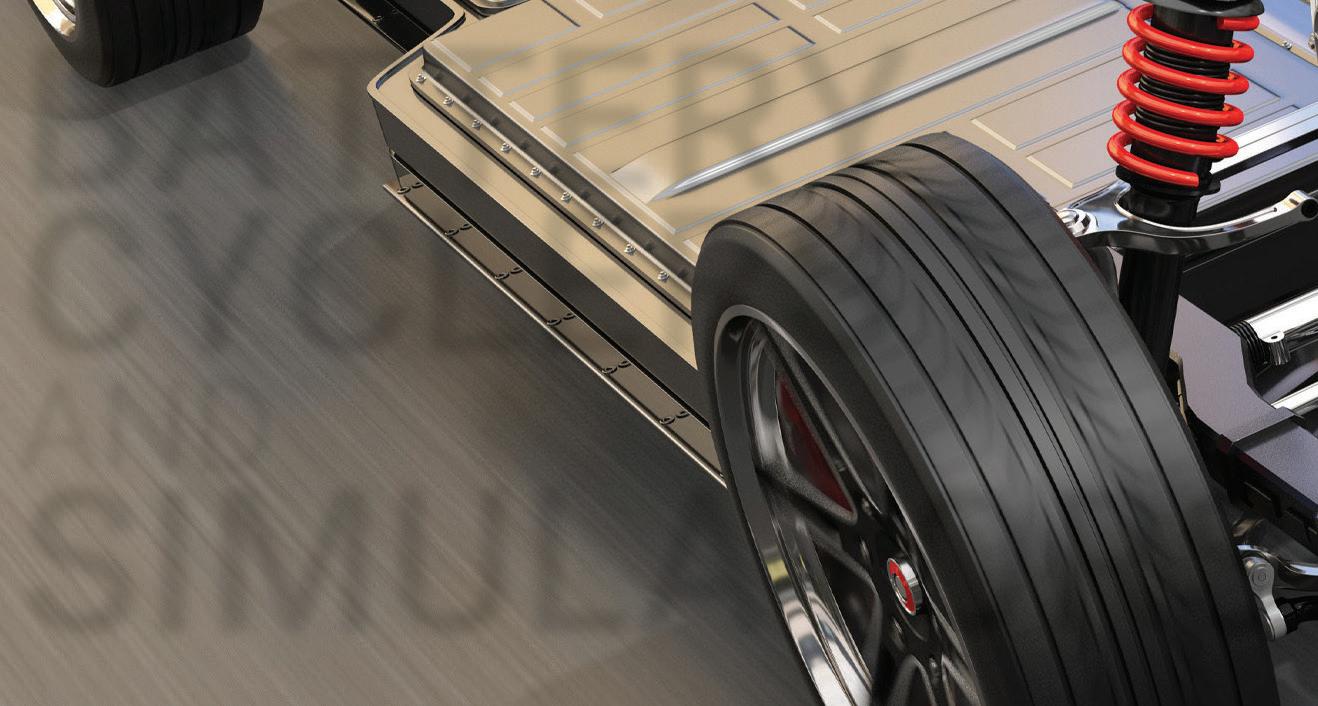
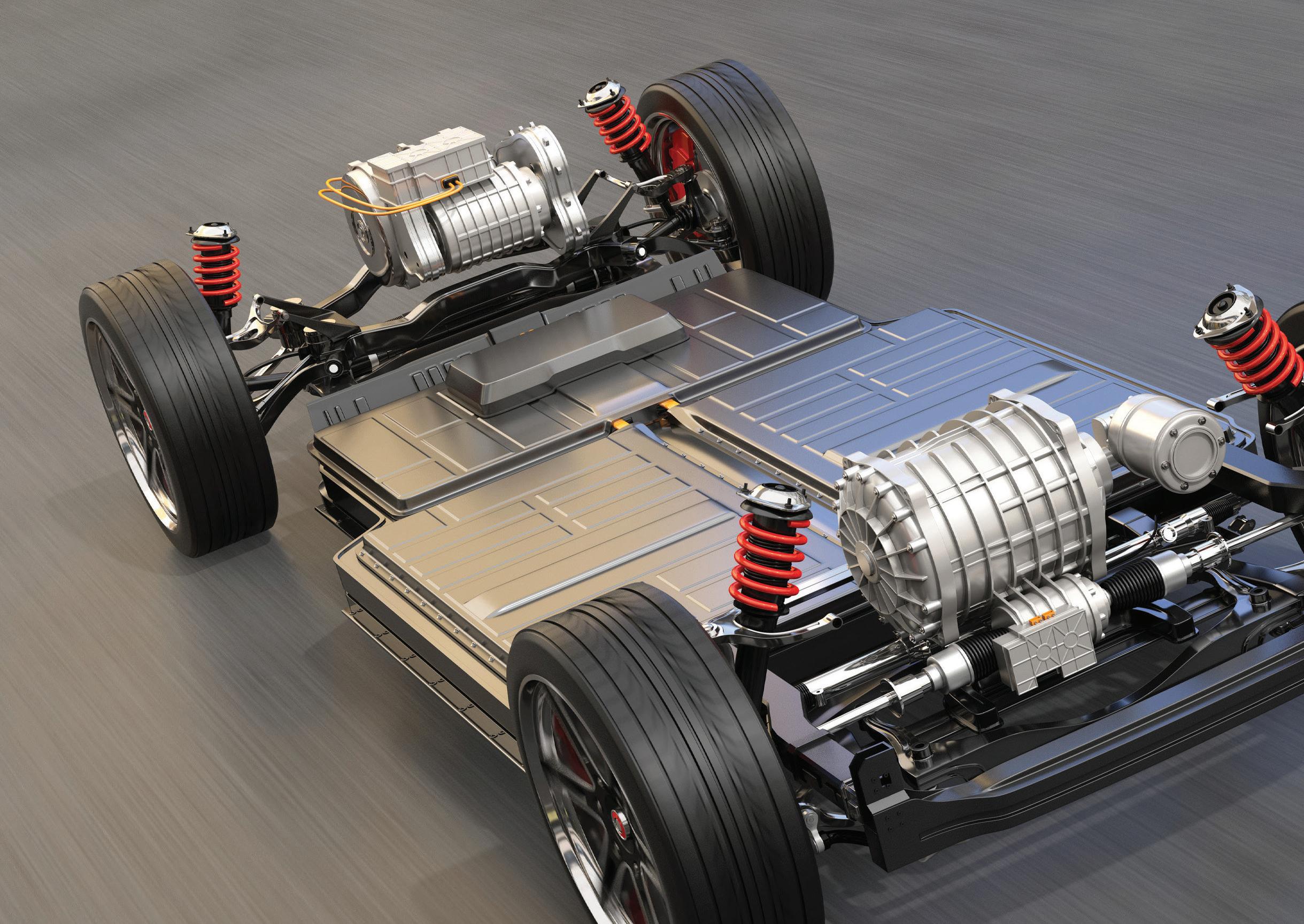
Battery cell, module and pack level charge/discharge cycle testing solutions designed to provide high accuracy measurement with advanced features. Regenerative systems recycle energy sourced by the battery back to the channels in the system or to the grid.
Battery simulation for testing battery connected devices in all applications to confirm if the device under test in performing as intended. Battery state is simulated which eliminates waiting for the charge/discharge of an actual battery. Real time test results include voltage, current, power, SOC%, charge/discharge state and capacity.
To learn more about our Battery Test Solutions visit chromausa.com

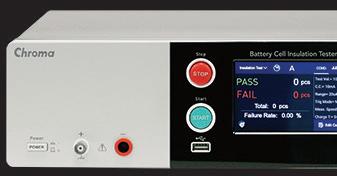
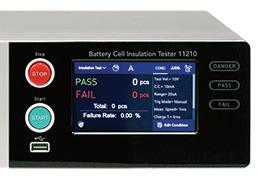
30 Designing a plug-andplay second-life battery system

Magna launches modular motor eDecoupling device for EVs
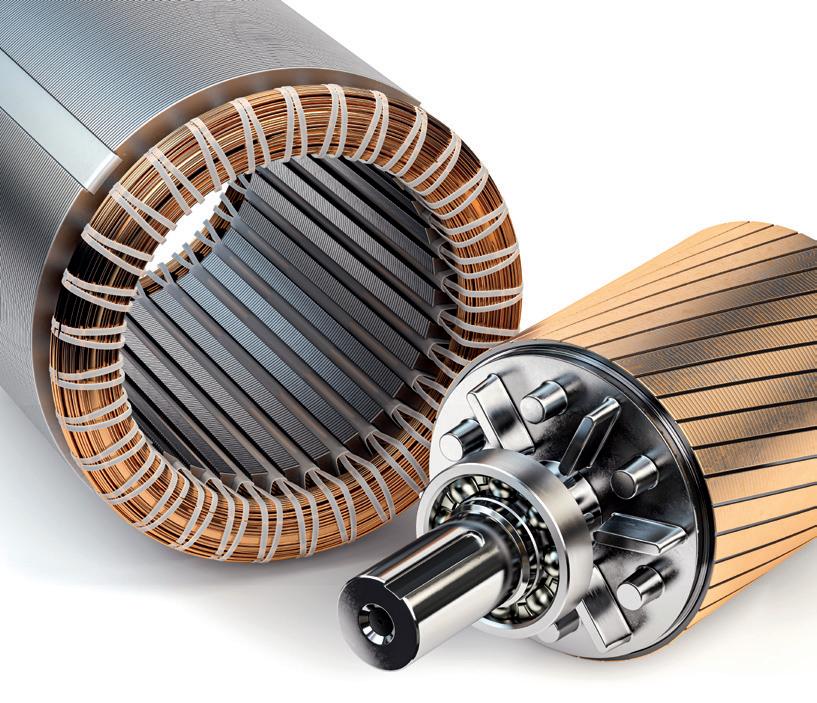
TE Connectivity develops HIVONEX connector and PowerTube charging solutions
Petro-Canada Lubricants launches purpose-built EV fluids
Chroma releases new software platform for multi-coupler EVSE testing
Proterial prototypes 100 kW motor using ferrite magnets
DOE funds 10 projects for lithium extraction from geothermal brines
Lyten opens pilot line in the US to produce lithium-sulfur batteries


DoD to award $37.5 million to Graphite One for graphite mining in Alaska
Green Watt Power releases new 500 W DC/DC converters for EVs
Stellantis and Samsung SDI plan second battery gigafactory in the US
Electric motor impregnation specialist Tecnofirma opens new North Carolina facility
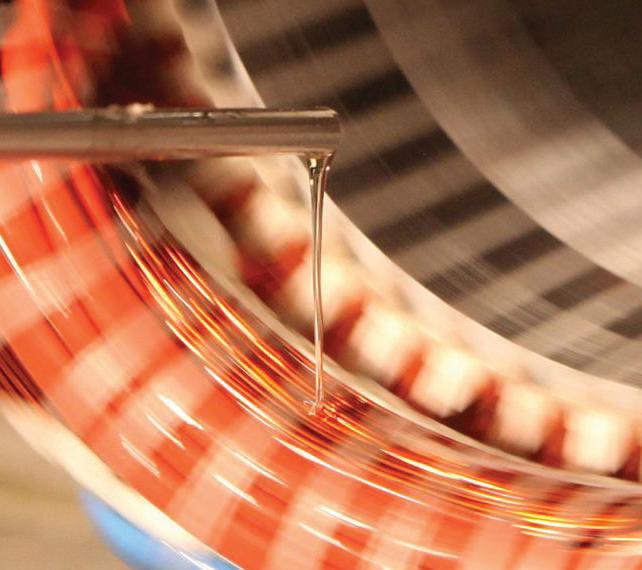
Amprius unveils ultra-high-power, high-energy lithium-ion battery for aviation
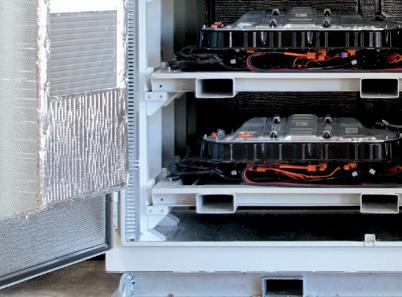
Marelli launches new thermal management system for EVs

Stellantis and Saft unveil EV battery modules with integrated inverter and charger
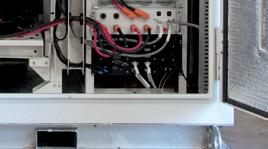
American Battery Factory raises capital for LFP battery gigafactory in Arizona
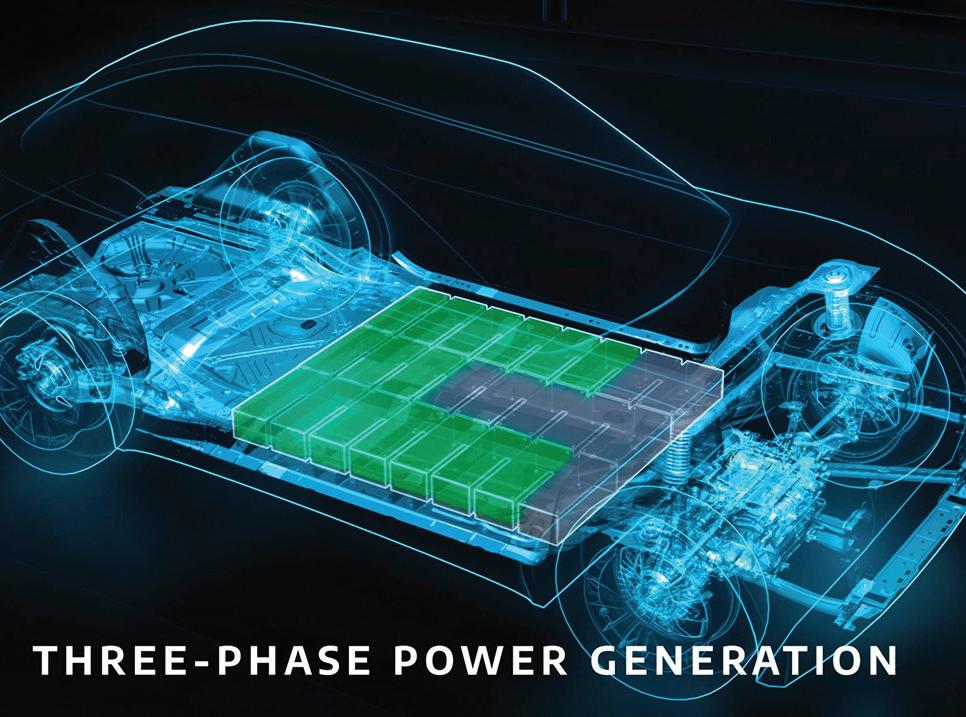



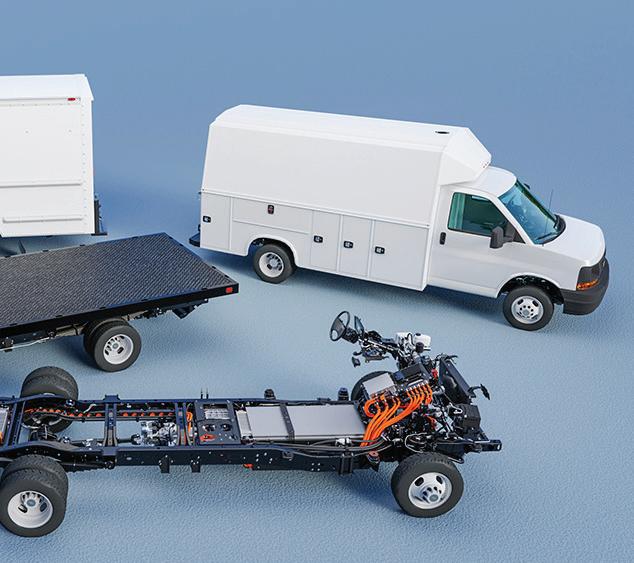

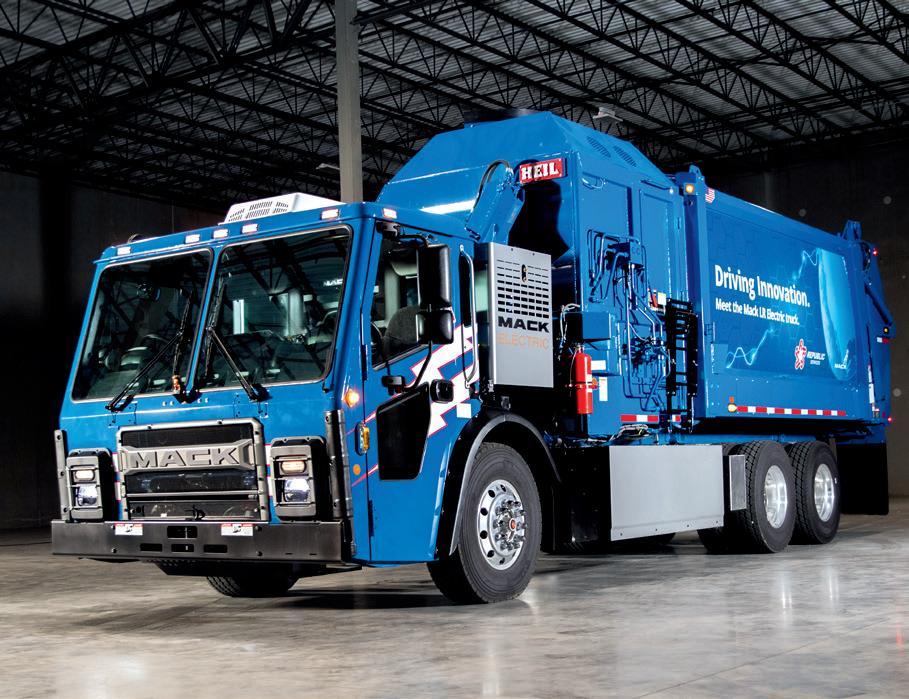



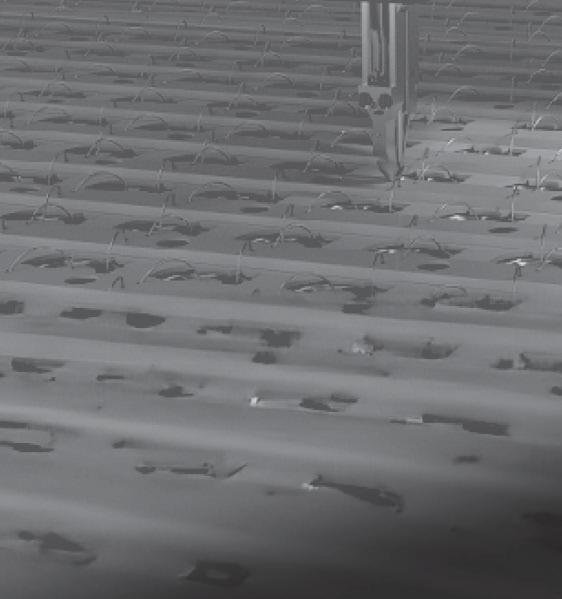


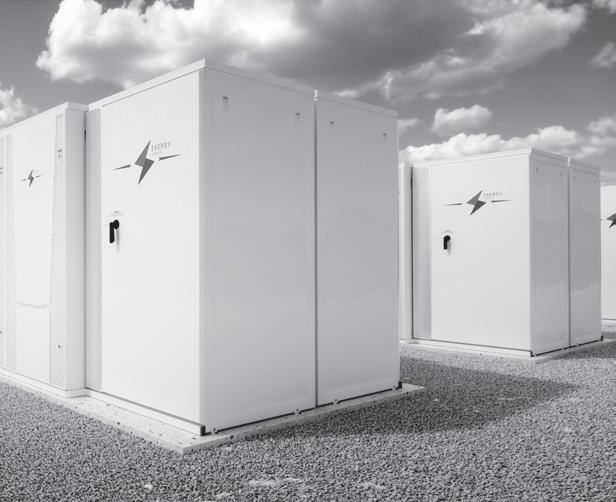







































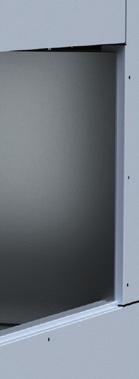


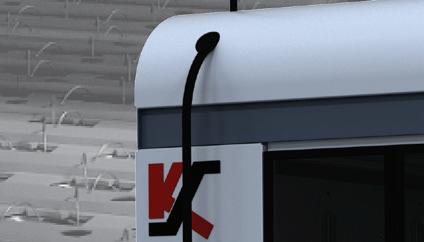




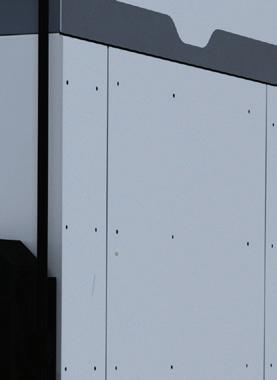

























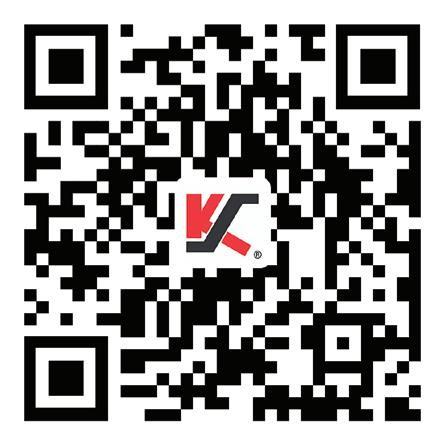
But




Tesla acquires German wireless charging startup Wiferion
ChargePoint introduces initiatives to improve EV charger uptime
ABB e-mobility earns CTEP and NTEP certifications for DC fast chargers





EnviroSpark to provide EV charging stations for 17 AD1 Global hotels in 6 states
New York State allocates $12 million to advance EV adoption
EVgo, in partnership with GM, opens its 1,000th charging stall
Zeem to provide Hertz with EV charging at LAX
EVBox introduces 400 kW EVBox Troniq High Power charging station
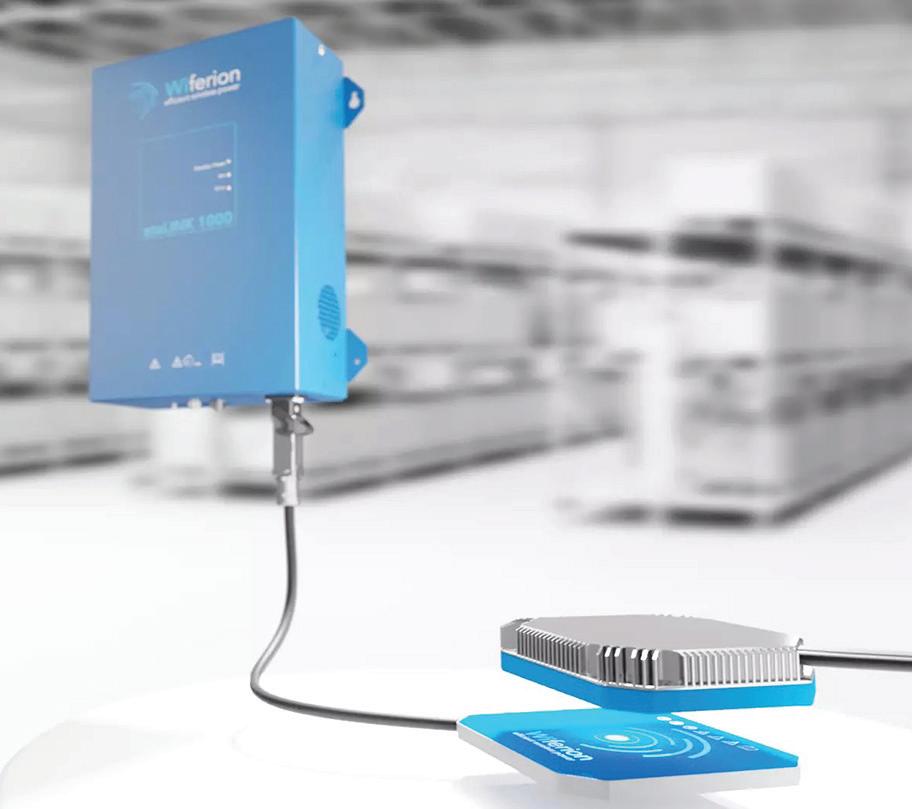
Siemens to acquire heavy-duty EV charging specialist Heliox
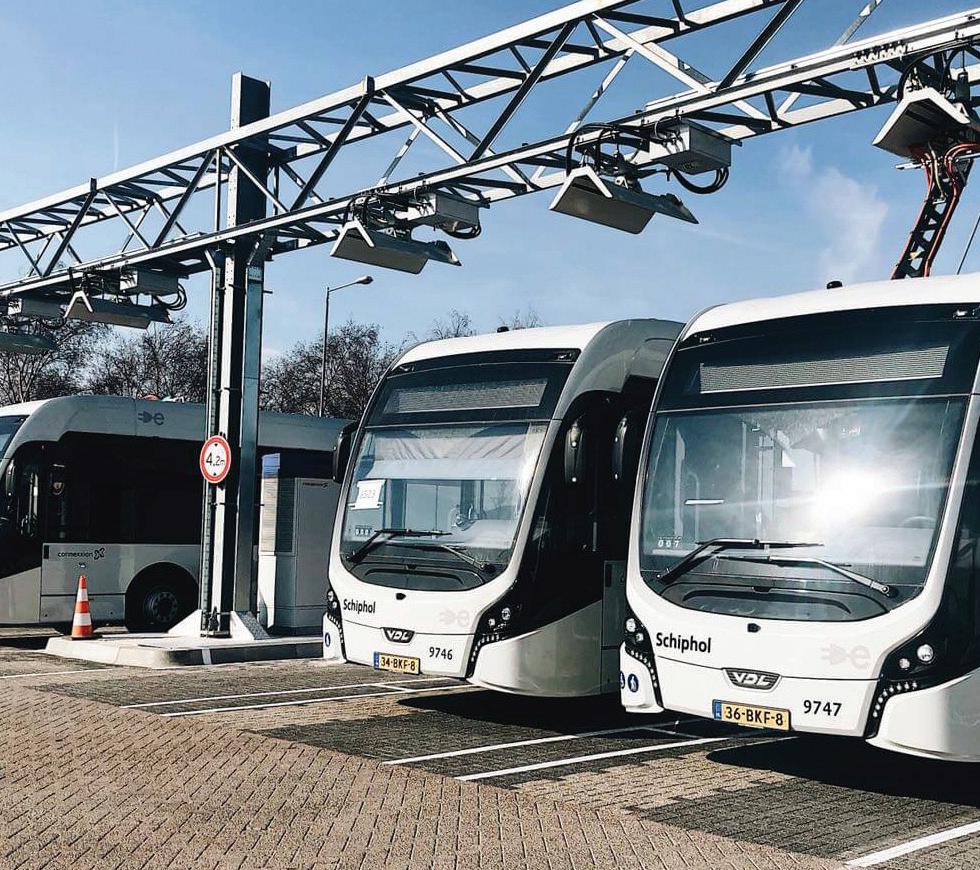
GM to offer V2H bidirectional charging tech for all Ultium-based EVs
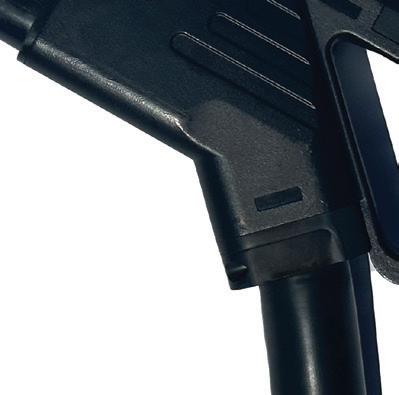

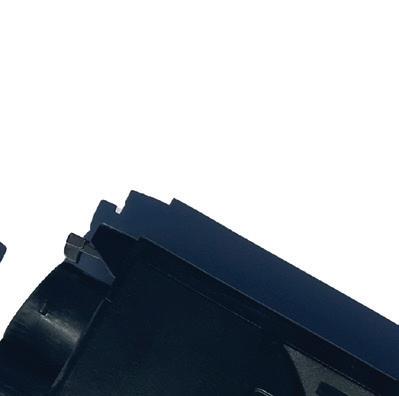

Comcast, NovaCHARGE collaborate on smart EV charging tech
TeraWatt Infrastructure breaks ground on public EV charging hub for fleets
ADS-TEC Energy and eliso to install over 1,000 charging points in Germany

Form hairpins, I-pins & stator connector pins with ease using WAFIOS' new









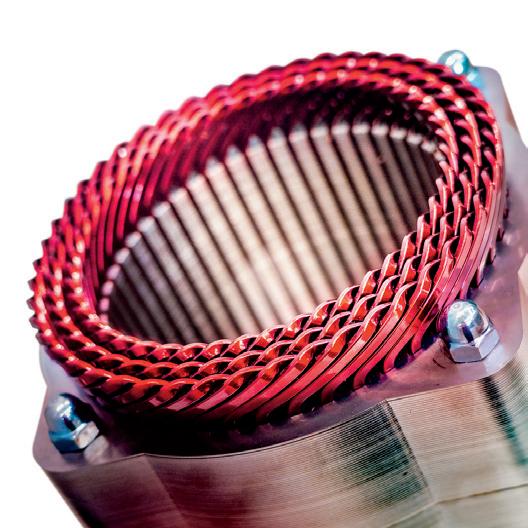

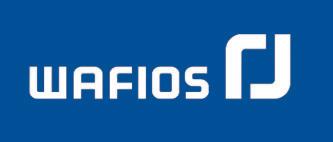








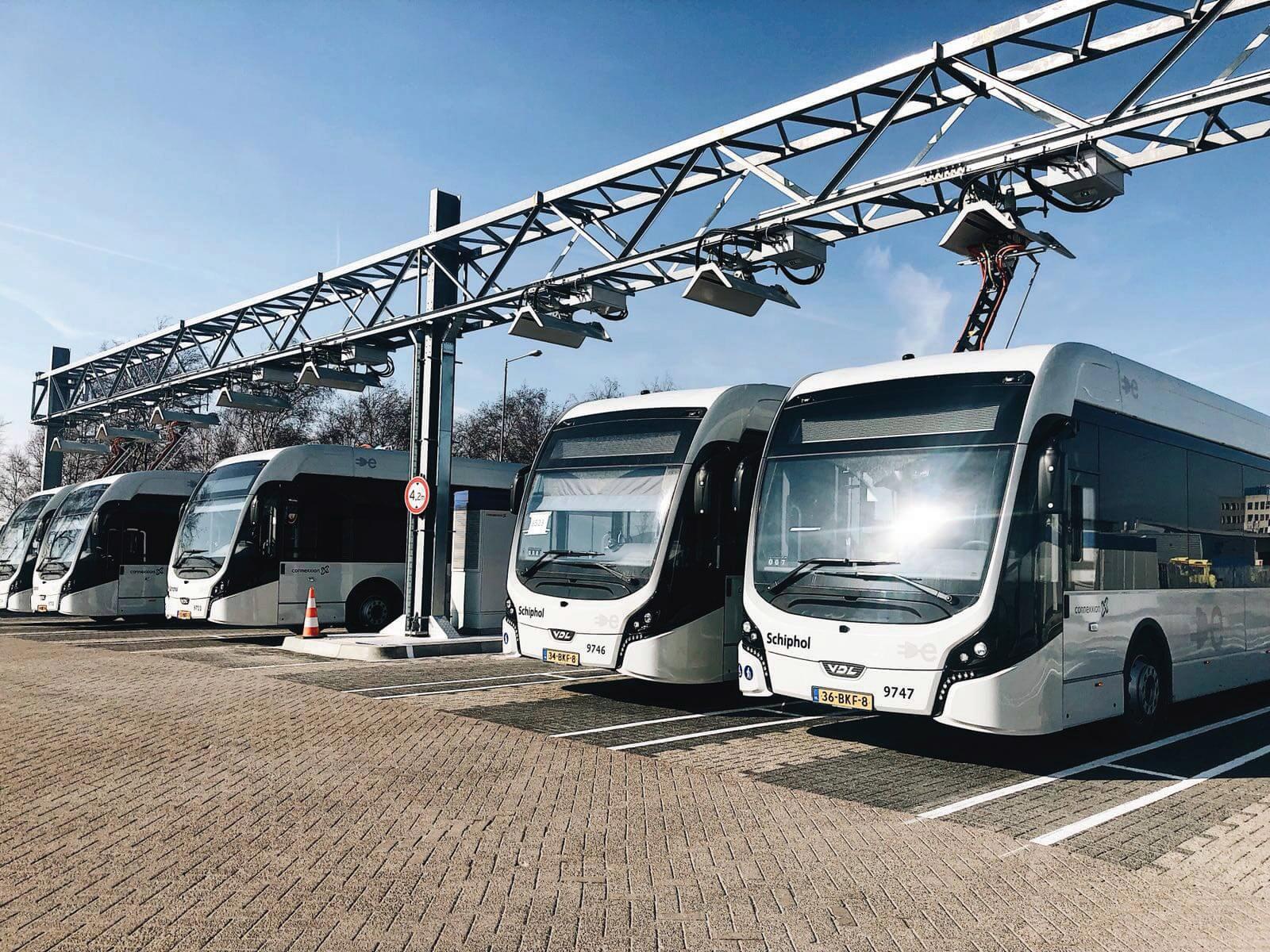
With the rising demand driven by electromobility, it is time for battery manufacturers machine builders to embrace the Digital Enterprise. By seamlessly integrating digital worlds, our solutions offer increased transparency, speed, and efficiency design to production ramp-up and recycling. Unlock new levels of productivity Xcelerator, our simple, flexible, and open digital business platform that helps industry to innovate faster and become Digital Enterprises. www.siemens.com/battery

manufacturing manufacturers and integrating the real and efficiency from battery productivity with Siemens the battery
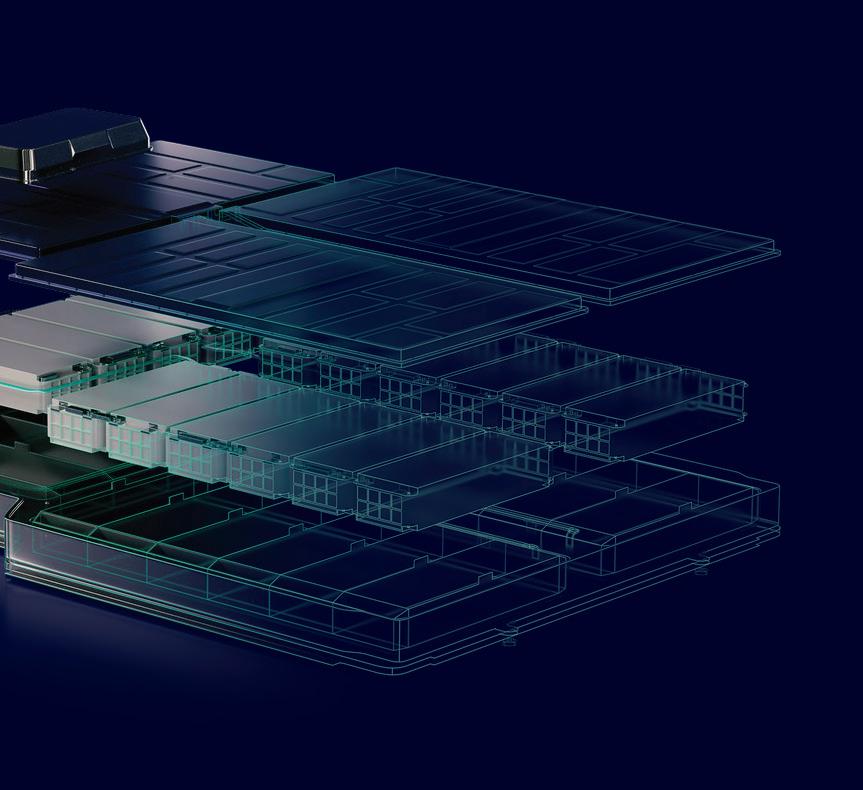
Publisher
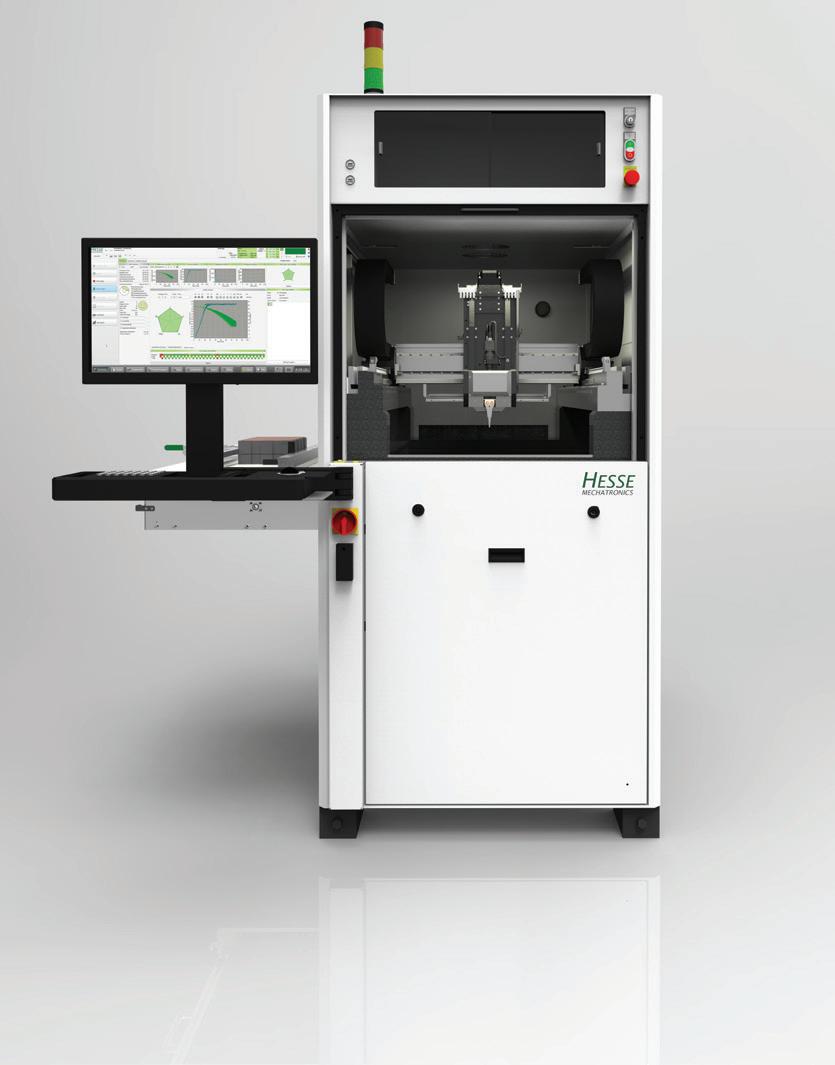
Associate Publisher
Senior Editor
Technology Editor
Dir Business Dev









Account Executive
Events Director
Graphic Designer
Christian Ruoff
Laurel Zimmer
Charles Morris
Jeffrey Jenkins
Joel Franke
Jeremy Ewald
Chloe Theobald
Tomislav Vrdoljak
Contributing Writers

Jeffrey Jenkins
Charles Morris
Christian Ruoff
John Voelcker
For Letters to the Editor, Article Submissions, & Advertising Inquiries Contact: Info@ChargedEVs.com
Cover Image by

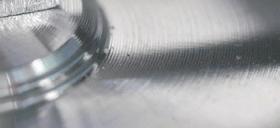



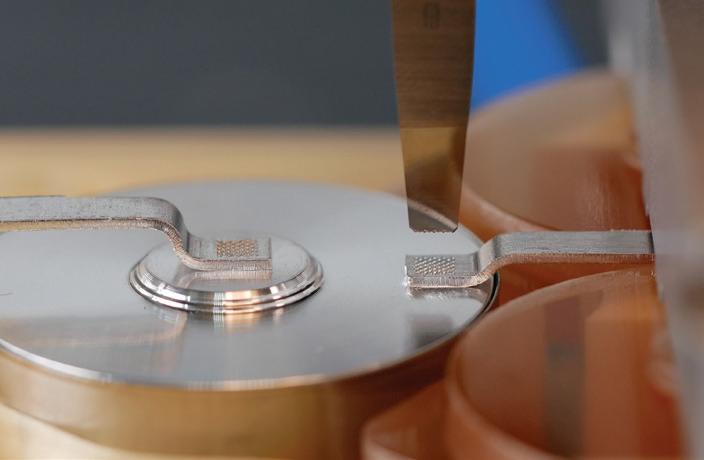

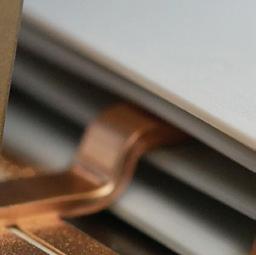

Special Thanks to

Roxane Bay
Kelly Ruoff
Sebastien Bourgeois
ETHICS STATEMENT AND COVERAGE POLICY AS THE LEADING EV INDUSTRY PUBLICATION, CHARGED ELECTRIC VEHICLES MAGAZINE OFTEN COVERS, AND ACCEPTS CONTRIBUTIONS FROM, COMPANIES THAT ADVERTISE IN OUR MEDIA PORTFOLIO. HOWEVER, THE CONTENT WE CHOOSE TO PUBLISH PASSES ONLY TWO TESTS: (1) TO THE BEST OF OUR KNOWLEDGE THE INFORMATION IS ACCURATE, AND

(2) IT MEETS THE INTERESTS OF OUR READERSHIP. WE DO NOT ACCEPT PAYMENT FOR EDITORIAL CONTENT, AND THE OPINIONS EXPRESSED BY OUR EDITORS AND WRITERS ARE IN NO WAY AFFECTED BY A COMPANY’S PAST, CURRENT, OR POTENTIAL ADVERTISEMENTS. FURTHERMORE, WE OFTEN ACCEPT ARTICLES AUTHORED BY “INDUSTRY INSIDERS,” IN WHICH CASE THE AUTHOR’S CURRENT EMPLOYMENT, OR RELATIONSHIP TO THE EV INDUSTRY, IS CLEARLY CITED. IF YOU DISAGREE WITH ANY OPINION EXPRESSED IN THE CHARGED MEDIA PORTFOLIO AND/OR WISH TO WRITE ABOUT YOUR PARTICULAR VIEW OF THE INDUSTRY, PLEASE CONTACT US AT CONTENT@CHARGEDEVS.COM. REPRINTING IN WHOLE OR PART IS FORBIDDEN EXPECT BY PERMISSION OF CHARGED ELECTRIC VEHICLES MAGAZINE.
Your












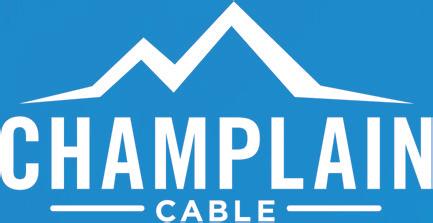
Here at Charged, we’re not into “gotcha” journalism or clickbait, and we don’t follow the popular practice of stirring up controversy in order to increase internet tra c. Most of our material consists of interviews with EV industry execs and engineers, and news derived from o cial company announcements, and we report what we hear.



Yes, we editorialize, but readers will nd that our editorial opinion is pretty simple and pretty consistent: EVs are better machines in many ways, and anything that impedes EV adoption (be it technical bottlenecks, industry inertia or political agendas) is bad. Di erent EV industry players have di erent ideas about how best to reach our common goal, and we generally let them tell their stories in their own words.
John Voelcker’s article in this issue, page 66, which explains how the failings of public charging providers—especially Electrify America— drove automakers into the arms of Tesla, is likely to cause o ense in some quarters, and the situation is unfortunate. We’ve had some great conversations with EA execs over the years, and have run many, many articles about the company’s achievements. But the article is no opinion piece— it’s the result of reporting on more than a dozen conversations that John had with execs and engineers at automakers and other companies. e dissatisfaction with EA and others is real, it’s news, and it’s something the industry needs to examine and act on.
Let’s be clear: we don’t want to see any charging company wither away—we want to see healthy competition that forces all the charging providers to raise their games, and provides more choices for EV drivers. We don’t want to see any one company dominate the public charging space, and we welcome the news that seven automakers will work together to build a major new US charging network alongside Tesla, EA and the others.
Yes, charging is changing, folks. Major upheavals are not uncommon in new, rapidly growing industries, and early innovators don’t always go the distance (remember AOL? Yahoo? MySpace?). We don’t know how things will shake out, but again, our position is simple: more and better charging choices mean more EV adoption, and that’s good news.
Electric utilities are also major players in the charging space—both directly, as charging station operators, and indirectly, as providers of the power. Utilities have come in for criticism from public charging providers, both for being slow to build the necessary grid hookups and, in a few cases, for unfairly using their monopoly power to the detriment of independent networks. In this issue, Peter Westlake of the Orlando Utilities Commission addresses both these issues and much more, page 74.
Speaking of utilities, vehicle-to-grid technology is a game-changer that’s right around the corner—or is it? In this issue’s Charging Forward column, page 82, Senior Editor Charles Morris reports on conversations he’s had with players in various parts of the charging ecosystem—some of them all in on V2G, some skeptical.

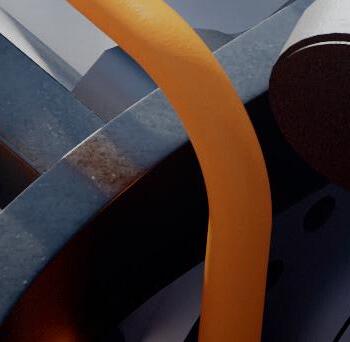
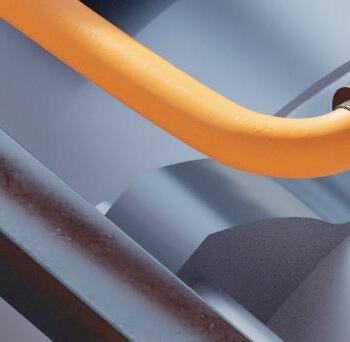
As a subsidiary brand of the Coroplast Group, we develop innovative cable & wire solutions. Discover our products for e-mobility:



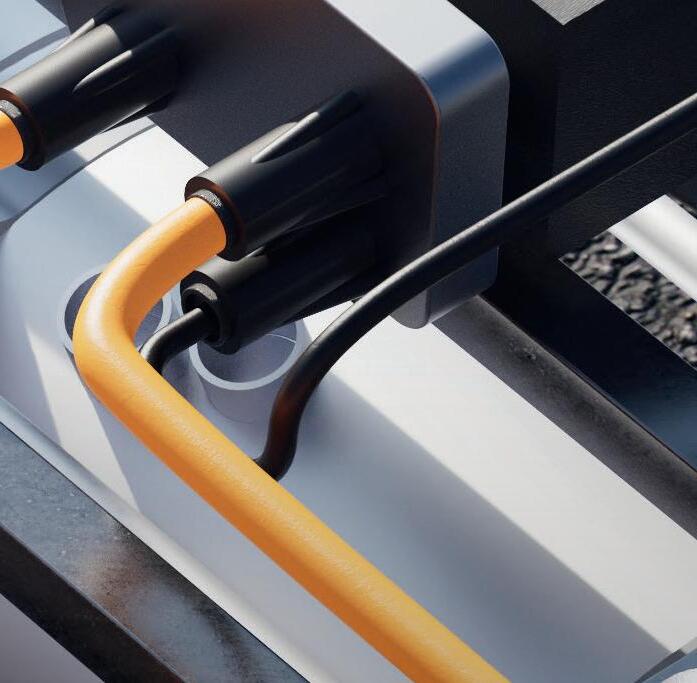

• For tightest installation spaces – extremely flexible
• Special conductor design for excellent ultra sonic welding properties






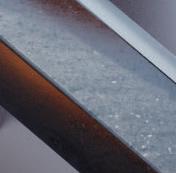

• Highest centricity supports an optimal automated processing
• Excellent sealing properties
• Free of PCB and talcum

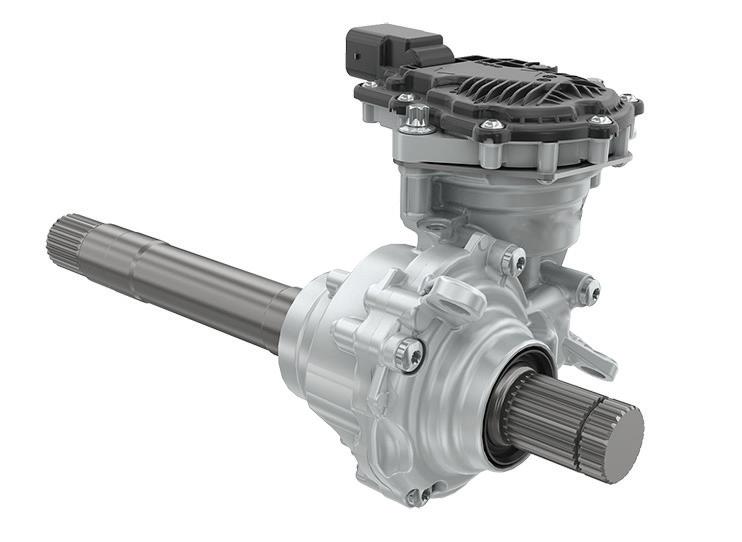
Magna, a Canadian automotive supplier, has begun production of a modular eDecoupling device to support several EV programs for a German premium vehicle OEM.
Magna’s electro-magnetic eDecoupling disconnects the e-motor from the drivesha in EVs when propulsion power isn’t needed, saving energy and improving eciency. It reduces drag torque losses of the e-motor and gearbox to boost electric driving range, while its eDecoupling controls so ware runs all shi ing sequences smoothly. e modular unit o ers seamless integration via powertrain controls to improve noise, vibration and harshness (NVH), and also features compact packaging and quick activation of less than 100 milliseconds. Magna’s Lannach, Austria powertrain factory will manufacture the new unit.
“Due to the compact design of the unit, we’ve minimized added package space and weight in both axial and radial directions, which has ensured that it is scalable for use across electric and hybrid vehicles from B segment up to SUVs and LCVs,” said Diba Ilunga, President at Magna Powertrain.
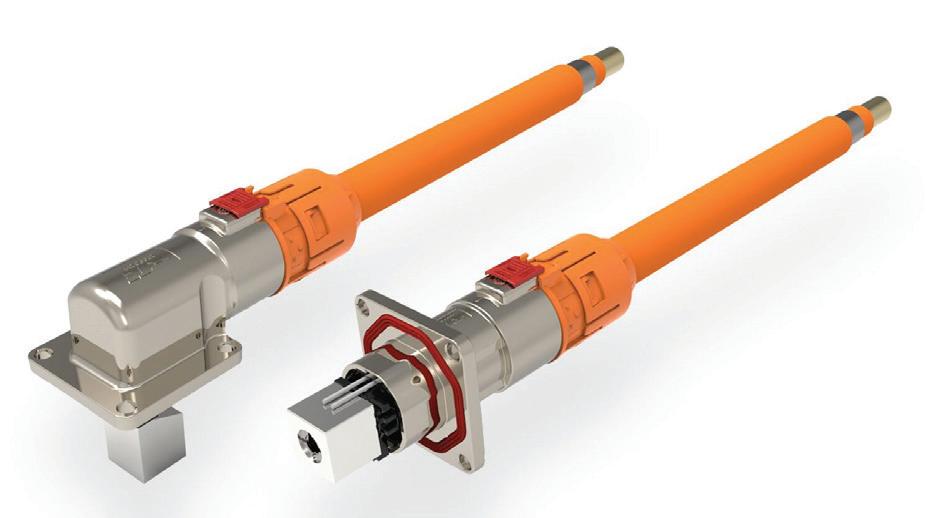
TE Connectivity has developed new connector and charging solutions for the EV transition. e HIVONEX range o ers modular, scalable products for harsh industrial and commercial vehicle settings, and includes the new PowerTube Connector Series for large electrical loads such as those in trucks, buses, and construction and agricultural vehicles. Other products in the portfolio include:
• IPT-HD Power Bolt Connector: a bolted solution for motor control unit (MCU), e-axle and e-motor applications. e connector can withstand extreme temperatures and engine-level vibrations, and o ers a new shielding design to improve electromagnetic compatibility (EMC) performance. It supports up to three positions: 50, 70, and 95 mm² wire size; and pre-made wire harnesses.
• ICT Charging Inlets: available in kits and pigtail cable assemblies.
• HVA HD400 Connector: developed for high-voltage accessory vehicle applications such as HVAC, heaters, hydraulic pumps and electronic power steering. is solution is capable of withstanding extreme temperatures (-40° C to +140° C) and transmission-level vibrations, meets IP68/IP6K9K ratings, and allows two or three conductors in the same interface.
“ e HIVONEX connector and charging products are designed for extreme environments—safe connectivity, scalability and high voltages for those operating in the eld,” said Sebastien Dupre, Director of Product Management for the E-mobility Product Portfolio at TE.

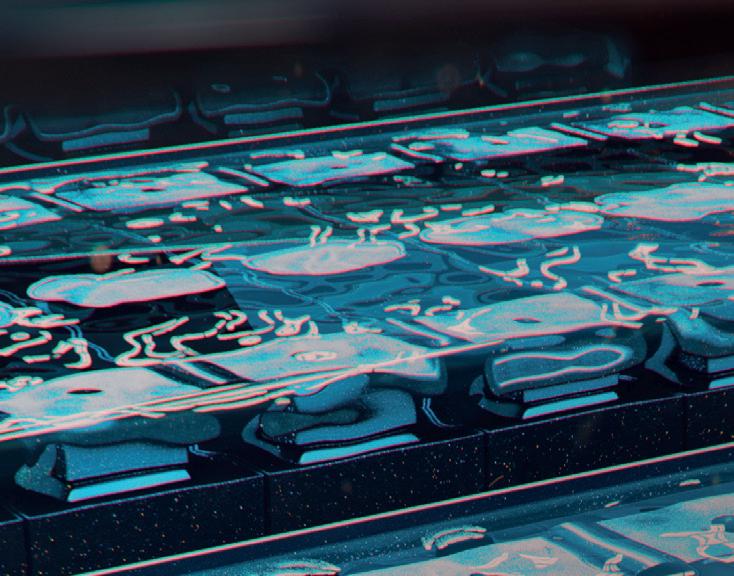




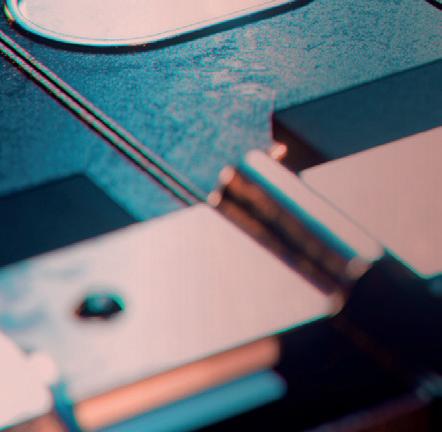


















































Petro-Canada Lubricants, a brand of oil company HF Sinclair, has launched a line of purpose-built lubricant solutions for EVs, including the following brands:
• EVR Driveline
• EVR ermal Management
• EVR Motor Greases
e company says the EVR uids and greases help OEMs create new driveline, axle and battery technologies for automotive, heavy- and medium-duty transportation and other industries by improving material compatibility, power transmission and equipment performance.
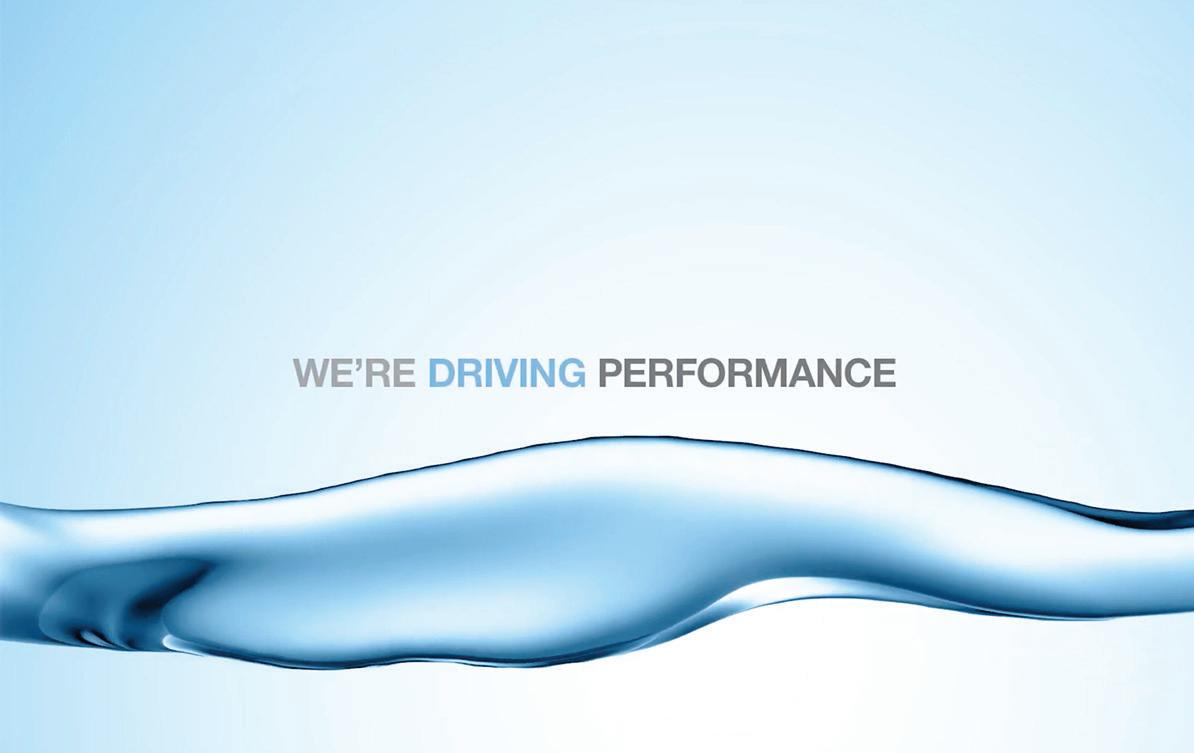
“Our new EVR product line will further enable OEMs, commercial eets and consumers to realize the promise of EV technology,” said Alex Buczek, Global Segment Manager Transportation at Petro-Canada Lubricants. “Our drive to continuously innovate has led us to launch EVR, our rst brand of uniquely formulated uids for EVs. We’re looking forward to supporting the development of technologies that drive the reliability and performance of EVs.”
Chroma, a test and measurement instrumentation company, has released a new so ware platform that has multi-threaded testing functionality for electric vehicle supply equipment (EVSE) test solutions.
PowerPro 5 can simulate up to four vehicles having identical or di erent communication protocols such as GB/T, CCS or CHAdeMO. e so ware controls the EVSE to serve multiple connectors at once based on the given test circumstances, and can simulate plugging in at di erent times in order to comprehensively test the equipment’s power sharing capability. is cuts testing time by 40% compared to single-coupler testing, according to the company, increasing test capacity.
Simulating single and multiple vehicle signals allows four-coupler power distribution testing and communication protocol veri cation.
Proterial (previously Hitachi Metals), a manufacturer of iron and metals, has found that optimizing the design of a motor using its patented high-performance ferrite magnet NMF-15 can achieve the same output as an EV drive motor that uses neodymium magnets.
Proterial has validated maximum power of 102 kW and maximum rotation speed of 15,000 rpm, compared to 110 kW and 10,000 rpm for a neodymium magnet. e output of neodymium magnets for EV drive motors and generators is predicted to rise as EV production increases, but neodymium magnets employ neodymium, a light rare earth, plus dysprosium and terbium, heavy rare earths that are in short supply.


Fast. Accurate. Reliable.
Scan to learn more about our battery pack leak test solutions

This inverter reference design offers a modular electrical and mechanical integration of a 3-phase 1200V/340A550A SiC MOSFET Intelligent Power Module from CISSOID combined with the OLEA® T222 FPCU control board and application software from Silicon Mobility.
This unique hardware and software platform supports the rapid development of e-motor drives up to 350kW/850V, setting new levels in terms of power density and efficiency.
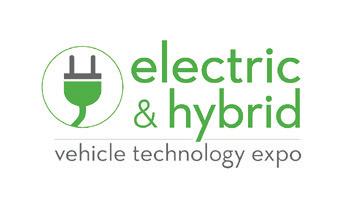
• Up to 350kW/850V
• Modular SiC power module

• Low-ESL DC-Link capacitor



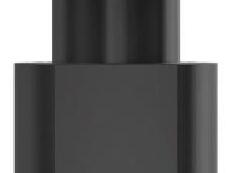
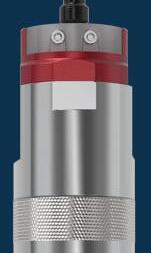
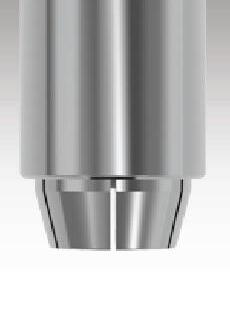

• 900V/400A EMI filter
• Liquid cooling
• Robust SiC gate driver


• OLEA® T222 FPCU controller



• DC & phase current sensors


• Advanced control algorithms
• SVPWM or DPWM up to 50kHz
Powered by the CISSOID Intelligent Power Module & Silicon Mobility’s OLEA® T222 FPCU & OLEA® APP INVERTER Software. www.cissoid.com
e US DOE has announced funding of $10.9 million for 10 projects in 9 states, designed to advance innovative technologies for the extraction and conversion of battery-grade lithium derived from US geothermal brine sources.
Two topic areas were chosen for the projects. e rst, “Field Validation of Lithium Hydroxide Production from Geothermal Brines,” involves pilot or demonstration projects to validate cost-e ective, innovative lithium extraction and lithium hydroxide conversion technologies. ese projects will be led by ExSorbtion and Energy Exploration Technologies.
e second topic area, “Applied Research and Development for Direct Lithium Extraction from Geothermal Brines,” encompasses R&D projects to advance emerging direct lithium extraction (DLE) process technologies to increase e ciency, reduce waste generation and/or reduce cost. Eight projects were chosen, led by University of Illinois at Urbana-Champaign, University of Texas at Austin, New Mexico Institute of Mining and Technology, Penn State University Park, Rice University, Lawrence Livermore National Laboratory, Paci c Northwest National Laboratory and University of Virginia.
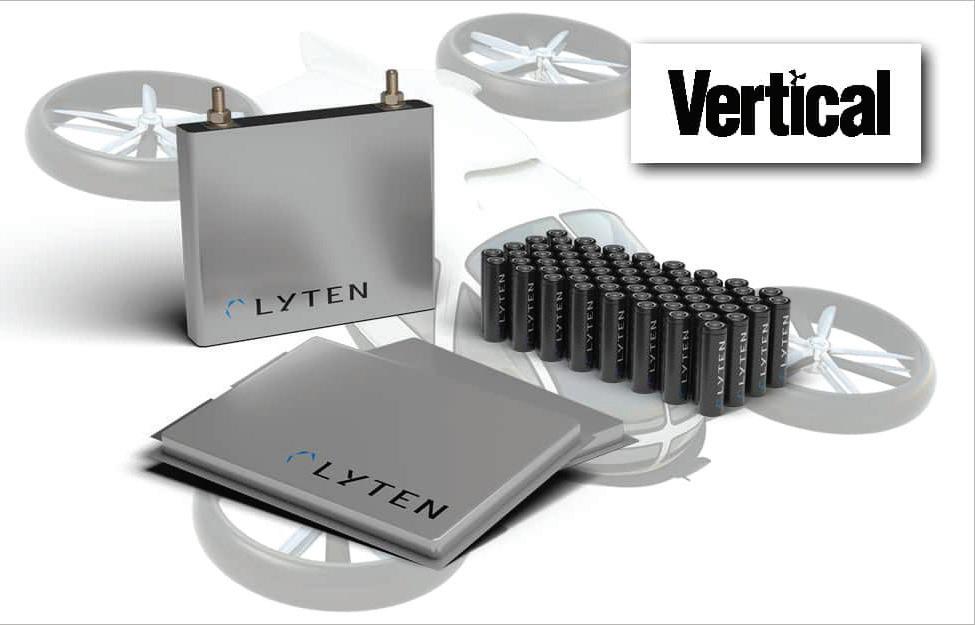
Battery material supplier Lyten has commissioned a lithium-sulfur battery pilot line with a capacity of 200,000 cells per year at its facility in Silicon Valley. It will begin delivering commercial battery cells to early-adopting customers within the defense, automotive, logistics and satellite sectors in 2023.
e Lyten battery pilot line will produce lithium-sulfur cells in a range of pouch and cylindrical form factors to support a variety of customer requirements. It will allow Lyten to further develop manufacturing equipment capabilities for scaled lithium-sulfur cell production. e company says the pilot line will deliver cells that exceed conventional nickel-cobalt-manganese (NCM) lithium-ion battery energy densities.
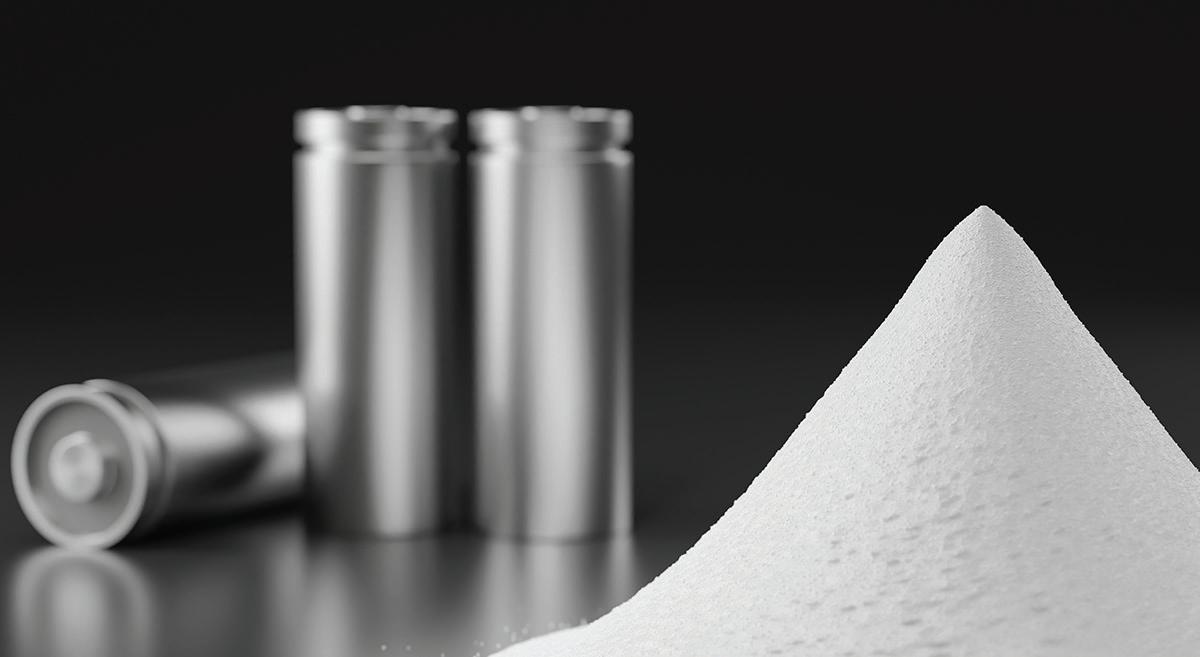
To meet the expected demand for lithium-sulfur batteries, Lyten is exploring possibilities in multiple US states to expand its 3D graphene production capacity and build its rst lithium-sulfur cell gigafactory. Lyten is also securing domestic supply for its NMC-free battery materials, including sulfur and lithium.
“A projected 50% lower-cost bill of materials compared to conventional lithium-ion chemistries will enable signi cantly lower-cost automotive battery packs, making an EV eet economically achievable,” said Celina Mikolajczak, Lyten’s Chief Battery Technical O cer. “ e high energy density of the chemistry will make it appealing for application in heavy vehicles such as delivery vans, trucks, buses and construction equipment, as well as in aviation and satellites.”


















Our trusted Gocator smart 3D laser profilers solve a wide range of universal EV Battery manufacturing quality control applications including scanning electrode coating thickness; cylindrical and prismatic battery surface inspection; cell, module, and pack dimensional measurement (LxWxH); battery weld seam inspection; and final battery installation inspection.

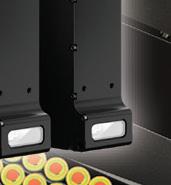




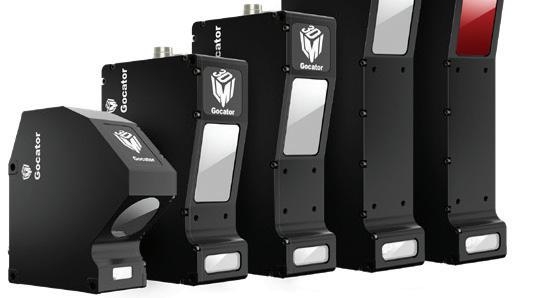


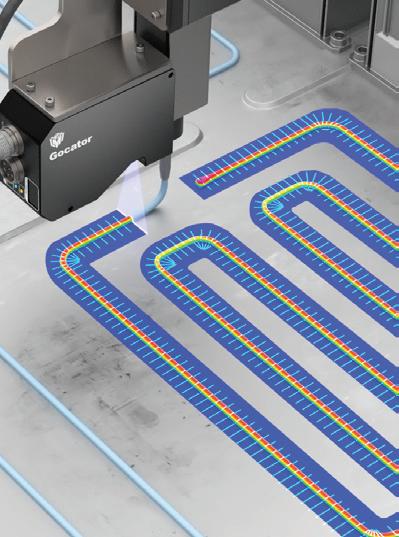
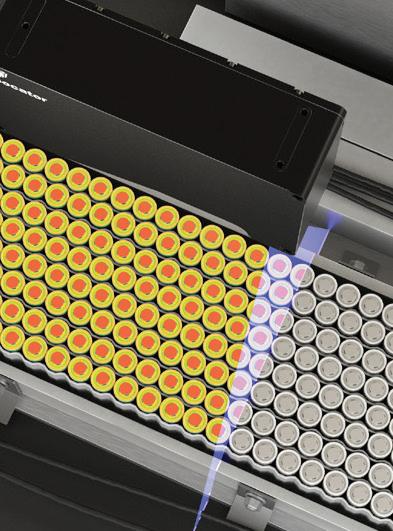



















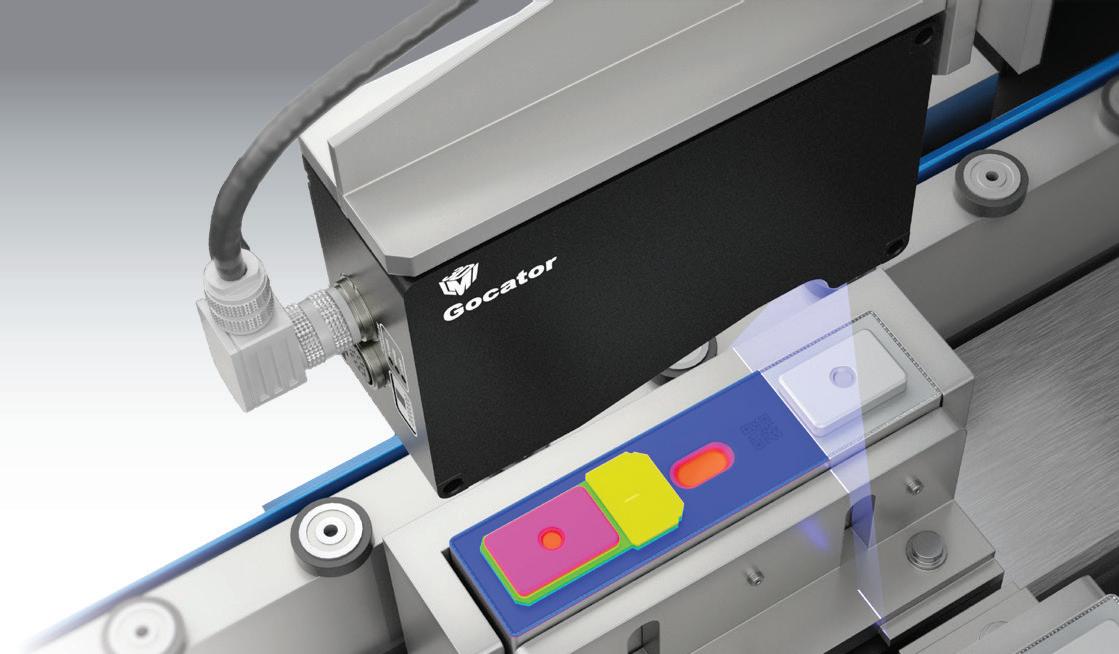

Using funds appropriated by the In ation Reduction Act, the O ce of the Assistant Secretary of Defense for Industrial Base Policy will award US mining company Graphite One $37.5 million to support development of a graphite supply chain solution based at the company’s Graphite Creek deposit on the Seward Peninsula about 37 miles north of Nome.
e grant follows the designation of graphite by the Defense Production Act as a battery material “essential to national defense.” e US is currently completely dependent on imported graphite, and China is the leading producer.

e proposed Graphite One project is a vertically integrated enterprise to mine, process and manufacture anode materials primarily for the lithium‐ion EV battery market. Initial processing into concentrate at a plant adjacent to the mine would be followed by the manufacture of natural and arti cial graphite anode materials and other value‐added graphite products from the concentrate and other materials at a proposed facility, expected to be located in Washington State. Plans also call for a co-located recycling facility to reclaim graphite and other battery materials.
Green Watt Power, a division of Powerland, has announced a new series of IP67-rated DC/DC converters for EVs.
e fully enclosed, IP67-ruggedized EVD500 Marble Series o ers two DC input ranges featuring output voltages of 12 V and 24 V to power auxiliary EV functions such as lights, instruments and accessories. It has Enable/ Remote on/o and a quiescent current draw of less than 30 µA for battery conservation. e EVD500 Marble Series is input-to-output isolated and protected against input under-voltage lockout, reverse polarity, over-voltage, short-circuit and over-temperature.
Main features include:
• DC input ranges of 30-65 V and 50-130 V
• DC output voltage of 13.5 V or 27.5 V
• Output power of 500 W to 5,000 W with parallel connection of up to 10 units
• E ciency of up to 93%
• All-around protections: IRPP, UVLO, OVP, SCP, OTP
• 1.5 kV input-to-output isolation test voltage
• Designed to meet IEC, UL and CSA safety requirements

• Working temperature range: -40° C to 85° C Tc
• Available with Molex connector or ying leads
“Unlike most DC/DC converters in the EV market, the EVD500 has a constant current function, so it can connect directly to a battery load,” the company said.



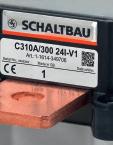
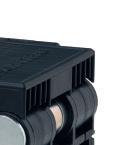
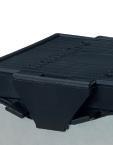






Amsterdam-headquartered multinational automaker Stellantis and South Korean EV battery maker Samsung SDI have entered into a provisional agreement under their existing StarPlus Energy joint venture to build a second EV battery factory in the US.


eir rst factory is targeted to launch in the rst quarter of 2025 with an annual production of 33 GWh. It is under construction in Kokomo, Indiana. e second, whose location is under review, is expected to start production in early 2027 with an initial annual capacity of 34 GWh. “ is new facility will contribute to reaching our aggressive target to o er at least 25 new electric vehicles for the North American market by the end of the decade,” said Stellantis CEO Carlos Tavares.

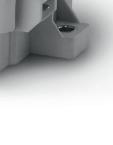

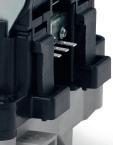




Tecno rma, a maker of impregnation machines for electric motors, has opened a new American branch in Charlotte, North Carolina. e company now has four di erent global branches, located in the most strategic areas for its market.




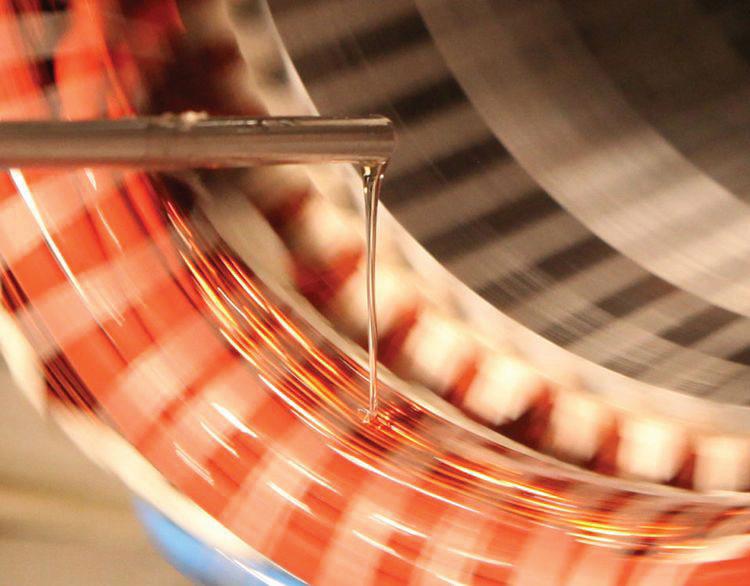
e Charlotte facility includes a well-equipped laboratory to validate technical cycles based on customer needs, as well as a spare parts warehouse that provides immediate availability of critical components and o ers a dedicated hot-line service.

Tecno rma boasts over 70 years of experience in surface treatment, and is now moving into the e-mobility market. Impregnation of the copper windings and coils in electric motor rotors and stators provides secondary insulation, increases mechanical stability, improves heat dissipation, and adds protection from humidity, dirt and chemicals. Impregnation can greatly improve the e ciency and durability of a motor.
Tecno rma o ers a wide range of solutions for the insulation of windings, including both traditional and hairpin winding. e company works with customers to develop the best impregnation technology and method for a particular application. “An incorrect method or insu cient impregnation can considerably shorten the working life of your electric motor,” notes the company.
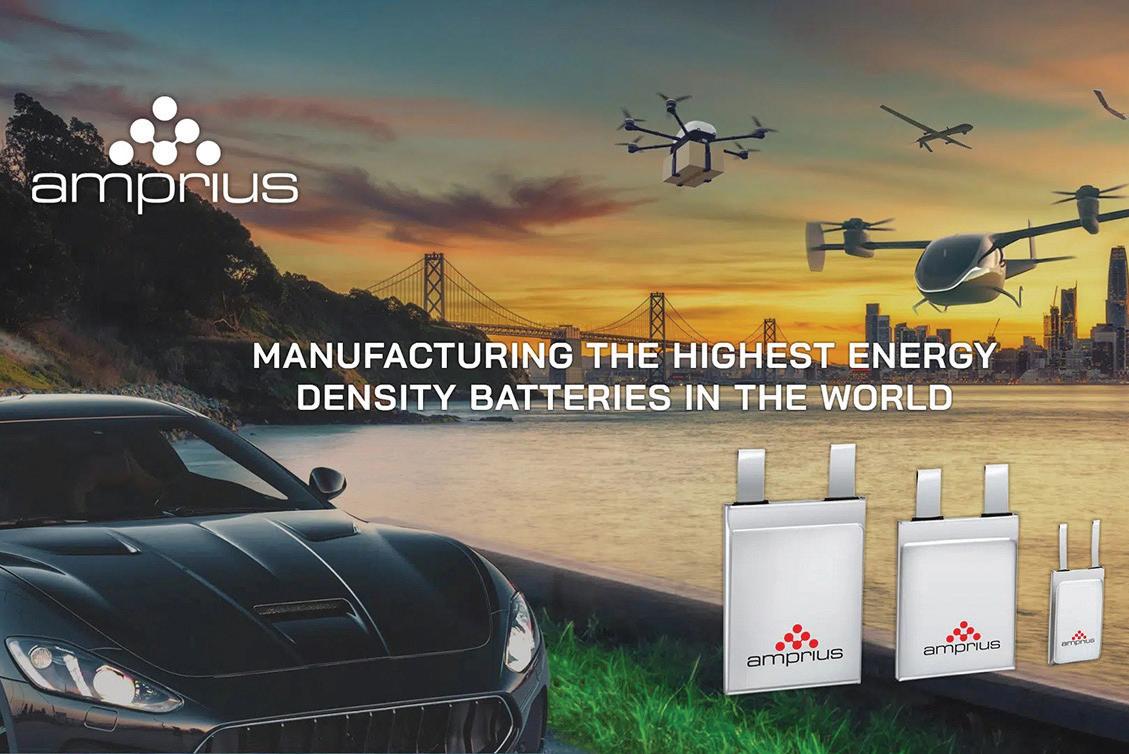
Amprius Technologies, a battery manufacturer in California, has announced a new ultra-high-power, high-energy lithium-ion battery cell that discharges at 10C and delivers 400 Wh/kg speci c energy.
e cell is designed to deliver high power output, making it suitable for the electric vertical takeo and landing aircra (eVTOL) and unmanned aerial vehicle (UAV) industries.
Amprius aims to o er samples by the end of 2023 and commercialize the new cell in early 2024.
“Our new cell delivers speci c power and energy density performance, approximately 200% higher than traditional graphite cells, while achieving a 10C discharge rate, signi cantly expanding application possibilities and driving cost-e ectiveness,” said Dr. Kang Sun, CEO of Amprius.

Marelli has launched a new thermal management system for EVs, which combines the di erent thermal circuits in the vehicle to increase e ciency.
Marelli’s integrated ermal Management Module (iTMM) modularizes water-cooled heat exchangers like the chiller or condenser with a smart valve arrangement that controls up to 6 channel combinations, unlike single-function heat exchangers. e iTMM integrates the 3 systems, using their synergies and sharing components, to optimize energy management using this combined valve. e iTMM’s e ciency in severe weather and low temperatures increases the vehicle’s driving range by 20% when coupled with a heat pump system in winter, the company said. e module also meets market demand for ultra-fast charging through pre-conditioning and OBD (on-board diagnostics) standards.
Alongside this technology, Marelli’s ermal Solutions division has developed a full range of thermal systems for both internal combustion engines and electric powertrains, allowing the control and balance of thermal energy.

Greater integration of EV components can deliver increased cargo space, simplied manufacturing and lower costs. Now
Stellantis and Sa engineers have unveiled a prototype of an EV battery pack that integrates the inverter and charger functions into the modules.
e collaborative research project has produced the Intelligent Battery Integrated System (IBIS), in which the electronic conversion boards that perform the power inverter and charger functions are mounted as close as possible to the lithium-ion battery cells.
A demonstrator, operational since summer 2022, is the subject of numerous patents, and has enabled the companies to validate many new technical concepts.
e IBIS project partners are now focused on building a fully functional prototype vehicle that will be tested on Stellantis development benches and test tracks as well as on open roads. e IBIS project team hopes to make this technology available on Stellantis vehicles before the end of this decade.
“Our journey to electri cation is fueled by innovation and research excellence that uses the latest technology to address the real needs of our EV customers such as range, roominess and a ordability, while reducing carbon footprint by improving e ciency,” said Ned Curic, Stellantis Chief Engineering and Technology O cer.
“Sa has been at the heart of industrial battery innovation for over 100 years,” said Sa CEO Cedric Duclos. “As pioneers in this cutting-edge eld, our researchers are able to carry out research programs like IBIS over the long term.”
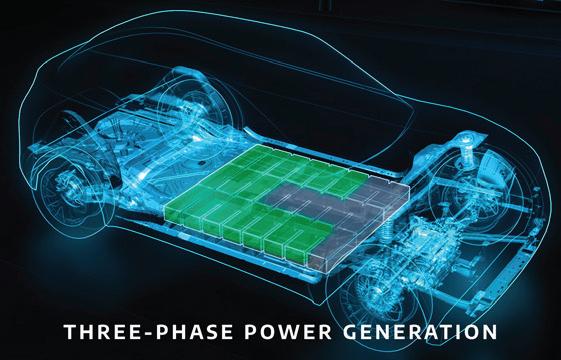

American Battery Factory (ABF), a battery manufacturer that plans to build a network of lithium iron phosphate (LFP) battery cell gigafactories in the US, has raised signicant development capital in Series A funding. ABF will use the funds to secure production equipment and security technology needed for the rst development phase of its recently announced gigafactory in Tucson, Arizona.
Investors in the Series A round include hybrid manufacturing partner FNA Group, Lion Energy, and an unnamed battery-cell equipment manufacturing company.
“Our vision is to help the US rapidly electrify, and energy storage is the only solution that makes this possible,” said Jim Ge, CEO of American Battery Factory. “ e rst major step on this journey will be the construction in Arizona of the largest US gigafactory for producing lithium iron phosphate (LFP) battery cells, and initial development will be funded by this Series A round. We anticipate delivering our rst battery cells within the next 18 months.”
Investor Lion Energy, a developer and manufacturer of energy storage products, incubated ABF for 18 months before unveiling the company to the public in March 2022. ABF entered into an o ake agreement with Lion Energy in May 2022 to deliver 18 GWh of LFP battery cells, beginning with high-capacity prismatic cells o ering 105 to 300 Ah outputs. ese are designed for a range of Lion Energy solutions, including portable solar generators and battery-based energy storage systems.
Investor FNA Group is a hybrid manufacturing partner that will provide its technology to ABF’s battery cell production. Formed in 1988, FNA Group is a vertically integrated power equipment manufacturer with a global presence across the United States, China, Italy and Australia.
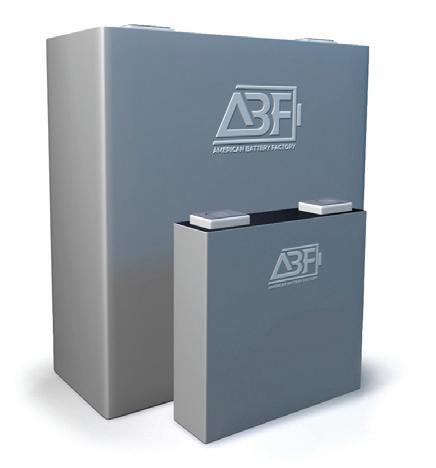

A look at improving motor efficiency in two main categories: electrical and mechanical.

Regular readers of Charged don’t need to be told that the typical EV drivetrain is way more e cient from battery to wheels than its ICEbased equivalent, but it is perhaps less wellknown that the approximate drivetrain e ciency ranges from 75-90% for the EV to a rather less impressive 20-35% for the ICE vehicle. e vast majority of losses in an ICE vehicle occur in the conversion of chemical energy to mechanical—the so-called Carnot E ciency—which might approach 40% in the best of cases. In contrast, the main drivetrain components in an EV—battery, inverter, motor, and gear reduction and/or transmission—all have e ciencies in the mid-to-high 90-percent range. Still, out of those individual drivetrain components, most of the losses come from the motor (tied, perhaps, with losses from the gear reduction/transmission), hence it is the most promising target for improving overall e ciency in an EV. at said, it’s worth pointing out that improving the e ciency of the traction motor from, say, 94% to 97%, would require cutting losses in half.

And to reach the same 99% e ciency
as the typical lithium-ion battery (de ned by the ratio of charge in vs. charge out, or the coulometric e ciency), would require a downright heroic reduction in losses of over 83%!
In gaming out the ways to improve motor e ciency, there are two main categories of losses to consider: electrical and mechanical. Electrical losses include the I2R, or conventional ohmic resistance, of the windings (including the shorting bars in the rotor of an AC induction motor), the frequency-dependent changes in those resistances due to skin and proximity e ects, and the various “iron” losses incurred in the magnetic circuit between stator and rotor, such as magnetic hysteresis—whose losses increase with frequency—and ux leakage—whose losses are more the result of the physical construction of the motor.
Mechanical losses include friction in the bearings (a linear function of RPM), displacement of grease in the bearings (a cubic[!] function of RPM), and displacement of air (or, worse, a liquid coolant such as glycol antifreeze, oil, etc) by the rotor assembly (aka windage, which is also a cubic function of RPM). Frictional losses should be such a small part of the total losses in an EV traction motor as to constitute a rounding error—if not, you’ll almost certainly be made aware of the issue by the horrendous squealing that unhappy bearings inevitably produce. It is worth mentioning, however, that the biggest driver of losses is, well, the driver—or, more speci cally, where on the e ciency map
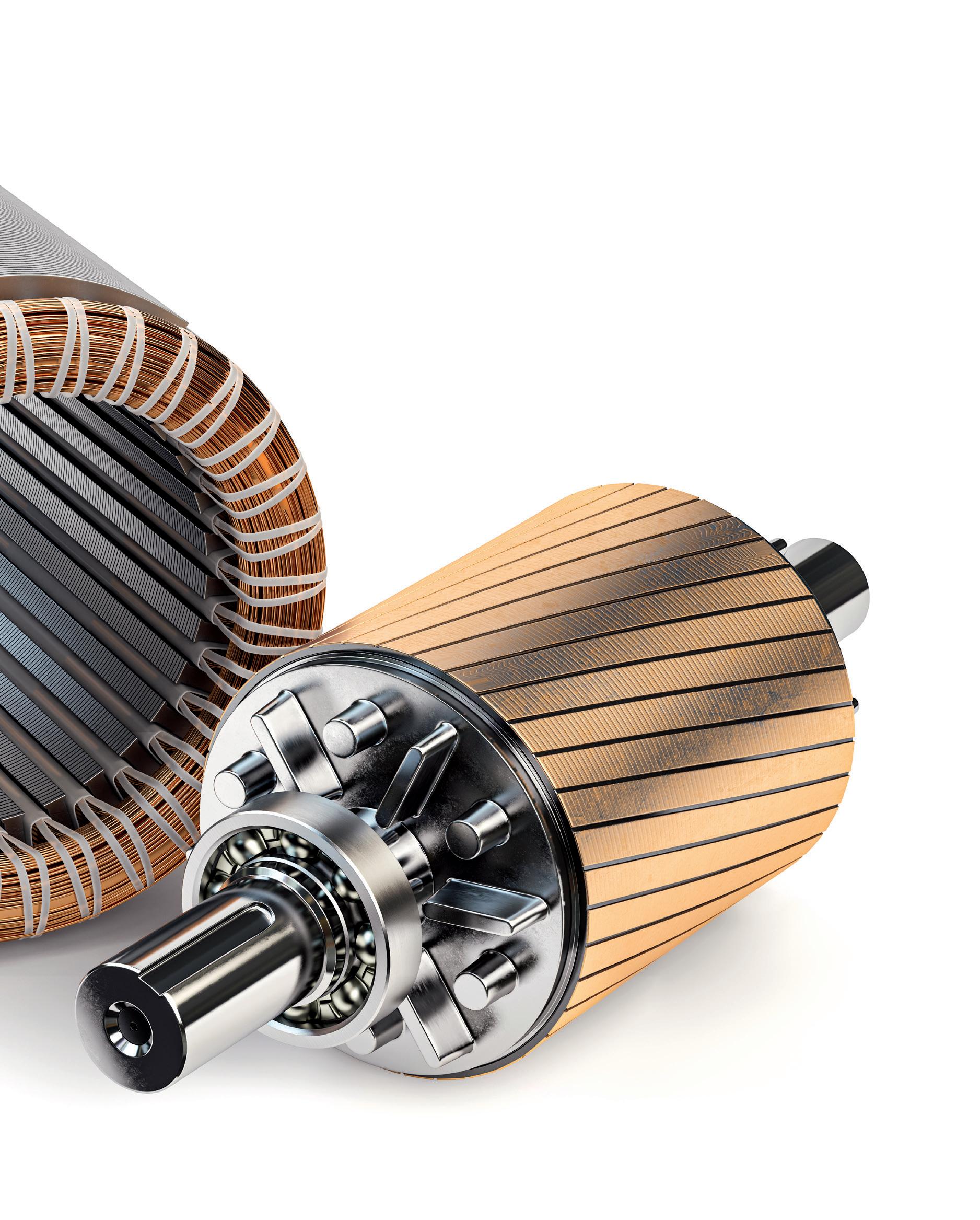
Out of the main drivetrain components in an EV, most of the losses come from the motor (tied, perhaps, with losses from the gear reduction/transmission).
the motor spends most of its time operating (see Fig. 1). While the speci c e ciency values will vary from motor to motor, and with application, of course, the general distribution of those values will tend to apply to all cases, and the key takeaway here is that operating at the extremes of the torque or speed capability of any given motor results in drastically lower e ciency (plummeting to zero, in fact, at max torque and zero RPM—that is, stalled—or any RPM and zero torque—that is, unloaded).
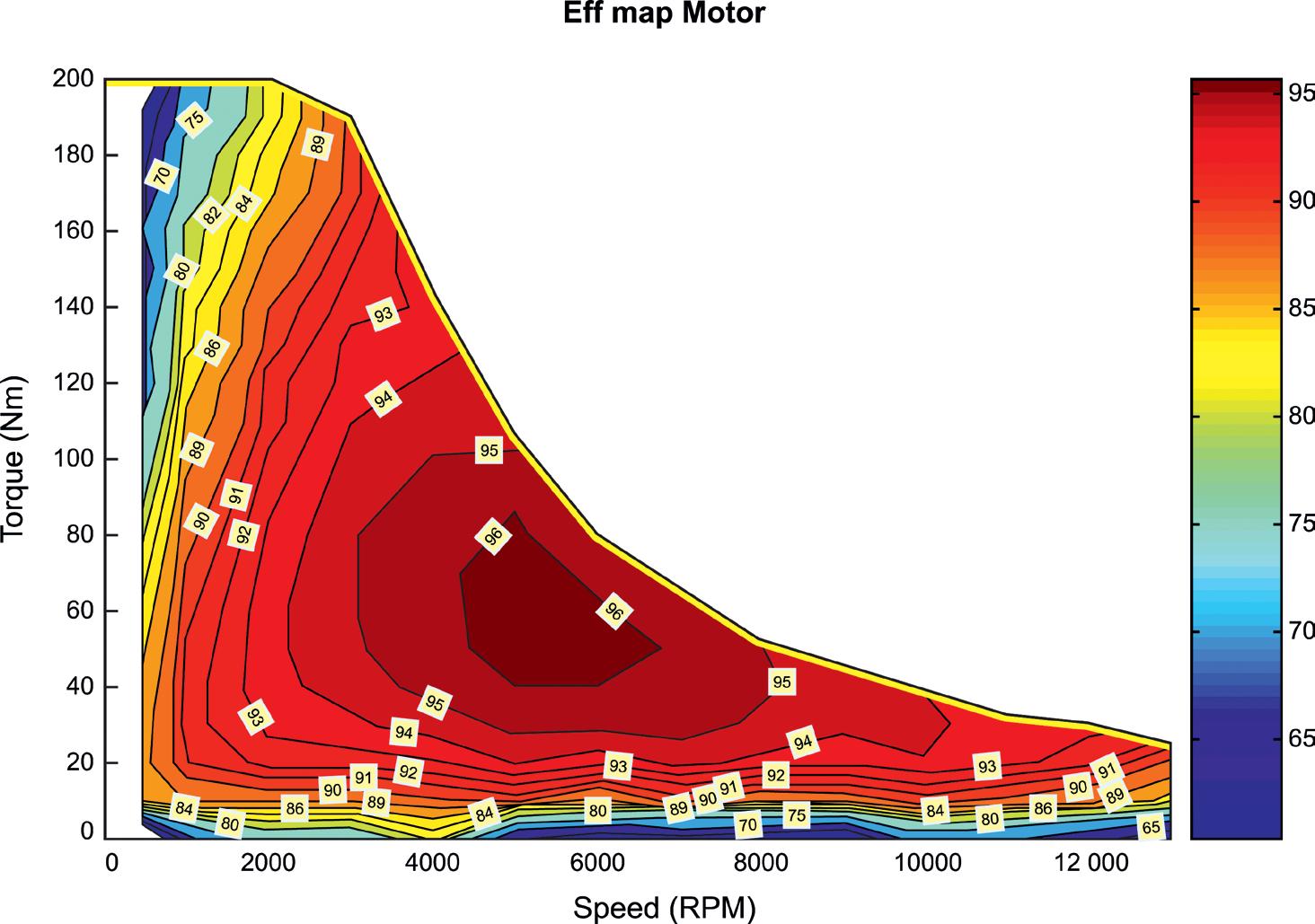
Minimizing electrical losses requires a multi-pronged approach, and that usually implies that there will be some tradeo s involved. For example, torque is proportional to magnetic ux intensity, which itself is proportional to the product of current and the number of turns in each armature winding, so doubling the number of turns cuts the required current to produce the same torque in half. is will result in a winding with twice the resistance, but since losses are proportional to current squared, the net e ect is a 50% reduction in losses. So why not go with 10 times the turns and 1/10th the current—or however much further you want to take this argument? Well, the back EMF produced by a motor is proportional to the number of turns, too, so the battery voltage necessary to operate at a useful RPM would rapidly exceed what is practical. Another approach is to use silver wire rather than copper (or aluminum) for the windings, netting a reduction in resistance of about 7% (or 39% for aluminum), albeit at a tough-to-swallow 100x increase in cost. However, when extrapolated to a theoretical useful working life of, say, 10,000 hours, at an average power of 20 kW and a cost per kWh of $0.20, that would save around $2,800 in electricity, making a fairly compelling argument for silver windings right there. Of course, the best winding material would be one with no resistance at all—that is, a superconductor— but the recently broken promise of LK-99 shows us that that goal is still some ways o in the future, and even if it
were available today, there are other practical considerations, such as whether the superconducting material can be formed into a wire with an enamel insulating coating, as is needed for the windings in motors (and transformers, inductors and other electromagnetic components).
Resistive losses aren’t just a problem at high torque (i.e. high current) levels—they can sap e ciency at high RPM too, as the e ective resistance of a wire rapidly increases above a certain frequency due, primarily, to the phenomenon colloquially known as “skin e ect.” What basically happens is that an alternating current induces small loops, or “eddies,” of current in its own conductor. ese eddy currents oppose the ow in the center of the wire and add to it in the periphery, hence it appears

The key takeaway here is that operating at the extremes of the torque or speed capability of any given motor results in drastically lower effi ciency.
that the current is constrained to the outermost portion, or skin, of the wire. e e ective depth that current will use in a conductor is inversely proportional to frequency, and since motor RPM is directly proportional to frequency, this sets an upper limit either on wire diameter (and therefore current) or RPM. e usual solution to minimizing skin e ect is to break up a single wire into many individually insulated smaller wires—something which might need to be done, anyway, just to make winding the motor (or transformer, etc) practical. Note, however, that this increases the percentage of the winding area that is taken up by insulation, rather than copper (or silver, etc), so there is de nitely a law of diminishing returns here.
Turning now to the iron losses in a motor, a commonly used rule of thumb for any electromagnetic device which handles alternating current is that the iron and copper losses should be approximately equal. As this rule of thumb implies, there are mutually exclusive tradeo s between the two—for example, increasing the cross-sectional area to reduce ux density reduces iron losses but requires longer windings, which increases resistance (it also makes the motor signi cantly heavier). e vast majority of motors today use steel that is alloyed with silicon to construct the magnetic circuit—that is, the parts of the motor that conduct loops of magnetic eld—as it combines a relatively high saturation ux density, good formability, high electrical resistance, and relatively
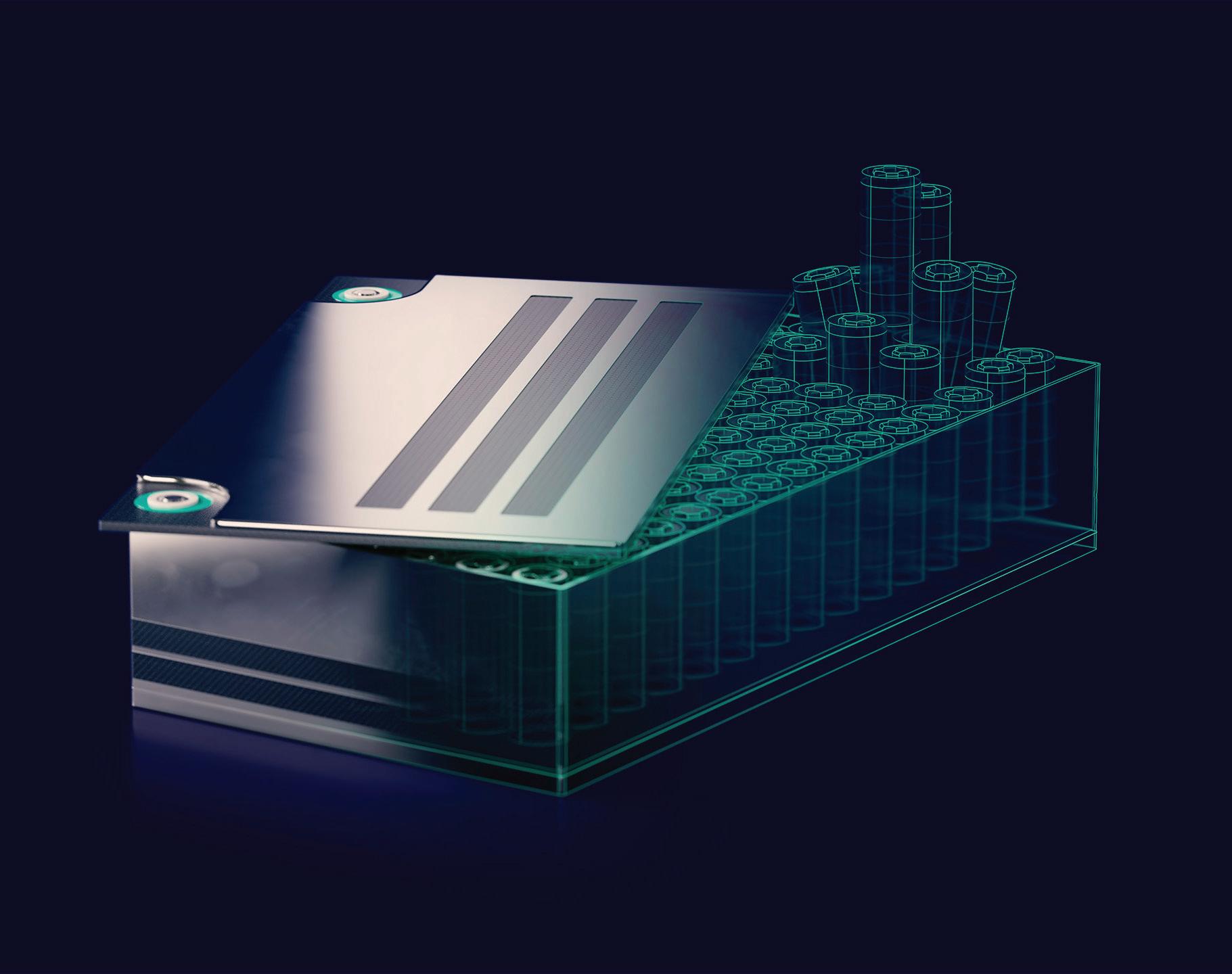

With the rising demand driven by electromobility, it is time for battery manufacturers and machine builders to embrace the Digital Enterprise. By seamlessly integrating the real and digital worlds, our solutions offer increased transparency, speed, and efficiency from battery design to production ramp-up and recycling. Unlock new levels of productivity with Siemens Xcelerator, our simple, flexible, and open digital business platform that helps the battery industry to innovate faster and become Digital Enterprises.
www.siemens.com/battery
low cost, but at the expense of less-than-impressive hysteresis losses (roughly equivalent to frequency-dependent losses in wires). Worse still is that the losses in a magnetic material tend to increase at an exponential rate with frequency and ux swing (typically to the 1.5-2.5 power, depending on material), meaning that a relatively small increase in inverter fundamental frequency (which determines RPM) or phase current (which determines torque) can result in an outsized increase in losses.
ere are numerous magnetic materials with much lower losses, but few of them are suitable for use in motors. For example, the various ferrites commonly used in high-frequency magnetic components have a lower saturation ux density (in the range of 0.3-0.35 Tesla, compared to 1.8-2.0 Tesla for silicon steel) and are extremely brittle, so they’re di cult to form, and aren’t the best choice for a motor that will be bouncing along the road. Much more promising materials employ slight variations in the processing and/or alloying elements of silicon steel, resulting in either an extremely ne grain structure (nanocrystalline) or no grain structure at all (amorphous). Amorphous metals have been employed in transformers and motors for decades (and for those of a certain age, also in the heads in tape decks) and while they can achieve an impressive up to 70% reduction in losses (from around 1.4 W/kg to 0.4 W/kg, depending on frequency, ux swing, etc), they are more expensive to manufacture and more brittle (though not nearly as brittle as ferrite). Between the two variants, the nanocrystalline version has the edge in saturation ux density and mechanical properties, while amorphous is less expensive to produce and a more established material. Either way, reducing iron losses by up to 70% gets you closer to improving overall motor
e ciency to that mythical 99% gure than the relatively meager contribution from silver wire, and possibly at a lower cost.

As mentioned earlier, frictional losses in the sha bearings should be a tiny fraction of overall losses, so this isn’t really an area where further optimization is possible, although we should note that one insidious failure mode of motors supplied by a variable-frequency drive is spark erosion of the internal bearing surfaces caused by capacitively-coupled currents produced by the rapidly switching voltages from the inverter (i.e. from high dV/dt), hence the growing use of ceramics for the bearing balls and races. Otherwise, moving away from total-immersion liquid cooling—especially if the coolant is oil, which has a much higher viscosity than aqueous coolants like glycol and water—can signi cantly reduce windage loss. Another key factor is not operating at extremely high RPMs, as, again, windage loss scales with the cube of RPM, so a modest loss of 100 W at, say, 3,000 RPM turns into a far-less-tolerable 2.7 kW of loss at 9,000 RPM.
On a related note, the use of multi-speed transmissions (either mechanical or the rather novel electronic approach discussed below) rather than the single-speed gear reduction most commonly used in EVs today can help keep the traction motor in that sweet spot of moderate torque and moderate RPM for a greater percentage
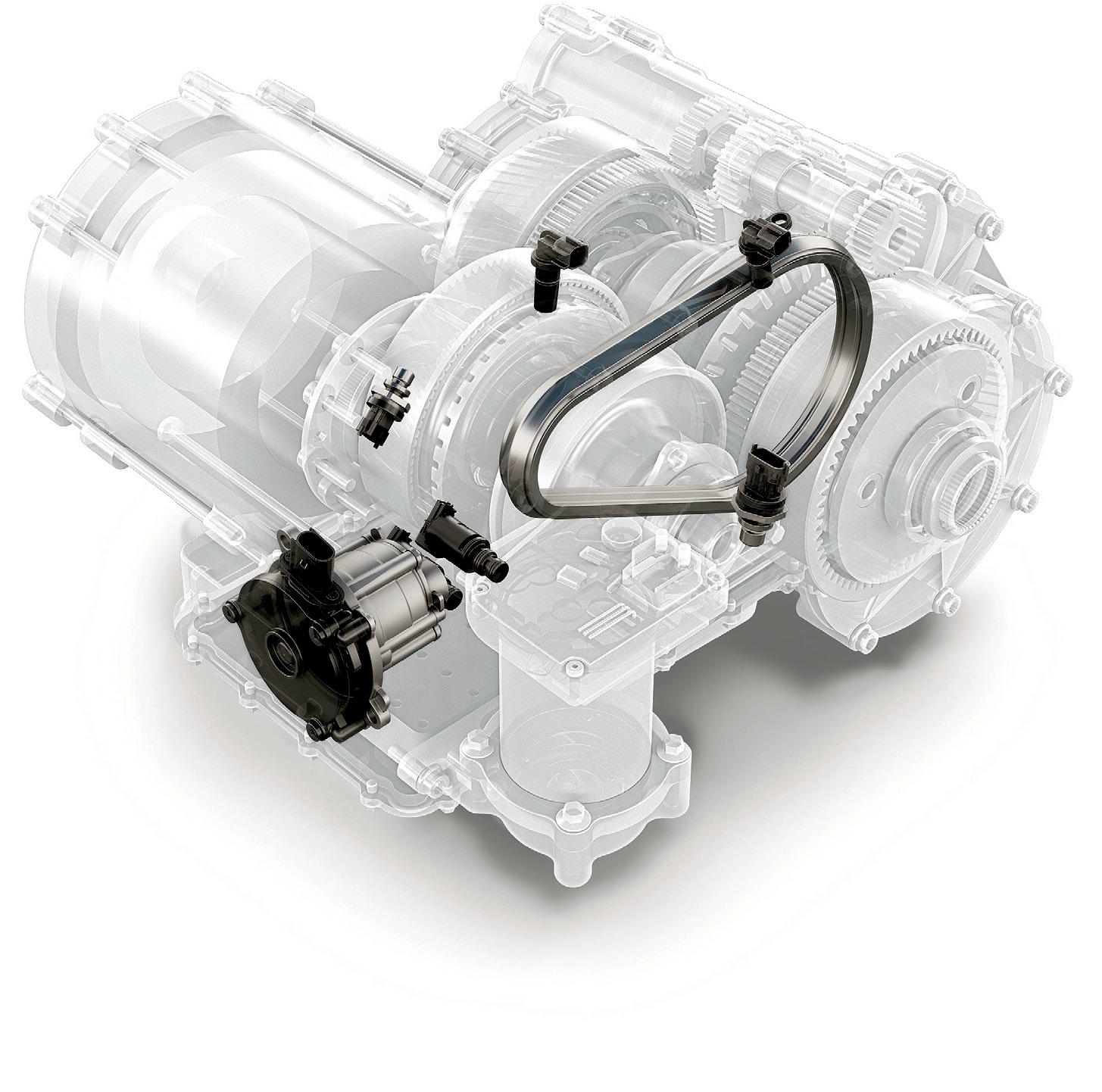
Reducing iron losses by up to 70% gets you closer to improving overall motor effi ciency to that mythical 99% fi gure than the relatively meager contribution from silver wire, and possibly at a lower cost.
of time (while improving acceleration and top speed). With a mechanical transmission there will be some increase in frictional/windage losses (particularly for gears bathed in oil), but the typical 97-98% e ciency of a gear train will always compare favorably to operating in the sub-70% region of the motor’s e ciency map. For example, both Porsche and Audi have used a two-speed gear transmission in their EVs, but Bosch is currently making the case for its CVT4EV, which is a constant-velocity transmission that is optimized for EVs by cutting its speed reduction range in half to double its maximum torque capability (as compared to its ICE counterpart).























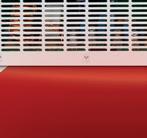


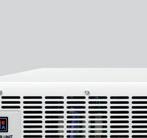

Alternatively, it is possible to simulate a multi-speed transmission electronically by breaking up the phase winding pairs into multiple sets that can be rewired on the y by the inverter to change either the apparent number of poles or the number of phases. Each of these solutions e ectively changes the rotational angle that the magnetic eld produced by the stator has to act upon—acting over a shorter arc trades a higher torque for a lower synchronous speed and vice versa—but a caveat is that this would require very di erent inverter hardware and so ware, so don’t expect to see these solutions implemented in an OEM EV anytime soon. at said, history shows that whenever a mechanical solution can be replaced by an electronic one, it is all but sure to be adopted… eventually.


























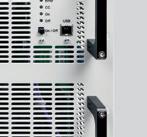


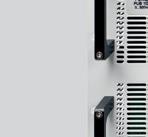




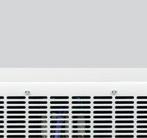


What do EV batteries have in common with athletes and politicians? Once they age out (or get voted out) of their positions, they have the opportunity to have a lucrative (and in the case of batteries, useful) second career. Repurposing depleted EV batteries for stationary storage applications will be a critical part of the future EV ecosystem.
However, there are complicating factors: battery packs come in many di erent sizes and form factors, and individual packs may retire from the road at di erent points in their lives, so their remaining capacity and overall health can vary greatly. How to assemble this motley mélange of used battery packs into a smoothly-functioning stationary storage system?
Smartville, which recently won a $5.9-million grant from the DOE, has developed a solution. e company’s new Smartville 360 ESS is a scalable second-life energy storage system that’s designed to incorporate battery packs from di erent manufacturers
(currently, Tesla and Nissan), at varying levels of health, into one unified system. Smartville currently has a pilot project up and running at the University of California San Diego.
The company claims Smartville 360 offers the lowest embedded emissions and the best value per kilowatt-hour of any storage solution on the market. Smartville also hopes to differentiate itself from competitors by tailoring solutions to the needs of different types of customers.
CEO and co-founder Antoni Tong recently explained to Charged how the system works, and how the company procures batteries and prepares them for successful second careers.
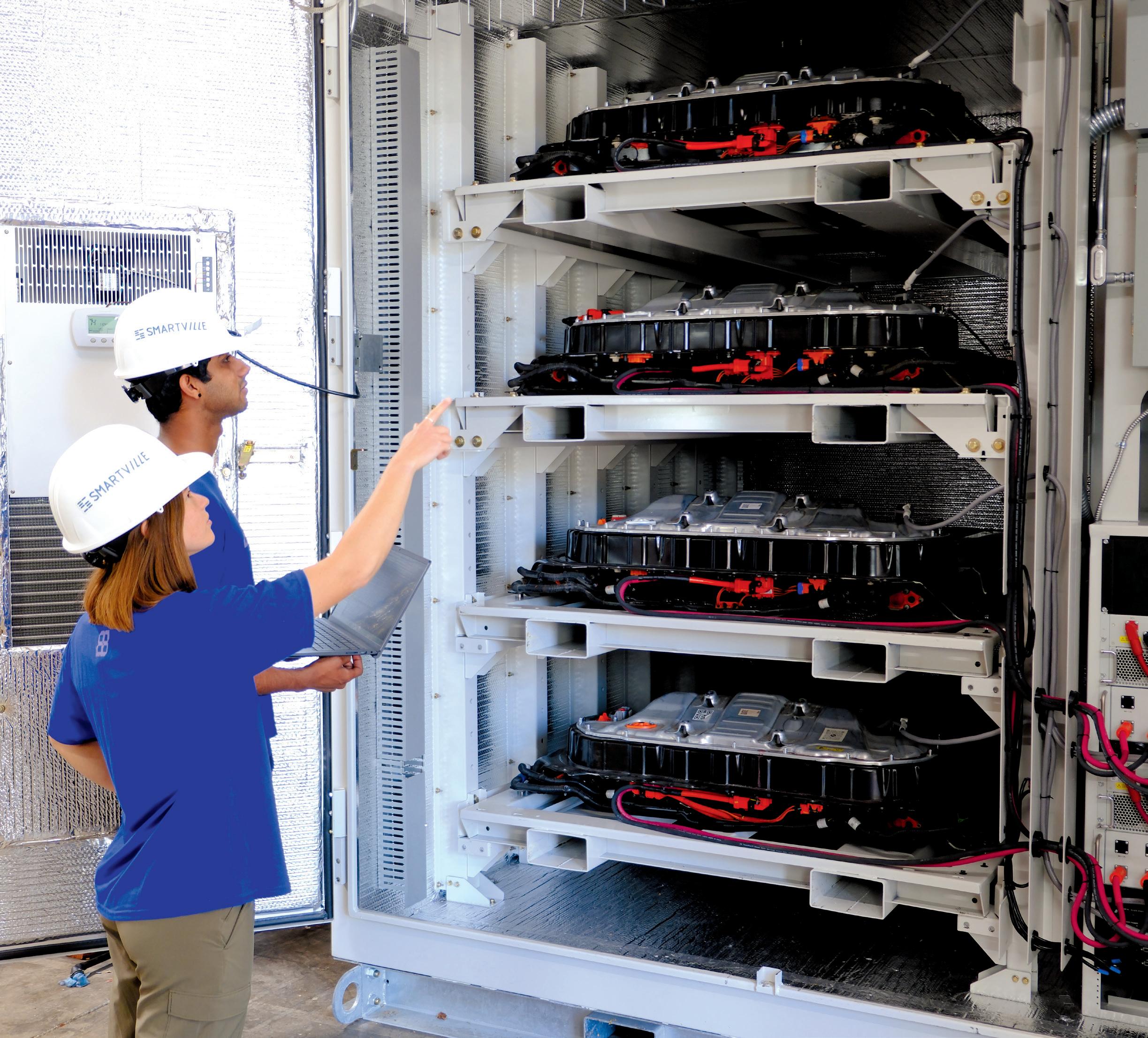
Q Charged: Let’s start at step one. Tell me more about where you source the used batteries from.
A Antoni Tong: We work with a variety of battery procurement partners across the value chain. For some battery procurement, we work with OEMs or battery service companies that are directly working with OEMs. For example, Nissan. They have manufacturing space in Tennessee, and they have repurposing programs through their North American headquarters, so we can source, procure and quality-control batteries directly from them.
We also work with Tesla Model 3 and Y packs, as they
are US market leaders in EV sales. In terms of volume of battery capacity that’s out there, 60% to 70% are Tesla Model 3 and Y packs. ose we procure through auctions, insurance write-o s and third-party dismantlers.
Q Charged: If a car gets totaled, you might buy the battery pack on the salvage market?
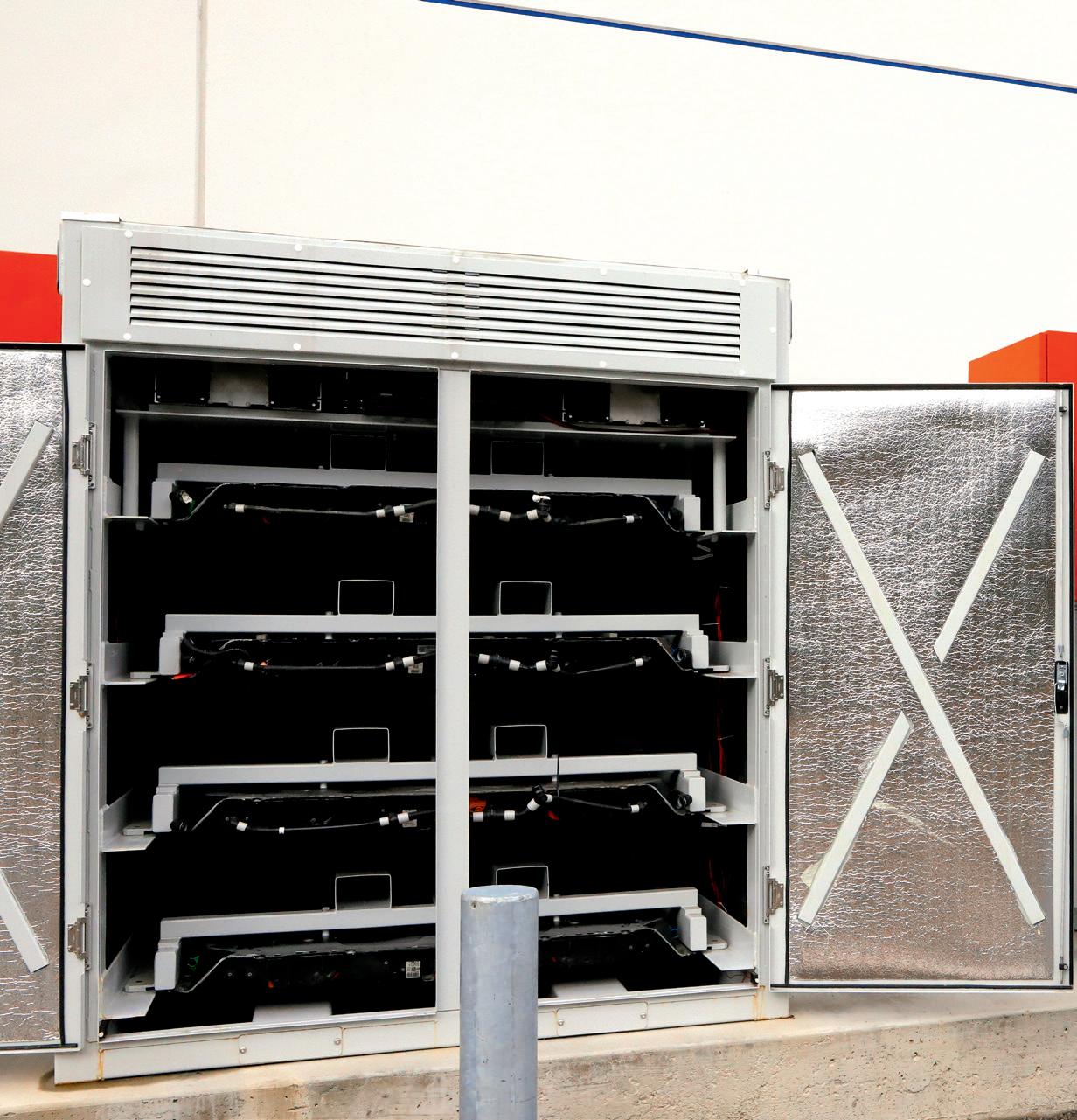
A Antoni Tong: Correct. e volumes actually are greater than we thought. We have seen at two of the major insurance auction sites, about 1% of the vehicles are coming through that pipeline in year one, and you will see about 15% of them before year 10. ose are fairly new and quali able batteries for reuse. Our market study indicates that over one GWh worth of batteries will be available for repurposing in the next three years.
Q Charged: Your Smartvlle 360 platform is designed to use batteries from di erent vehicles—any battery chemistry, any type of battery, correct?
A Antoni Tong: Yes, this is exactly the design-for-application approach we took to optimize the integration cost and competitiveness of our products, and reduce the risk of procurement. We are fairly con dent that the products are agnostic with regard to OEMs and chemistries.
ere’s only one nuance—typically, we design batteries by the class of voltage. Currently, more than 90% of vehicles are in the 400-volt class. We do start to see new trucks and buses using 800- or 1,200-class voltage, and that requires some retooling and update of power electronics on our end.
Q Charged: What do you physically have to do with a pack to install it into your device? Surely you don’t just take the whole battery pack and stick it in the cabinet?
A Antoni Tong: at’s exactly what we do. Let me give you some reasons. ere are di erent schools of repurposing—the teardown model or the whole-pack repurposing model. Smartville does a whole-pack repurposing model. ere are business models in Asia and Europe doing teardown, but there are two reasons that this is going to be exceedingly challenging. One is the economics. In this market space, to do this requires high labor costs for reintegration. You’re also tampering with a perfectly sealed and engineered pack to rebuild a system that introduces new components and controls, which may mix in a manufacturing defect.
e second reason is the trend of how battery packs are being engineered. You are seeing bigger form-factor modules, something like cell-to-pack design, which make the pack almost indestructible, so the pathway for the teardown model almost doesn’t exist. For example, Tesla Models 3 and Y, and other large-format battery packs that we are starting to see in the market.
For those reasons, we’re trying to repurpose directly on the pack level. However, I should have prefaced, it’s not directly sticking the pack into the Smartville 360. We do quali cation, we do cooling line integrations, we do quality checks, not only on the batteries but also on the critical parts within the pack. at includes the BMS, communications, cooling lines, seals, isolation detections, contact qualities. So, all that we’re going to be reusing outside of the battery will be quali ed before we integrate them.
There are different schools of repurposing—the teardown model or the whole-pack repurposing model. Smartville does a wholepack repurposing model.Images courtesy of Smartville
Q Charged: Tell me more about the quali cation that you do on these battery packs.

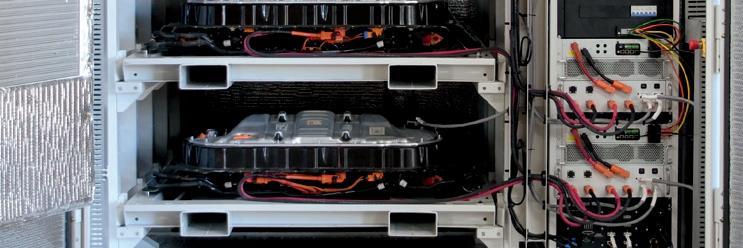
A Antoni Tong: Quali cation is extremely important for our business model, and we hope to build a di erentiating approach in that space.
What we do o en starts even before we touch the batteries. We work with service providers, dismantlers, some of them even before the batteries come o the vehicles. We provide them with hardware and protocols so they are able to do initial sni ng of the batteries—taking pictures, reading manufacturing marks, reading VINs. We also have a device that can read CAN buses
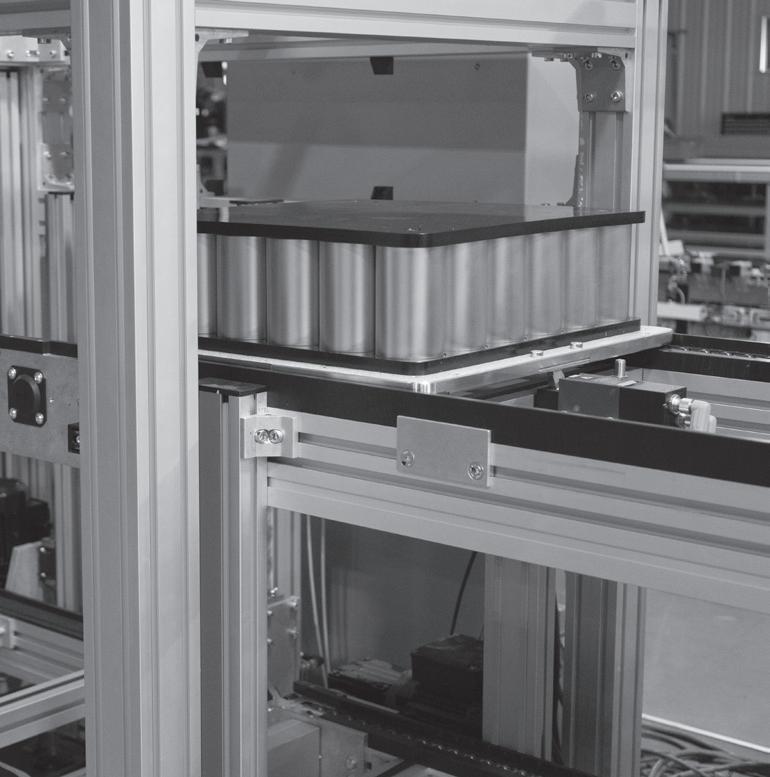
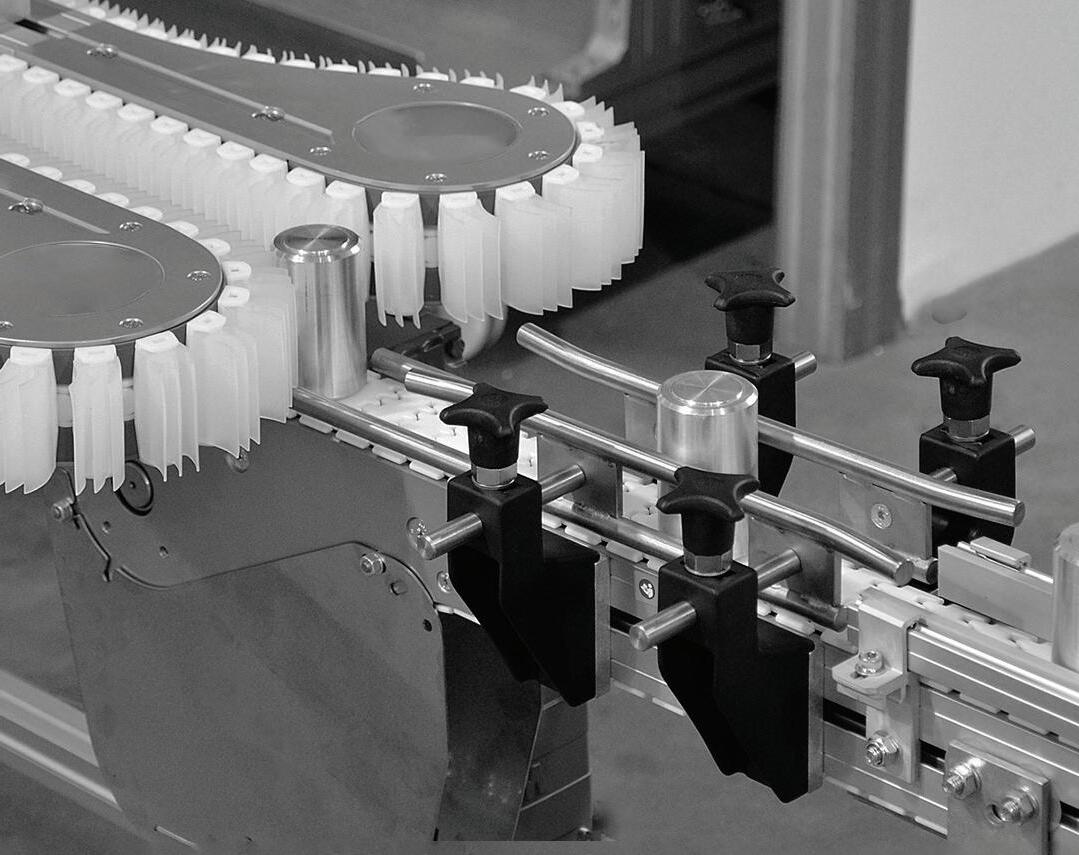
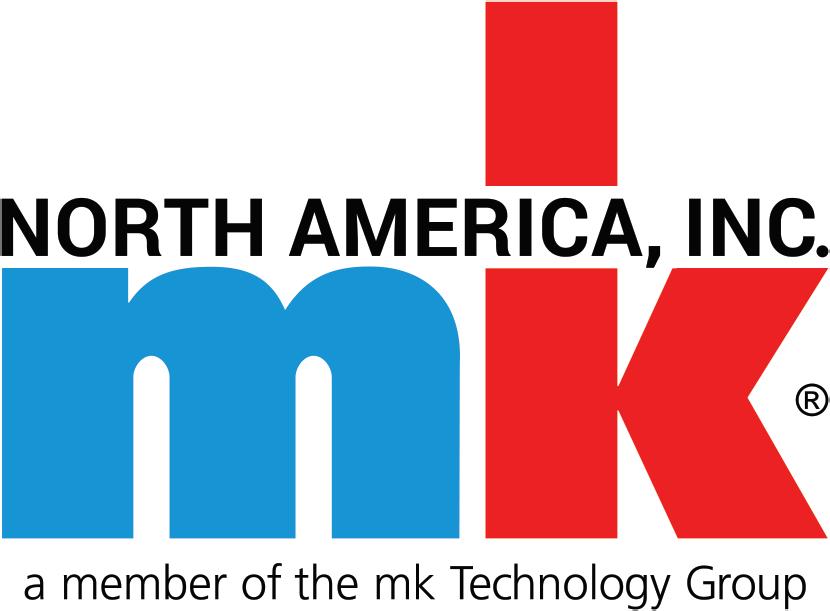
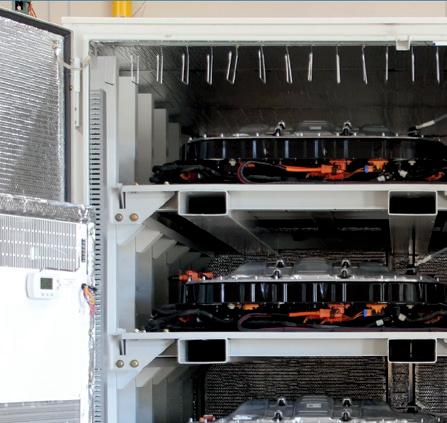
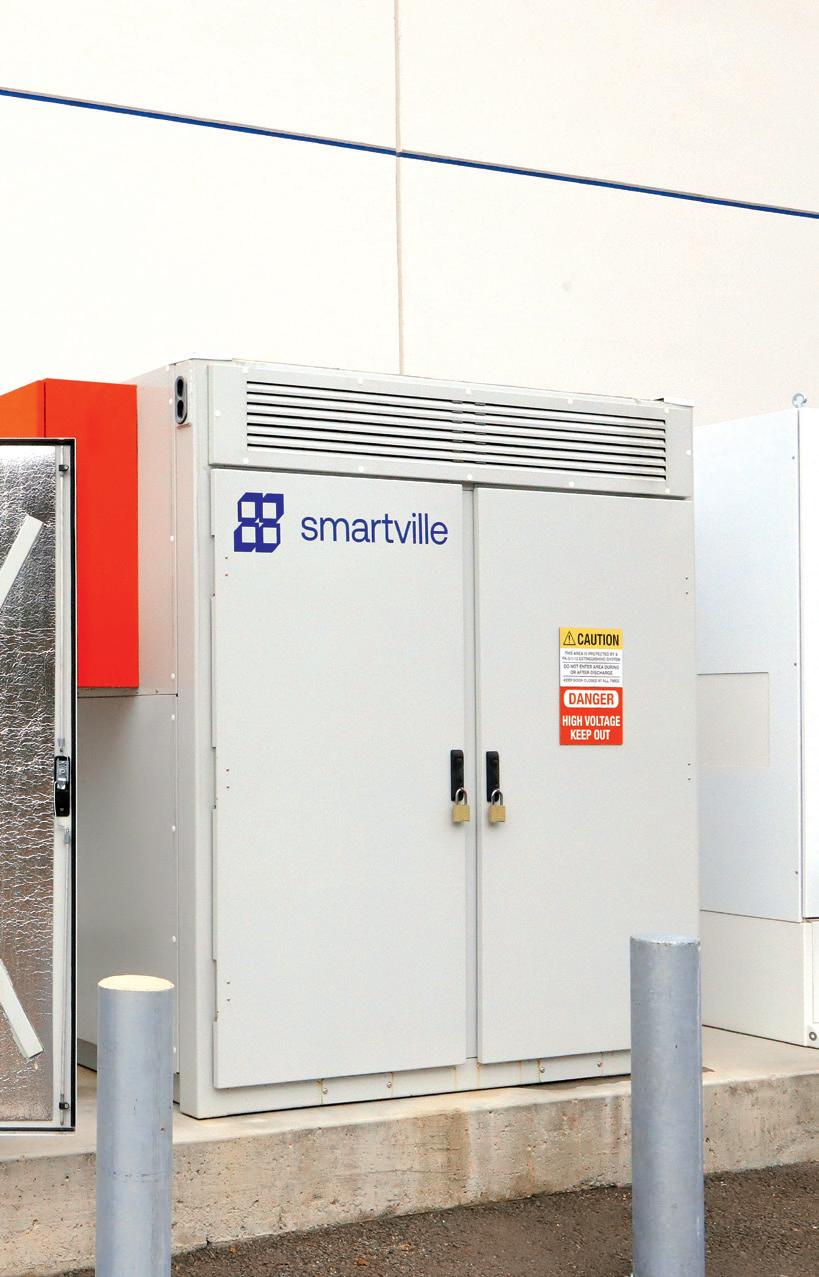
on the BMS to get odometer readings, mileage, accumulative cycles, so we can draw a map of the rough category of fitness of those batteries.
Once we determine some of the batteries are good, and get them to our factory, then we will conduct the testing we call “application-appropriate.” Because when they were in the vehicles, all the calibration, all the readings, all the BMS were reporting how the batteries operated in the vehicle. We test them on their quality for energy storage applications. We recalibrate their state of health and their state of charge, and then we prep them for integration. That procedure builds up a strong body of data intelligence that we are able to use to predict and guarantee performance.
Q Charged: Within the Smartville 360, you’ve got to connect the communication lines to the BMS, you’ve got to connect the coolant lines, and all those connections must be different for every different pack, right?
A Antoni Tong: This is one of the unique toolings we had to do. The form factor fits the majority of the EV packs. And within each Smartville 360, we use the same type of battery—not only the same models but also very close model years. Every time we become compatible with a
new type of battery pack, the first thing we do is retool the cables and retool the communication connections. But we find this to be largely similar, and we have a cable consultant and suppliers that are familiar with a lot of those retoolings in the automotive space.
Q Charged: So you don’t mix and match packs within a single Smartville 360 unit, but each different unit could be using different types of packs.
A Antoni Tong: Correct.
Q Charged: You describe the Smartville 360 as a plug-and-play device. How does a customer connect it into their electrical service for peak shaving, backup power or other applications?
A Antoni Tong: Our system can be configured for both DC and AC couplings. For the AC coupling, it comes with the inverter pre-integrated and fully turn-key. Our EMS system, despite our capability to work with batteries with different types and health, will coordinate the lower-level control so the customer will only see one unit of batteries to dispatch. A project developer will then take our EMS control interface and incorporate it with a larger site-level controller, which includes other energy components such as renewables, loads, grid-metering and switches.
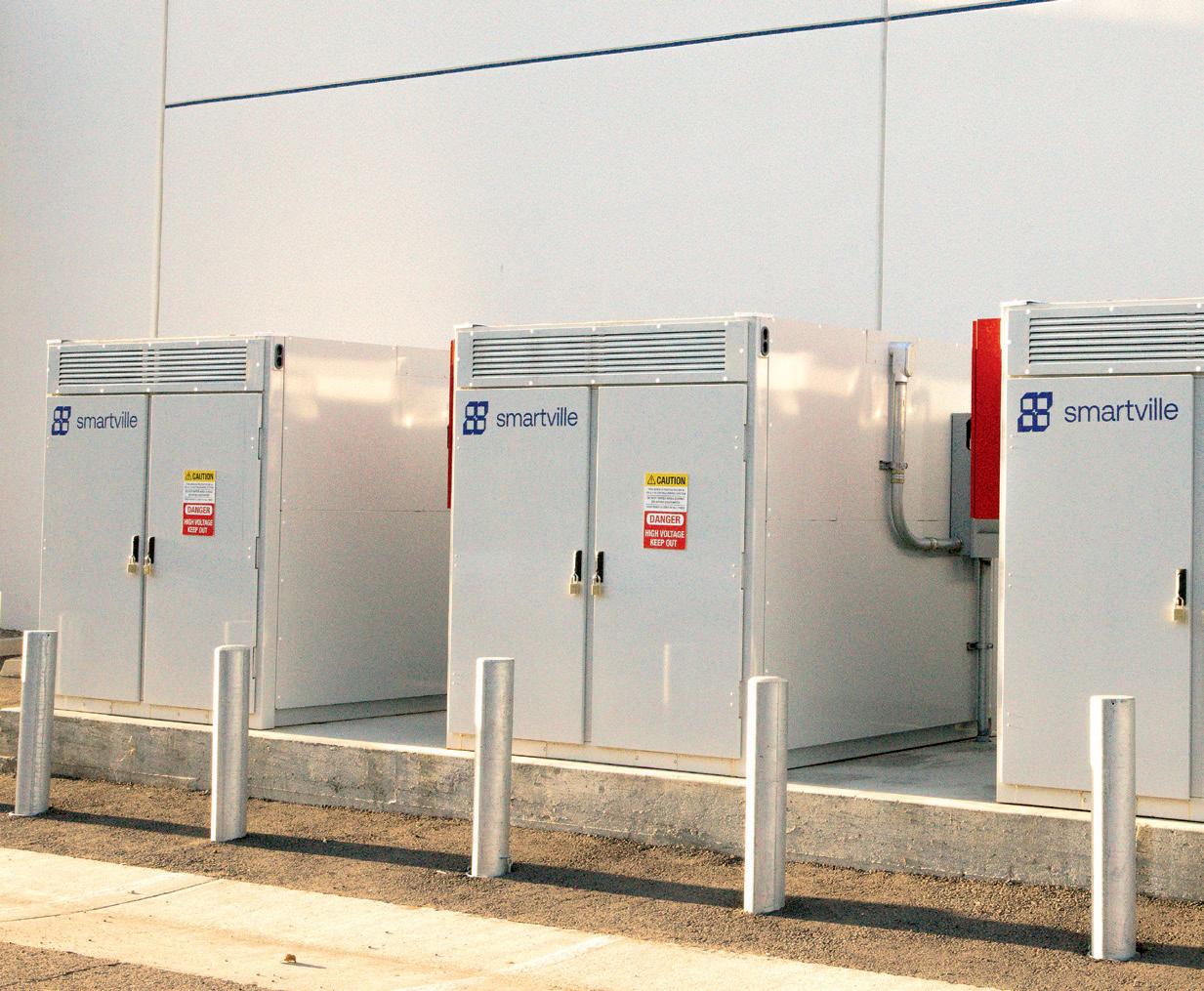
The EMS is what they use to dispatch our ESS. For storage, it depends on applications. There are many, many different controls you can do. You mentioned a few: peak shaving, that’s looking at the time-of-use price; demand reduction. It’s more complicated looking at what’s the penalizing tier of the local utility. So, all those are different case-by-case situations.
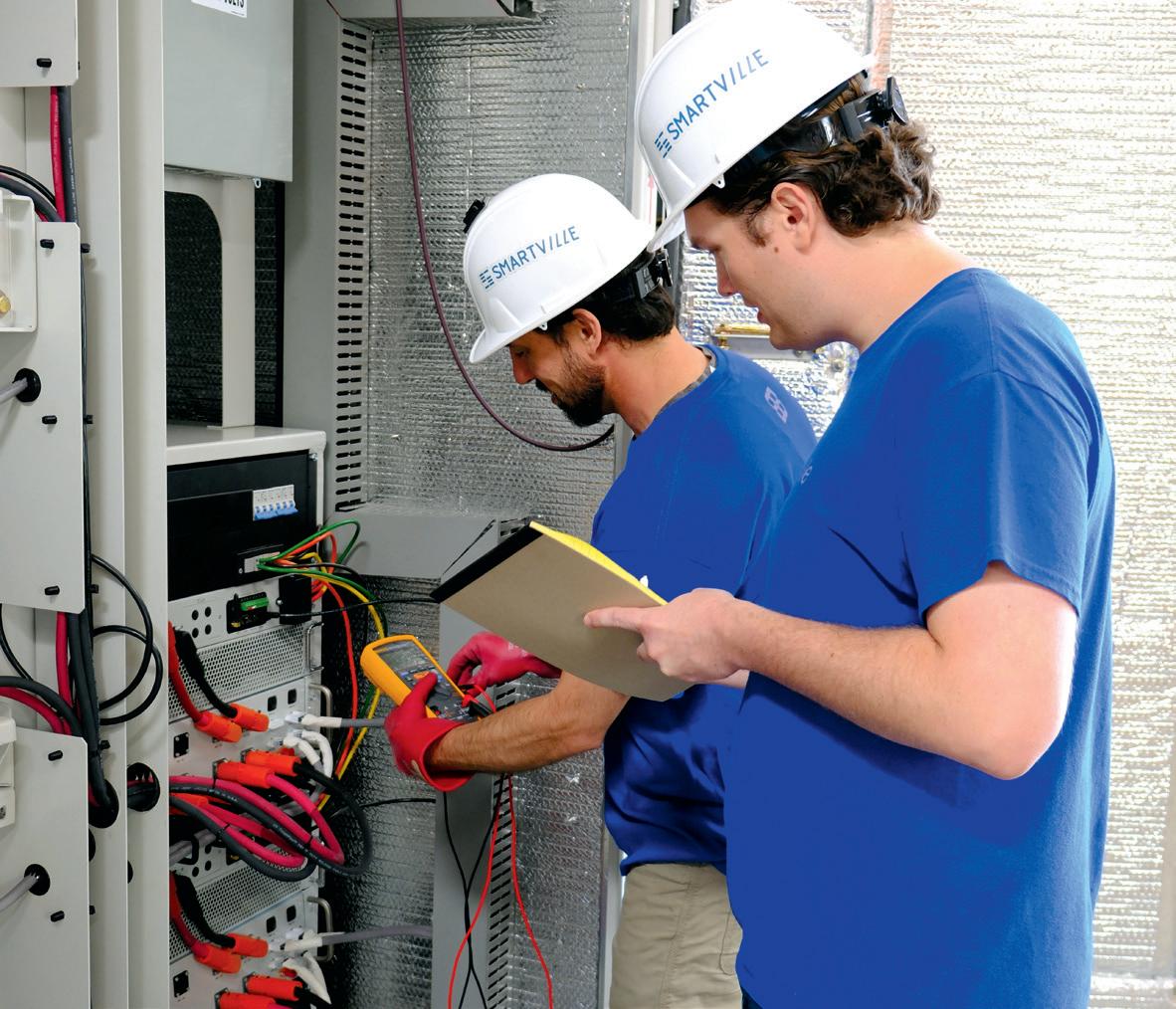
Qualification is extremely important for our business model, and we hope to build a differentiating approach in that space.Image courtesy of Smartville
Q Charged: ere must be a so ware product that goes along with it. Is that something that you provide or can it work with di erent systems?
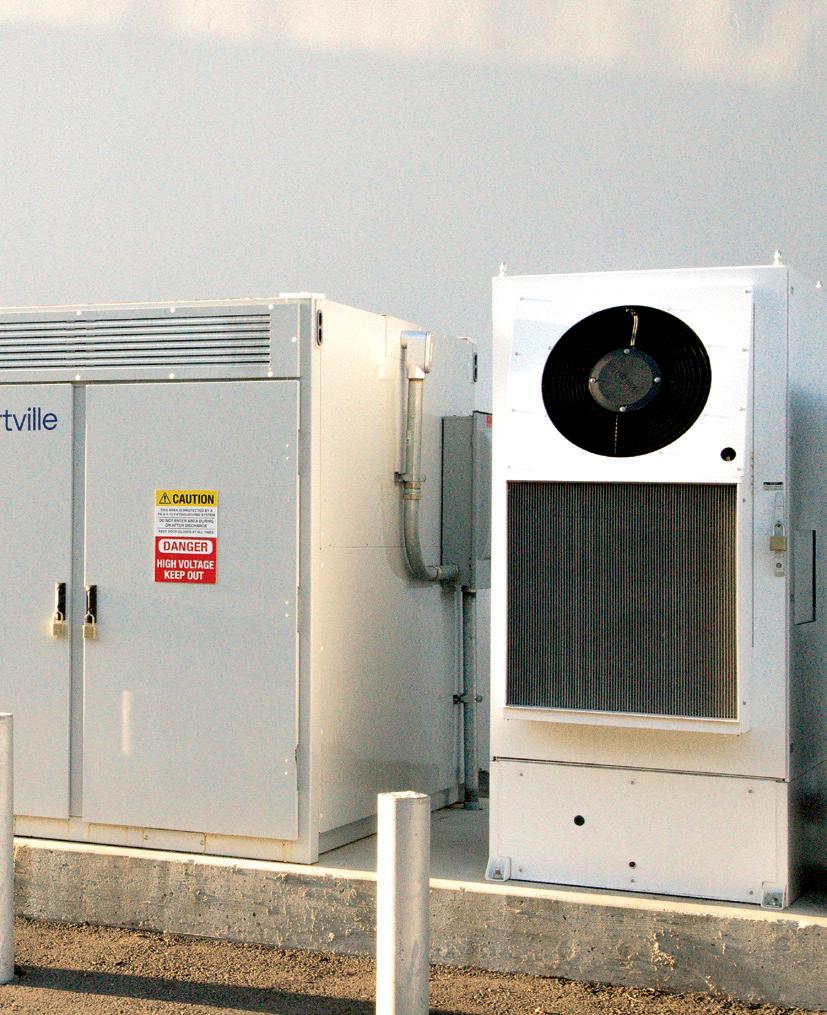
A Antoni Tong: Both. Our systems come with the EMS that allows the integrator to dispatch the batteries. We also can be compatible with other more powerful EMS systems that the customer might use.
Q Charged: I guess second-life battery technology has come a long way in the 10 years since you began in the industry. What are some of the improvements and innovations that have happened?
A Antoni Tong: In the past 10 years there have been a lot of pilots and trials, o en OEM-initiated, typically working with developers or integrators to do demonstration projects.
Over the last couple of years, we have seen growth in the volume of batteries, the procurement model being further diversi ed, and a lot of companies working on di erent batteries. We are starting to see the emergence of solutions really





Multiphysics simulation helps in the development of innovative battery technology by providing insight into mechanisms that impact battery operation, safety, and durability. The ability to run virtual experiments based on multiphysics models, from the detailed cell structure to battery pack scale, helps you make accurate predictions of real-world battery performance.
» comsol.com/feature/battery-design-innovation



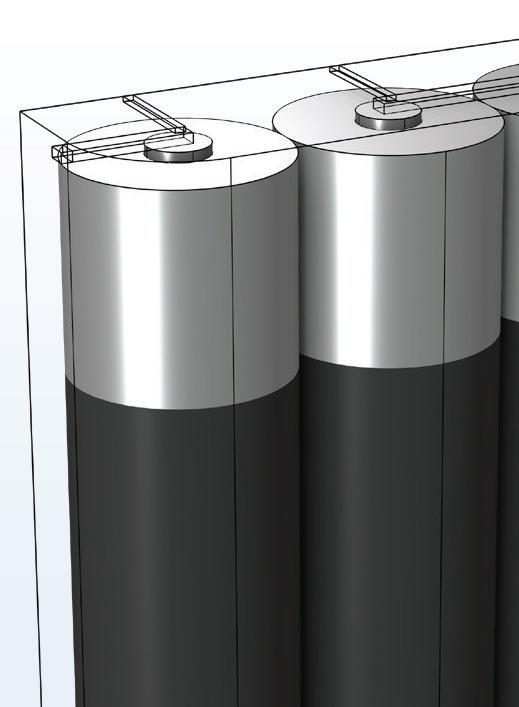
targeting a competitive business model in the stationary storage space. Depending on the market sector they’re focusing on, the price structure might be di erent. But this is still in a very early stage.
Q Charged: What are some of the potential customers, and how do their needs di er?
A Antoni Tong: Di erent companies are focusing on di erent customer sectors. Smartville today is focusing on about 100 kilowatt-hours to multi-megawatt-hours of installation as a market entry. We are targeting systems for commercial and industrial customers, or a leg up to a small grid-integrated level, but not like a gigawatt level of storage yet, as those applications require much larger manufacturing scales and nancing vehicles than we are capable of today.
Q Charged: Smartville was founded in 2019. What stage in your development are you at? Are you still working on pilots or do you have some actual customer installations up and running?
A Antoni Tong: So far, we are at the scaling point. Our rst pilot-level product is Smartville 360, and right now, we are at iteration two. With iteration one, we had one installation done last year as a pilot. It’s subsidized by California Energy Commission funding.
We have four concurrent pilots ongoing right now. Smartville 360 version two is geared towards certi cation under the UL 9540 framework and is targeting low-rate production. With that product, we are doing our rst commercial delivery to a utility company. We are hoping to showcase our products and underlying solutions in September at the RE+ Convention. We also have a couple of utility, commercial and auto OEM customers in the pipeline.
Q Charged: What do the auto OEMs use stationary storage for?



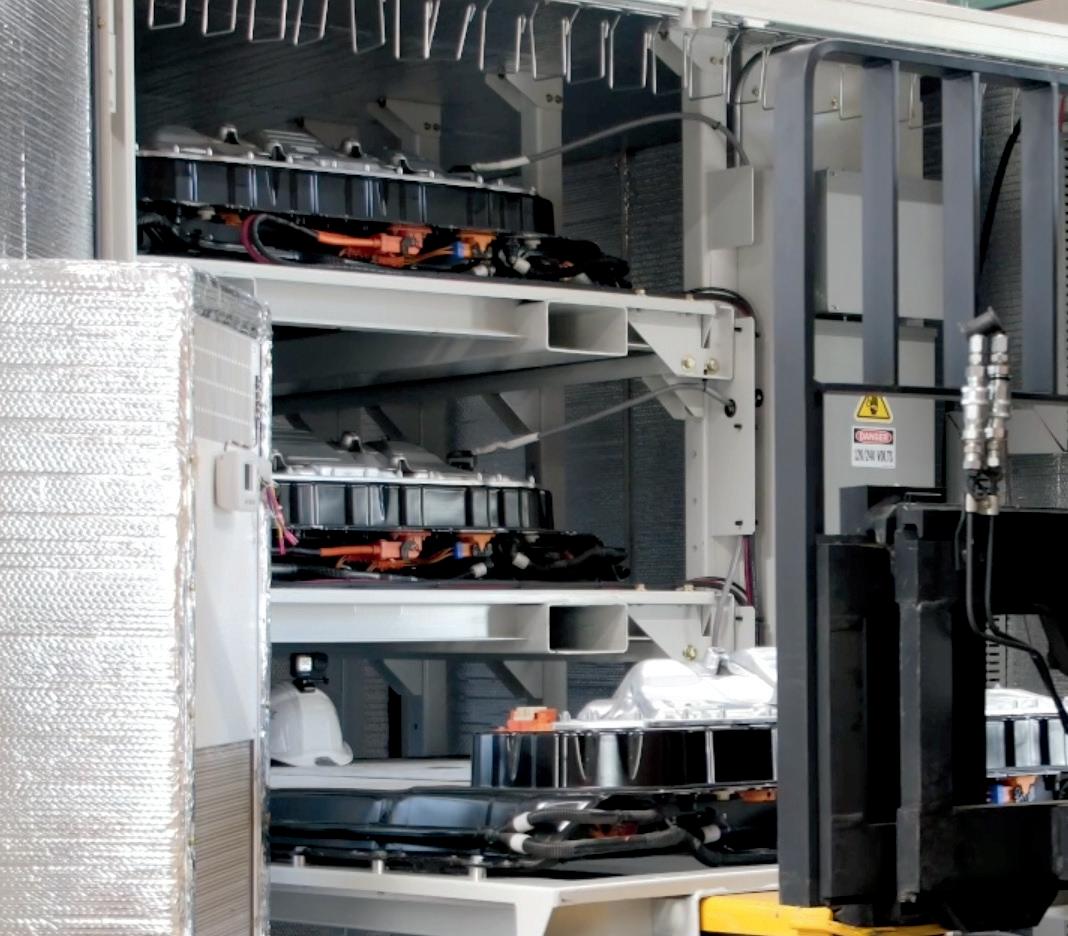
A Antoni Tong: Some of them want a proof of concept on their batteries. ey have incentives to see cost di erences, should policy come that makes them responsible for battery packs that are in their vehicles or creating an internal application ecosystem for their battery packs.
Q Charged: e OEMs think there might be regulation in the future that will require them to support second-life batteries?
A Antoni Tong: Generally, OEMs don’t want to comply unless there is a strong nancial incentive. What I see is not only the risk of future policies, but also other nancial incentives. Because nowadays, battery pack chemistries are moving toward low-cost, low-supply-risk raw materials, such as shi ing from NCM to iron phosphate. e OEMs might see little to negative value in recycling only, meaning that they have more costs on their hands for end-of-life batteries. So hopefully, it’s a mix of policy push and the nancial incentive to drive to a reuse and recycle model.
Q Charged: So recycling is in some cases not economically viable? How does that relate to second-life applications?
Nowadays, battery pack chemistries are moving toward low-cost, lowsupply-risk raw materials, such as shifting from NCM to iron phosphate. The OEMs might see little to negative value in recycling only.Image courtesy of Smartville
A Antoni Tong: We see challenges on the pro t side on the battery materials. Maybe two years ago during the height of COVID, battery raw materials could fetch high prices, but the price has been down by more than 50% since COVID subsided.
We also see di erent pro t opportunities for di erent chemistries. e earlier batteries with high nickel, manganese and cobalt content fetch a better price, but batteries are not made this way nowadays. Very low nickel and cobalt contents today. e iron phosphate cells, they are basically iron and rust and some lithium. ose actually carry a cost to the end owner. It’s not a problem for OEMs today because they are not responsible for those packs. But once they do become liable for those costs, that’s a great nancial incentive to nd a responsible yet cost-e ective end-of-life solution. And I hope at that time, reuse becomes a solution before recycling.
As electric vehicle technology evolves, so should your expectations. Our customizable CoolTherm® products increase safety, reliability, and performance in electric vehicles.













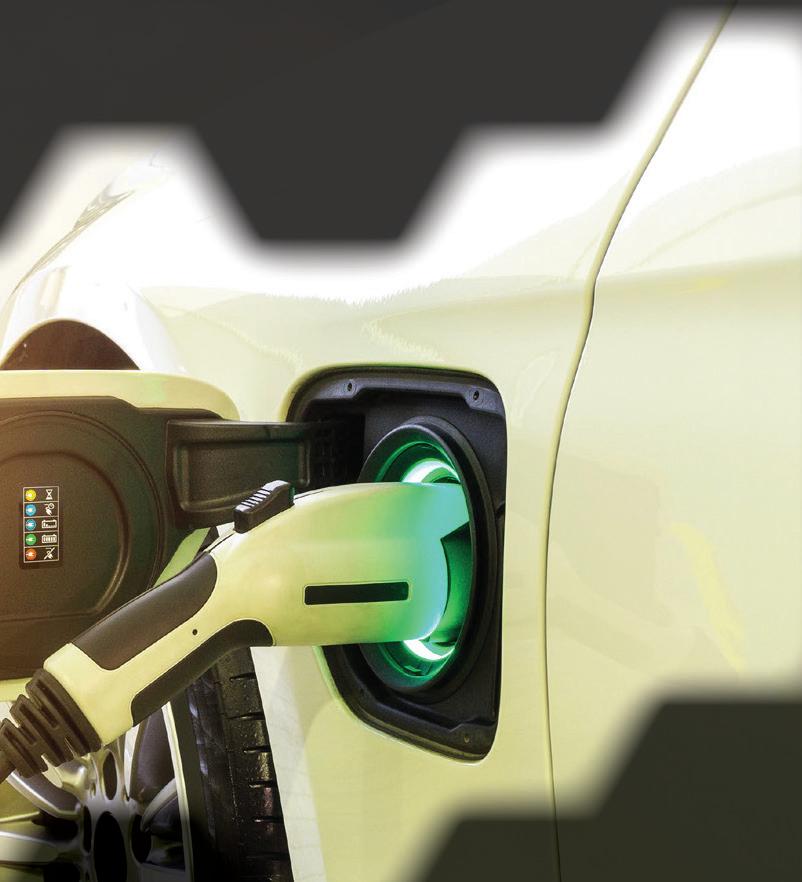


Solutions:
▪ Gap Fillers
▪ Potting & Encapsulants
▪ Structural Adhesives









Applications:

▪ Battery Packs

▪ Motors
▪ Charging Systems


parker.com/ CoolTherm










When we talk to collaborators and potential customers, we always say our business model is not in competition with recycling. We are in a complementary position with recycling, because we and the recycling entities are using very similar processes of logistics, shipping and procurement. e batteries have to come out of the vehicles, have to be sorted, have to be transported. But if we can pick the batteries that are usable for us, the cost to the recycler for procuring the rejected batteries will be lower. At the same time, when we triage large quantities of batteries for repurposing, we make it easier for those end-of-life batteries eventually to get to the door of the recycling plant.
Q Charged: Tell me about the future of sourcing packs. When do you think you’re going to see a lot of actual end-of-life battery packs coming on the market?
A Antoni Tong: is is a very good question. Our retaining rate, which means the salvage rate on the vehicle side, is also driven by the signi cant growth of the EV space. We see north of gigawatt-hours of used batteries available as early as 2027. at’s a signi cant amount, much larger than our target procurement model within Smartville’s business objective. But there’s a nuance as to whether they are really end-oflife. ere is no clear line that a battery used beyond 80% remaining capacity is true end-of-life. ere will be a spectrum, and we continue to work with batteries of all ages. Some came right o the factory oor and got into accidents. Some people are driving old Nissans down to only 40 miles of range, and we have those batteries at our factory as well. e key here is to establish good battery data analytics to provide the prescribed service life and performance in our integrated product.
Q Charged: My LEAF is down to 80 miles of range, but it gets me where I need to go, so you won’t get that battery pack for a long time.
A Antoni Tong: Right. But to add to that, a lot of our motivation is also coming from sustainability objectives. Just to throw a number out there, a new EV needs to drive about 13,500 miles to equal the embedded carbon emissions compared to a gasoline car, according to Reuters. Which means if you have a vehicle that gets totaled before year three, year ve, that’s a more polluting car than gasoline. [Editor’s note: ere are widely varying estimates as to the mileage required to cancel out an EV’s “carbon backpack.”]
You have tons of battery assets out there that are being ground down for material. Alternatively, if we can pick them up and bring them a second life, we can ful ll their carbon emission reduction goals.
Q Charged: In California they’re introducing some incentives for stationary storage, and I think the IRA and the BIL address this too. Are there state and federal incentives that you’re able to tap into?
A Antoni Tong: ere are strong incentives for stationary storage in the IRA, but there are wrinkles for the line of business we do. For example, as the IRC section 48 Energy Investment Credit stands today, second-life batteries were le out of the technology candidates to receive project-wide tax incentives. However, we have a very strong case that this is a shi ing of application—it’s a battery that’s not purposely for stationary storage and we, through engineering, developed a new line of product. I think we can make a case for the product to be quali ed—but there is risk there.
And if you are quali ed for a certain percentage of domestic manufacturing, you qualify for additional tax rebates. Which, interestingly for Smartville, our products have very, very high percentages of domestic content. anks to our low-risk supply chain and localized manufacturing practice, our enclosures, our power electronics, interface stages, and the batteries, are sourced or manufactured in the US, as opposed to other energy storage products that you typically see—batteries are largely coming from overseas. is is one of the things that the battery circularity industry as a community is investigating. One possibility is that we submit projects for a private letter ruling (PLR) on qualifying under the IRA. We also look to see campaigning and lobbying e orts that could qualify these products for tax incentives. A er all, achieving scalable repurposing, in our opinion, is a key step to achieving a sustainable domestic lithium-ion battery supply chain.
We see north of gigawatt-hours of used batteries available as early as 2027...much larger than our target procurement model within Smartville’s business objective.
The Unimotive range is specially designed for applications in the automotive industry. Typical applications include temperature simulations as well as material testing and temperature-dependent stress and load tests for automotive parts and functional components.
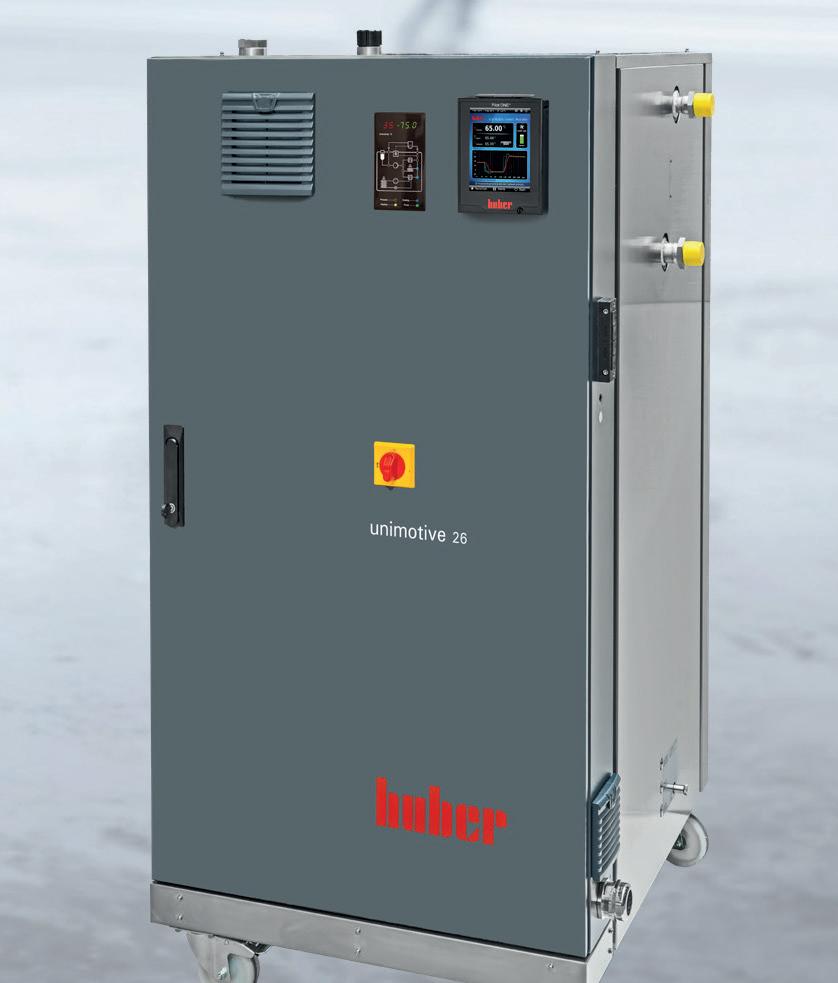




























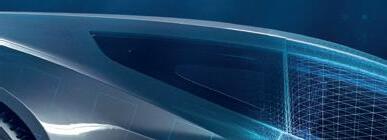














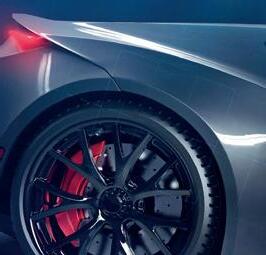






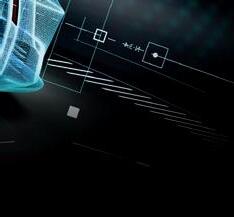








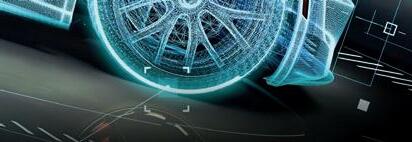


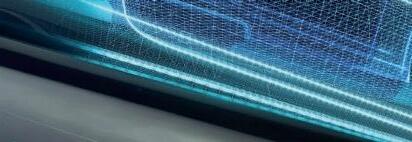


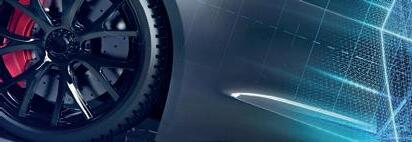

Tesla’s founders set out to sell “not just the best electric cars, but the best cars.” In several markets around the world, the company’s EVs have now become the best-selling cars.
In Q2 of this year, Tesla had the two best-selling cars in California by a wide margin, helping to push the market share of battery-electric vehicles to a record 21% in the state.
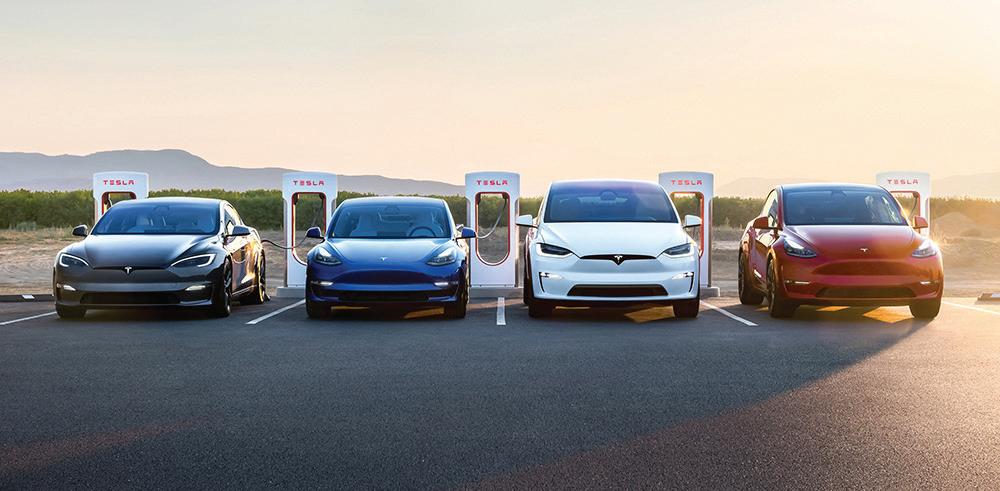
According to the California New Car Dealers Association’s second-quarter 2023 California Auto Outlook report, Tesla had a record quarter in the Golden State. e best-selling vehicle in Q2 was the Tesla Model Y, which sold 74,765 units through June 2023. In second place, the Tesla Model 3 sold 41,718. In the number-three spot was the Toyota Camry with 27,169 sales, followed by the Toyota RAV4 with 26,032.
As Tesla’s sales soared by 62% compared to Q2 2022, Toyota’s shrank by 8%. e result: for the rst time ever, Tesla was the best-selling brand in California, edging out long-time front-runner Toyota. Tesla sold 69,212 cars in the quarter, while Toyota shi ed 67,482.
Is this signi cant? Well, Toyota, maker of the Prius, has been the top-selling brand in climate-conscious California for many years. To be bested by a 20-year-old company that sells only four models highlights how far the world’s second-largest automaker has fallen behind.

“If that doesn’t light a re under Toyota’s ass, I don’t know what will,” quipped Electrek’s Fred Lambert.
BC Transit, which oversees public transit in the Canadian province of British Columbia (outside of Greater Vancouver) has announced plans to invest some $396 million to purchase up to 115 battery-electric buses and install 134 charging points.

Of the total, the Canadian federal government is contributing around 170 million, the British Columbia provincial government is kicking in 159 mill, and recipients are coughing up 67 big ones.
BC Transit aims to transition to an all-electric eet by 2040. e Canadian government has set an objective of putting 5,000 zero-emission public transit and school buses on the country’s roads by 2026.
“Funding provided through the Zero Emission Transit Fund and the Investing in Canada Infrastructure Program supports phase 1 of BC Transit’s plans to have our eet fully electric by 2040,” said BC Transit CEO Erinn Pinkerton.
“ e future of transit is electric, and communities in British Columbia and across the country are leading the way,” said e Honourable Sean Fraser, Minister of Housing, Infrastructure and Communities. “Our government’s investment will put quieter, cleaner buses on roads, making commutes more pleasant while protecting our environment.”
Nissan has announced that total worldwide sales of its EVs have surpassed one million. e company’s biggest seller, the Nissan LEAF, which was introduced in 2010, has sold more than 650,000 units in approximately 50 markets concentrated in Japan, the US and Europe.
Other Nissan EVs include the Sakura minivehicle and the Ariya crossover, both launched in 2022. e Ariya features the company’s e-4ORCE all-wheel control and ProPILOT 2.0 driver support.
Cumulative EV sales as of June 30 of this year are 320,000 in Europe, 230,000 in Japan, 230,000 in China, 210,000 in North America and 10,000 in other regions.
e company plans to launch 19 new EV models by scal year 2030 and to o er EVs by 2028 that are powered by all-solid-state batteries developed in-house.

Automaker Stellantis has announced a multiyear agreement with US eet-management company Merchants Fleet for the purchase of 12,500 Ram ProMaster EV vans, which are to debut later this year. e van will be available in multiple con gurations, roof heights, cargo lengths and body styles.
“Our all-new ProMaster EV is Rvam’s rst EV o ering in North America and an integral step in our electri cation journey that will o er more e cient options to all of our customers,” said Mike Koval Jr, Ram brand CEO. Introduction of the new van is part of the Stellantis Dare Forward 2030 strategic plan to o er EVs in the majority of its segments by 2025 and in all of its segments no later than 2030.
e agreement with Merchants Fleet follows an announcement that Amazon, as the rst commercial customer for the Ram ProMaster EV, will be adding thousands of the vans to its eet every year.
e Norway-based El y Group is building an electric amphibious aircra , inspired by the venerable de Havilland Twin Otter and Grumman’s Mallard. e Noemi seaplane is designed for 200-kilometer air journeys, and will be powered by two electric motors with up to 1 MW combined output. A prototype is expected to make its rst ight in 2025.

El y has selected Electric Power Systems (EPS) as the battery provider for the electric seaplane. EPS will deliver its EPiC battery line for the initial demonstration.
Electric Power Systems has numerous battery systems currently powering demonstrator aircra , including the NASA X-57, Bell Nexus, Aurora Pegasus, Embraer Ipanema and Boeing Cargo Air Vehicle. EPS has also partnered with the FAA to certify batteries for general aviation aircra , and will complete its rst Technical Standard Order this year.
“We are con dent that our advanced battery technology will contribute signi cantly to the success of the project,” said Nathan Millecam, CEO of Electric Power Systems.
“EPS’s highly relevant experience supporting battery technology on complementary, innovative programs positions them well for our next-generation seaplane, which we intend to build and y under our own Air Operator’s Certi cate in Norway,” said El y CEO and founder Eric Lithun.
New York-based Revel leverages the synergies between urban public charging and ridesharing. e company operates two public EV fast charging Superhubs, and plans to add at least 130 more plugs by the end of 2023. e company launched its electric rideshare service in 2021, and currently has a eet of about 300 EVs, including Tesla Model Ys and Model 3s and Kia Niro EVs, delivering rides throughout the NYC area.
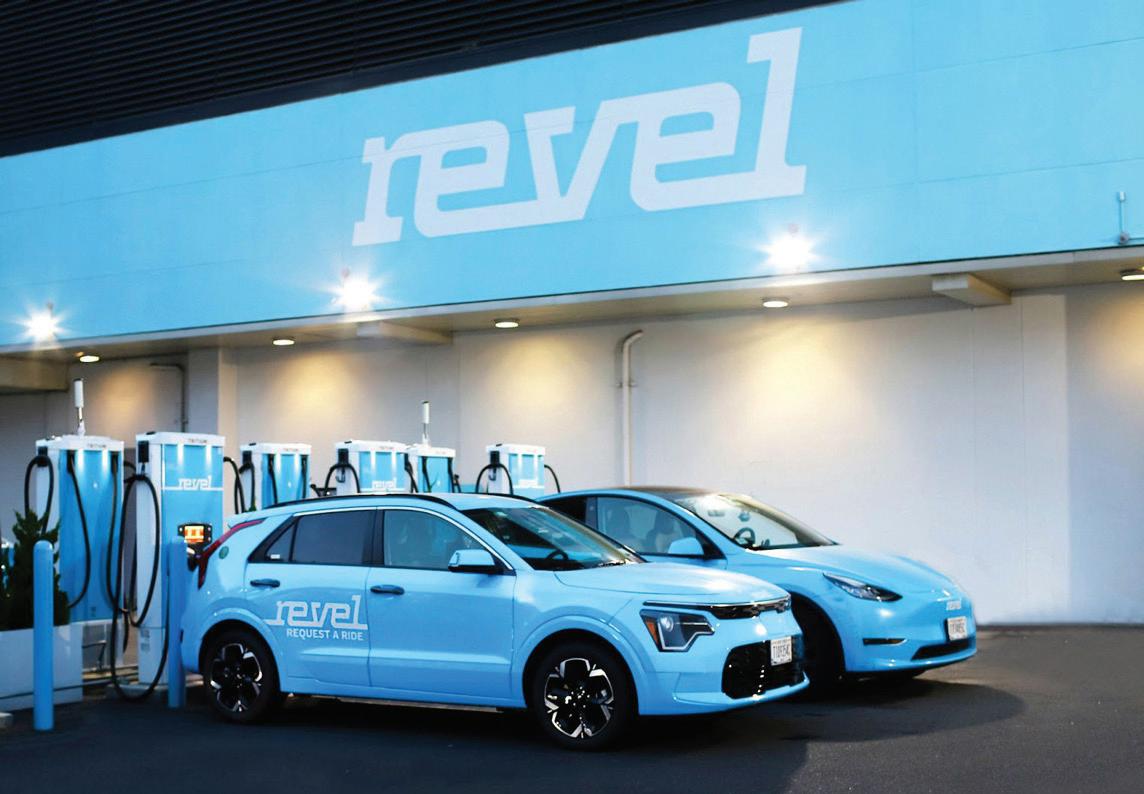
Senate Majority Leader Charles Schumer (D-NY) recently paid a visit to Revel’s agship Superhub in Bedford-Stuyvesant, Brooklyn, and took a ride in one of the company’s distinctive blue EVs.
“Revel is on a new and exciting mission to build electric vehicle charging infrastructure throughout New York City and other American cities, so cars—whether they be cars like Revel’s, other rideshare vehicles, or privately owned cars—can have easy access to e cient charging,” said Senator Schumer. “ e Infrastructure Investment and Jobs Act included $2.5 billion to help pay for EV charging infrastructure, and developers like Revel can utilize these funds. We also extended the $7,500 tax credit in the IRA to encourage the adoption of more electric vehicles to lessen carbon emissions.”
“As a Brooklyn-born company, we were honored to have another native of the borough, Majority Leader Schumer, take our one-millionth zero-emission ride and show how electri cation is taking hold in New York City,” said Revel co-founder and CEO Frank Reig.
FireFly Automatix, a manufacturer of autonomous mowers, debuted its rst all-electric mower at the recent Turfgrass Producers International (TPI) convention in Michigan.
e M100-AV is a commercial reel mower that cuts a 100-inch-wide swath. It features a LiFePO4 battery pack. e company says it can mow up to 25 acres per charge at speeds of 7 acres/hour, and recharge in 2 hours. e company says it can decrease fuel costs by 87%, and maintenance costs by 65%, compared to a fossil-powered mower.

e M100-AV can operate without on-site supervision and includes LiDAR-enabled obstacle detection and avoidance for safety. It provides intelligent path planning, so no boundary wires are needed, and mowing patterns are optimized for maximum e ciency.
Four independent electric drive motors are synchronized with two independent steering motors. e drive motors are engineered for 100,000+ hours of life.
FireFly is currently accepting pre-orders, and anticipates delivering the rst production models this fall.
“I am highly impressed by the innovative FireFly reel automatic mower,” said Scott DeBuck, owner of the farm that hosted this summer’s TPI host farm. “Its cutting performance produces beautiful results, and the capability to program various mowing angles is astonishing. Owning a mower like this would be a dream come true, and I believe that the industry as a whole would greatly bene t from such a remarkable invention.”

Amtrak uses buses all over the US to run thruway connecting services, which are scheduled to connect with Amtrak trains. e agency’s rst electric bus will run between Seattle and Bellingham, lling the gap between the morning and evening trains on the Cascades route, saving approximately 10,000 gallons of diesel fuel per year.
Amtrak’s new electric bus (or motorcoach) is a 45-foot Van Hool CX45e. It has a 660 kWh Proterra battery system that delivers 260 miles of range. It’s owned by coach operator MTRWestern, and it can make the nearly 200-mile round trip on a single charge. e charging hub, which features ABB EV chargers, is at MTRWestern’s Seattle facilities.
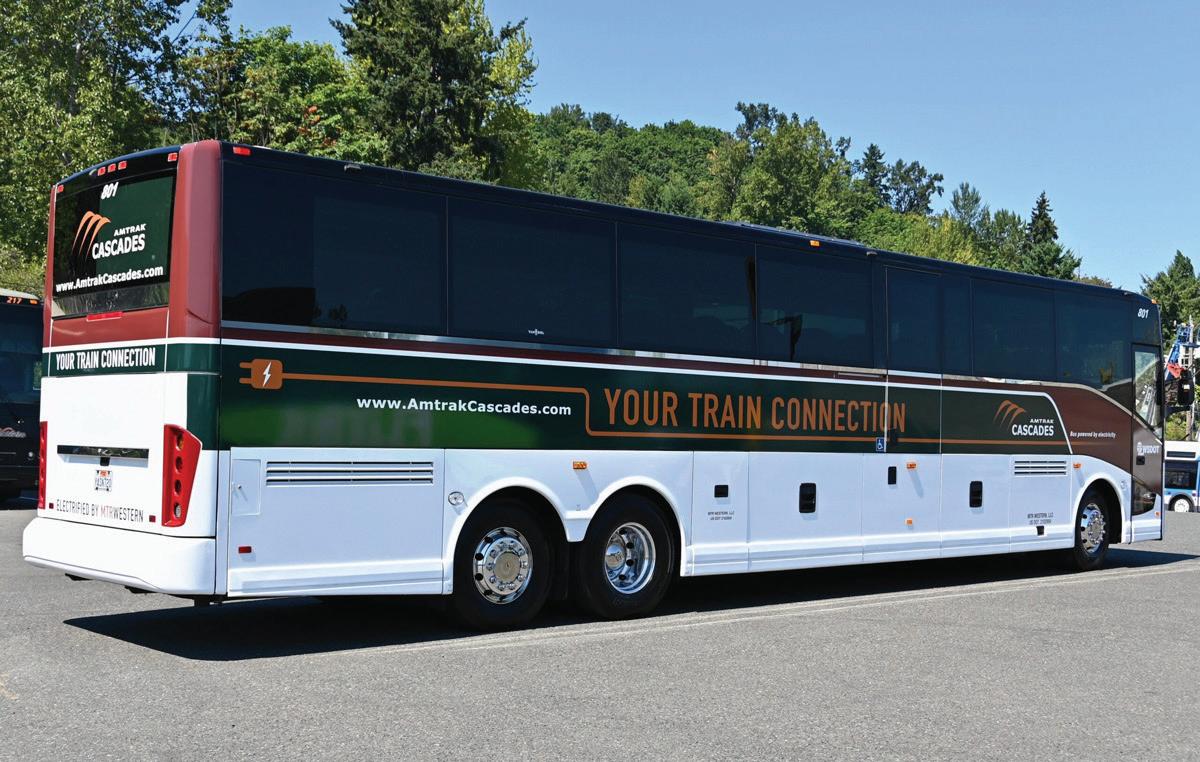
Amtrak says it is evaluating other routes within its National Network for EVs.



“At Amtrak, we strive to give our passengers reliable, comfortable and sustainable travel options. By incorporating environmental considerations into our current operations, we continue to make Amtrak an even greener mode of transportation,” said Amtrak Sustainability Director Kara Oldhouser.
“ e future is electric, and we are committed to delivering carbon-free intercity and group transportation throughout the Paci c Northwest,” said MTRWestern President Jeremy Butzla .

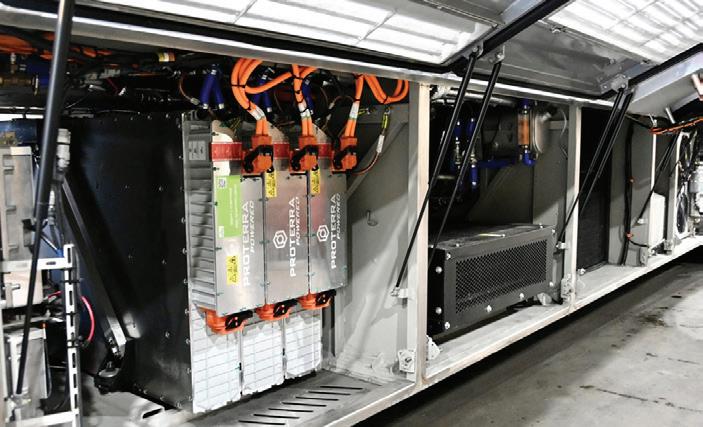 Image courtesy of Amtrak
Image courtesy of Amtrak

Volvo Trucks has introduced new, more powerful batteries for its medium-duty electric trucks, the Volvo FL and Volvo FE.
e new batteries o er 42% more energy capacity, and are capable of delivering an increased range of up to 450 km (280 miles) in the Volvo FL Electric or 275 km (170 miles) in the Volvo FE Electric, the company said.

e trucks can now handle most types of routes and assignments in urban areas, as well as power equipment for energy-consuming assignments like refuse handling or city construction.
e higher capacity means that fewer batteries are needed to supply the same power. If customer assignments require shorter ranges, they can increase their payload by using fewer batteries—with a payload increase of 500 kg for every battery not carried.
“With a range of up to 450 km, our electric trucks are ready to replace our customers’ entire eet of diesel city trucks,” says Jessica Sandström, SVP Product Management at Volvo Trucks. “For some customers, it’s more important to get extra payload, rather than maximizing the range.”
Medium-duty commercial EV manufacturer Lightning eMotors has started production of its next-generation GM-based Lightning ZEV4 work trucks.
Lightning is o ering the ZEV4 for several vehicle applications, including box trucks, stake bed trucks, utility trucks, dump bed trucks and daily work/landscaping trucks, in addition to cargo delivery vehicles, shuttle buses, school buses and more.
e versatile Lightning ZEV4 model is equipped with 120 kWh batteries located within the frame rails, delivering 241 horsepower, 790 pound-feet of torque and a range of up to 130 miles, as well as improved weight distribution for better handling and improved safety, says the company. e Lightning ZEV4 is capable of Level 2 AC and 80 kW DC fast charging.
e Lightning ZEV4 is capable of Level 2 AC and 80 kW DC fast charging.
Also, Lightning’s ZEV4 platform is compatible with a variety of bodies from manufacturers including Knapheide, Rockport Trucks, Brown Industries and Morgan. At current production volumes, ZEV4 work trucks are typically available for delivery four to six months from the order date.
“ ere has never been a better time for Class 4 work truck operators to upgrade their eets to zero-emission vehicle technology,” said Lightning eMotors CRO Kash Sethi. “Aggressive funding programs—many of which can be stacked to optimize both purchase subsidies and tax incentives—combined with advanced data tracking and insights capabilities of our GM-based Lightning ZEV4 create an exciting environment for operators to act.”
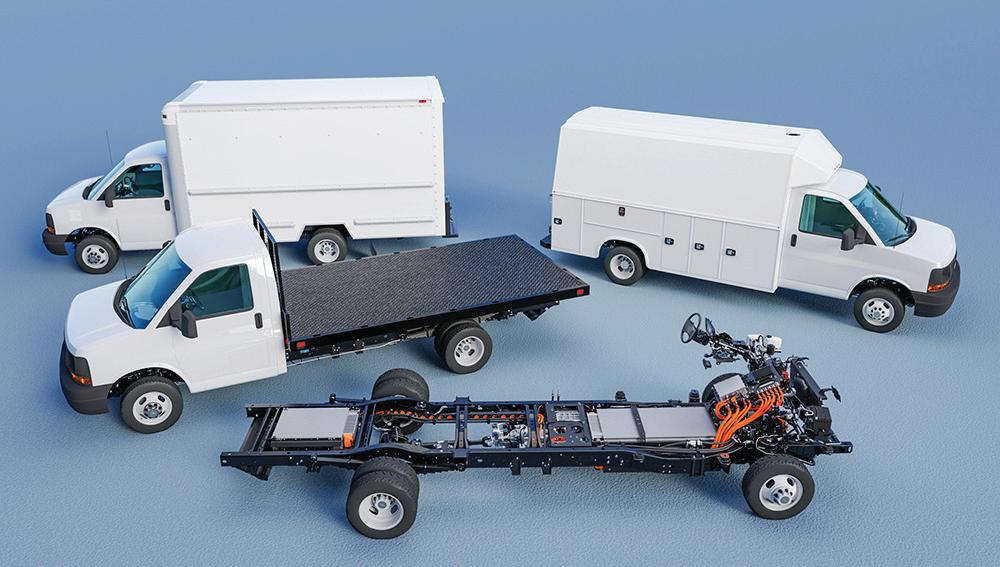
TITAN Freight Systems, a less-than-truckload carrier headquartered in Portland, Oregon, plans to add three battery-electric Freightliner eCascadia Class 8 trucks to its eet by the end of the year. e trucks will be manufactured at Daimler Truck North America’s Portland Truck Manufacturing Plant, and delivered by Premier Truck Group of Portland. e new Freightliner eM2 medium-duty electric box trucks will provide deliveries to businesses throughout the Portland Metropolitan area. To power the electric eet, six Detroit eFill commercial charging stations have been installed at TITAN’s depot.
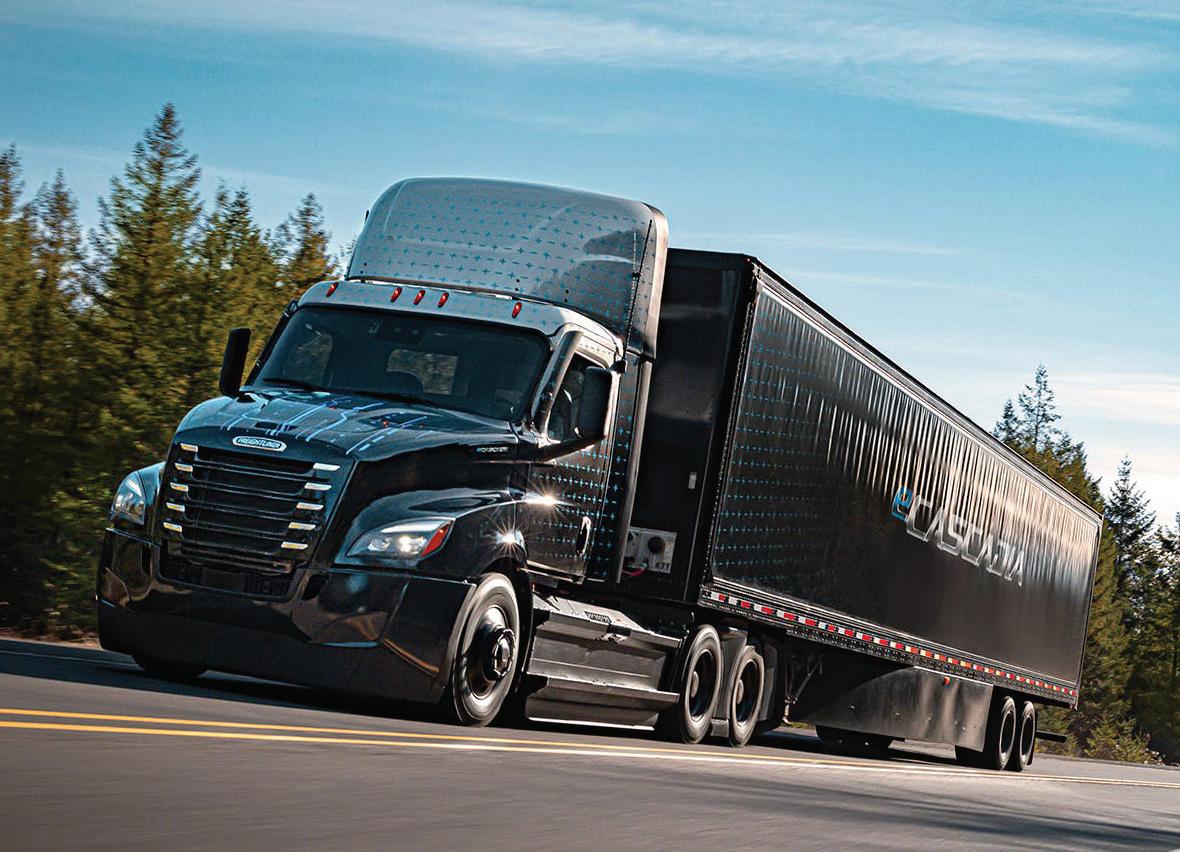
In 2019, TITAN began working with DTNA’s Electric Mobility Group to design the infrastructure that would be required to electrify its eet. In 2021, TITAN was awarded an Oregon Diesel Emissions Mitigation Grant to replace six diesel trucks with new Freightliner EVs. Portland General Electric provided technical analysis and its Make-Ready eet partner incentives to assist with charging infrastructure design and costs.
In spring 2023, the Portland Bureau of Transportation was awarded nearly $2 million through the DOT’s SMART Grants program. is funding is intended to enable Portland to pilot a zero-emission delivery zone. TITAN’s eet of electric trucks will help to facilitate emission-free deliveries within this 16-square-block area in downtown Portland.
“ ese heavy-duty electric trucks are a natural evolution in our journey to be a carbon-neutral transportation company,” said TITAN CEO Keith Wilson. “We now have a new zero-emission, lower-operating-cost tool to help us get closer to realizing our sustainability goals.”
Teflon (PTFE)
RIGID LAMINATES: G7, G10, G11, NEMA GRADES

ADHESIVES,


US-based venture capital rm bp ventures has made a £4-million investment in Series A funding for UK-based so ware company Dynamon, which specializes in developing data analytics and simulation tools for commercial transport and logistics companies. Dynamon will use the new funds to commercialize and scale up its ZERO platform and to expand its operations in Europe and into North America.
“As eets electrify,” said Stefan von Dobschüetz, General Manager for bp pulse Europe, “the commercial transport and logistics industry faces challenges balancing cost management and operational reliability, while understanding new vehicle technology.”
Dynamon’s ZERO so ware is designed to save energy and capital investment costs by calculating the best options for adoption through planning for vehicles, charging infrastructure, energy costs and operations analysis. It can also be used by existing EV eets to address cost management, support operational reliability, and monitor and manage battery degradation through data analytics.

Yellow school bus icon Blue Bird is going electric—the company has nearly 1,000 electric school buses in operation today. e latest order comes from Miami-Dade County Public Schools, which will add 20 electric buses to its all-Blue Bird eet of 1,000 school buses.
Miami-Dade County is the third-largest school district in the nation, serving more than 335,000 students. e school district received a $11.6-million grant from Florida’s Volkswagen Mitigation Settlement Trust fund to acquire the electric buses.
Blue Bird will provide its Vision electric school buses to Miami-Dade through its authorized dealer, Florida Transportation Systems in Tampa.
Each vehicle can carry 72 students, and has a range of up to 120 miles. Florida Power & Light will install 50 DC fast charging stations. Ten charging stations at the district’s Southwest Transportation Facility are expected to be operational by September 2023.
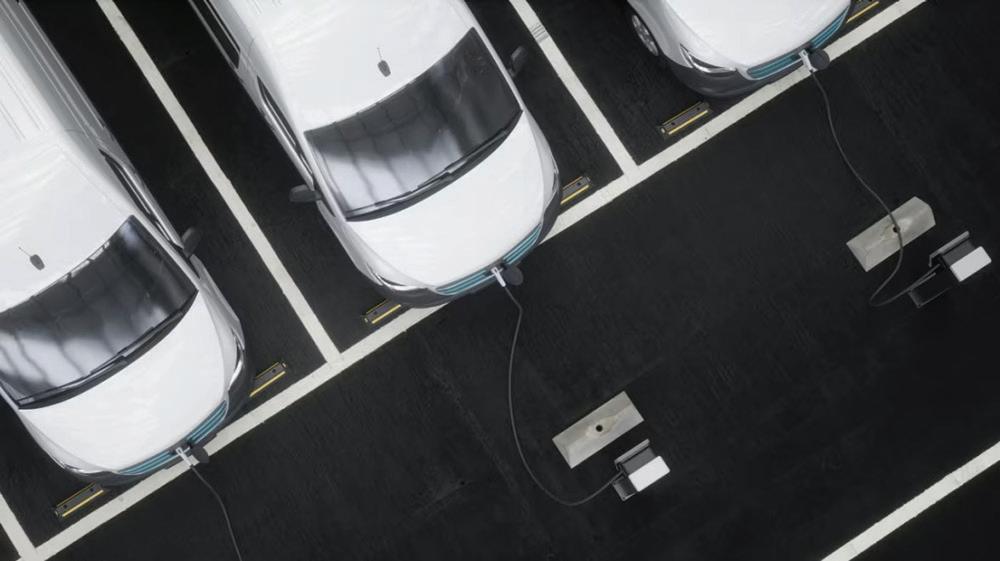
“Miami-Dade County Public Schools is excited to put its rst 20 electric, zero-emission school buses into service,” said Superintendent Dr. Jose L. Dotres. “We are looking forward to a successful pilot program and to building on our decades-long relationship with Blue Bird.”
“ is pilot program is a wonderful rst step in the electri cation of Miami-Dade’s eet and improving the air quality for its students and the community at large,” said Blue Bird President Britton Smith. “We could not be more pleased to help a long-term and highly valued customer transition to electric buses and clean student transportation.”
Motiv Power Systems, a manufacturer of electric trucks and buses, has announced a new electric truck featuring a medium-duty EV cab designed from the ground up.

e Argo Series is designed to support all medium-duty applications across Classes 4 to 6—including box trucks, step vans, shuttle buses, refrigerated vehicles, vocational vehicles and other specialties—and is built with Motiv’s next-generation powertrain, including an LFP battery pack that delivers 150 to 200 miles of range.

Motiv has been in the electric truck business for 14 years, and has deployed more than 180 vehicles for customers including Cintas, Bimbo Bakeries and Purolator.

e new Argo vehicles will boast a futuristic cab that was designed from the ground up as part of an EV. e cab is built from structural composites, and boasts many energy-e cient features, including windshields with builtin heat to save on defrosting energy, and seats heated with specially-designed air ow.
e Argo cab’s Command Seating Position was designed with the bene t of customer experience to relieve driver fatigue and increase safety. “ is feature provides superior visibility and ergonomics compared to conventional cabs, includes sightlines at the four points of the vehicle, incorporates lower belt lines for better visibility, and features door access with full-size interior steps.”
“A er years of helping eets put EVs on the roads, Motiv has the right combination of daily route experience and expertise to design and build its own cab—the next step toward becoming a full-featured original equipment manufacturer,” said Jim Castelaz, Motiv’s founder and CTO. “Many have joined the commercial EV space by jumping in head rst and starting with ultra-modern, ashy designs that don’t always o er practical driving experiences. Motiv, on the other hand, has carefully applied insights gathered over the last decade to create Argo, a truck that marries the reliability and work focus of Motor City with Silicon Valley innovation.”
e Argo Series vehicles are currently available for pre-order and will be on the road in late 2024. Argo vehicles will be manufactured in the US, and are eligible for the IRA tax credit and other incentive programs.
Austrian Federal Railways has awarded Swiss railway rolling-stock manufacturer Stadler a framework agreement for up to 120 FLIRT Akku battery-powered trains.
e rst 16 are expected to be delivered by fall of this year.
e vehicles are designed to replace the current diesel eet in the eastern region of Austria. ey will enable sustainable operation on lines that are only partially electri ed. is is accomplished on non-electri ed line sections by charging the batteries while traveling under overhead contact lines.
e normal battery-powered operating range is about 100 km, but Stadler says the FLIRT Akku holds the world’s record for the longest distance traveled by a regional train in battery-only mode without additional charging: 224 km.
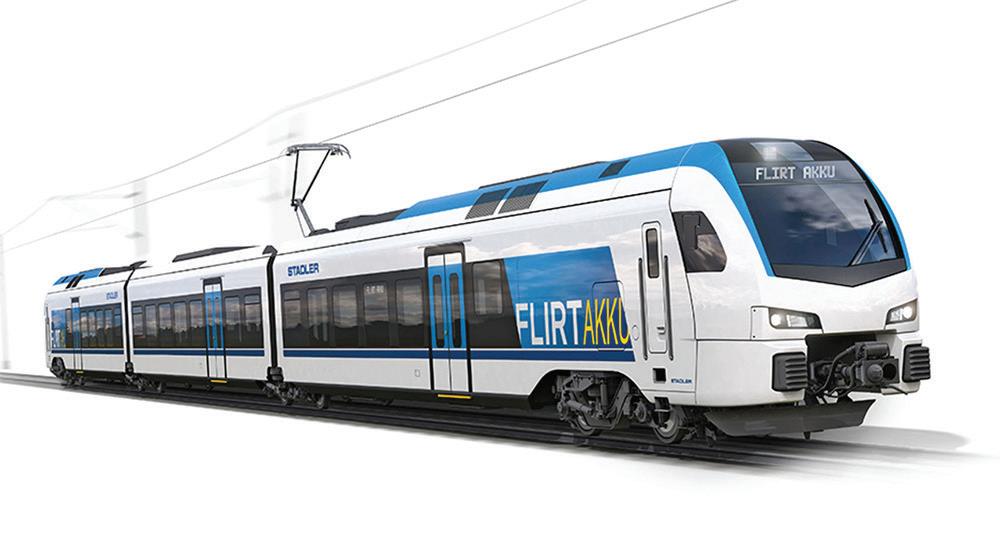
Stadler, which also o ers hydrogen and hybrid propulsion trains, is supplying 55 FLIRT Akku vehicles for the Schleswig-Holstein local transport network, 44 for the Palatinate network, 14 for Deutsche Bahn’s H-Netz, and six for the Lithuanian rail operator LTG Link.
One of the world’s largest construction companies is now testing one of the world’s largest EVs.
Turner Construction Company is conducting a pilot of Volvo Construction Equipment’s 23-ton EC230 Electric excavator. Turner is using the e-excavator on a light manufacturing recon guration project for Applied Materials in Silicon Valley. e enormous EV will be used for the placement of deep utilities, back lling, building pad excavation, compaction and material movement.
“Turner is a great organization for us to partner with to test the capabilities and bene ts of a zero-emission machine that is a major advancement in bringing sustainability solutions to our industry,” said Scott Young, Acting President of Volvo CE North America.
One major challenge for EVs on construction job sites is providing su cient charging power. As part of the EC230 Electric excavator pilot, Sunbelt Rentals is providing a mobile, o -grid energy storage solution. A 600 kWh battery energy storage system BESS will power a mobile fast charger, so the excavator can be recharged over a lunch break to provide su cient power for a full day’s work.
e Turner Construction Company project is one of several pilots Volvo CE has scheduled for the EC230 Electric excavator in North America.
e EC230 Electric has launched in Europe and China, and is expected to be available in North America in 2024. It will join Volvo’s lineup of commercially available battery-electric heavy equipment: three compact excavator models, two compact wheel loader models and an asphalt compactor.
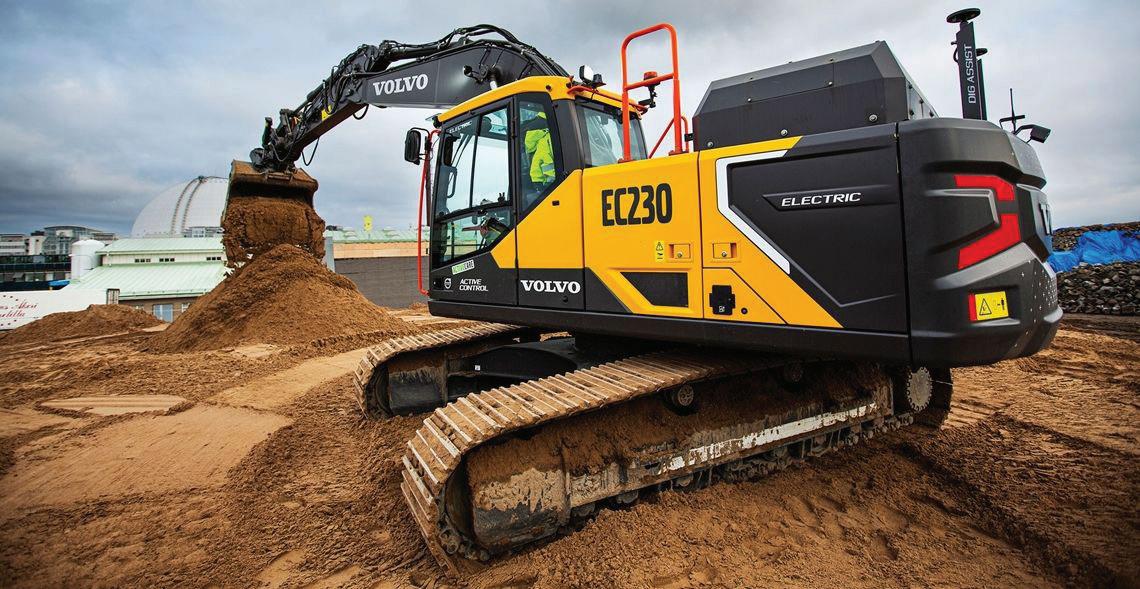





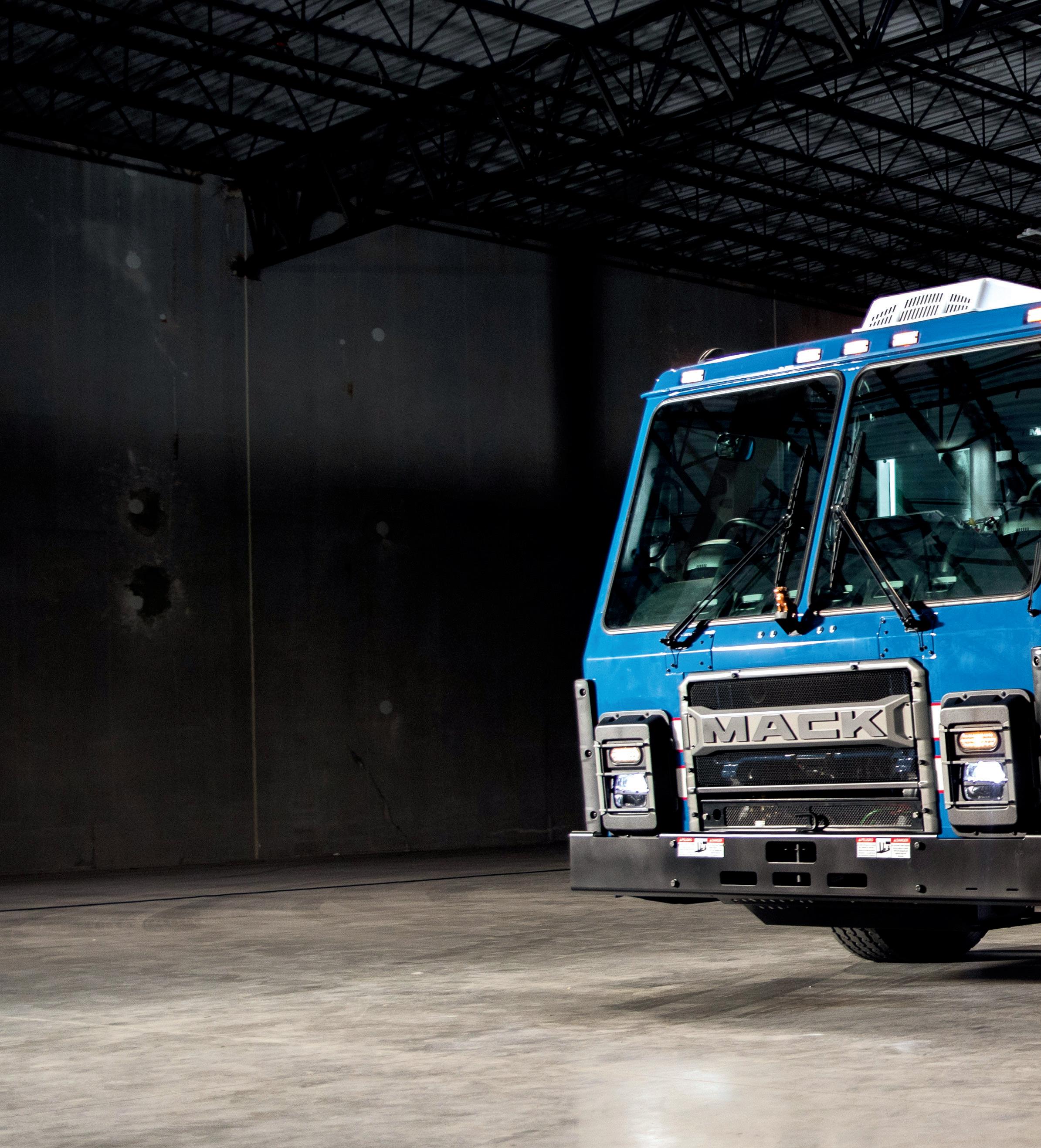





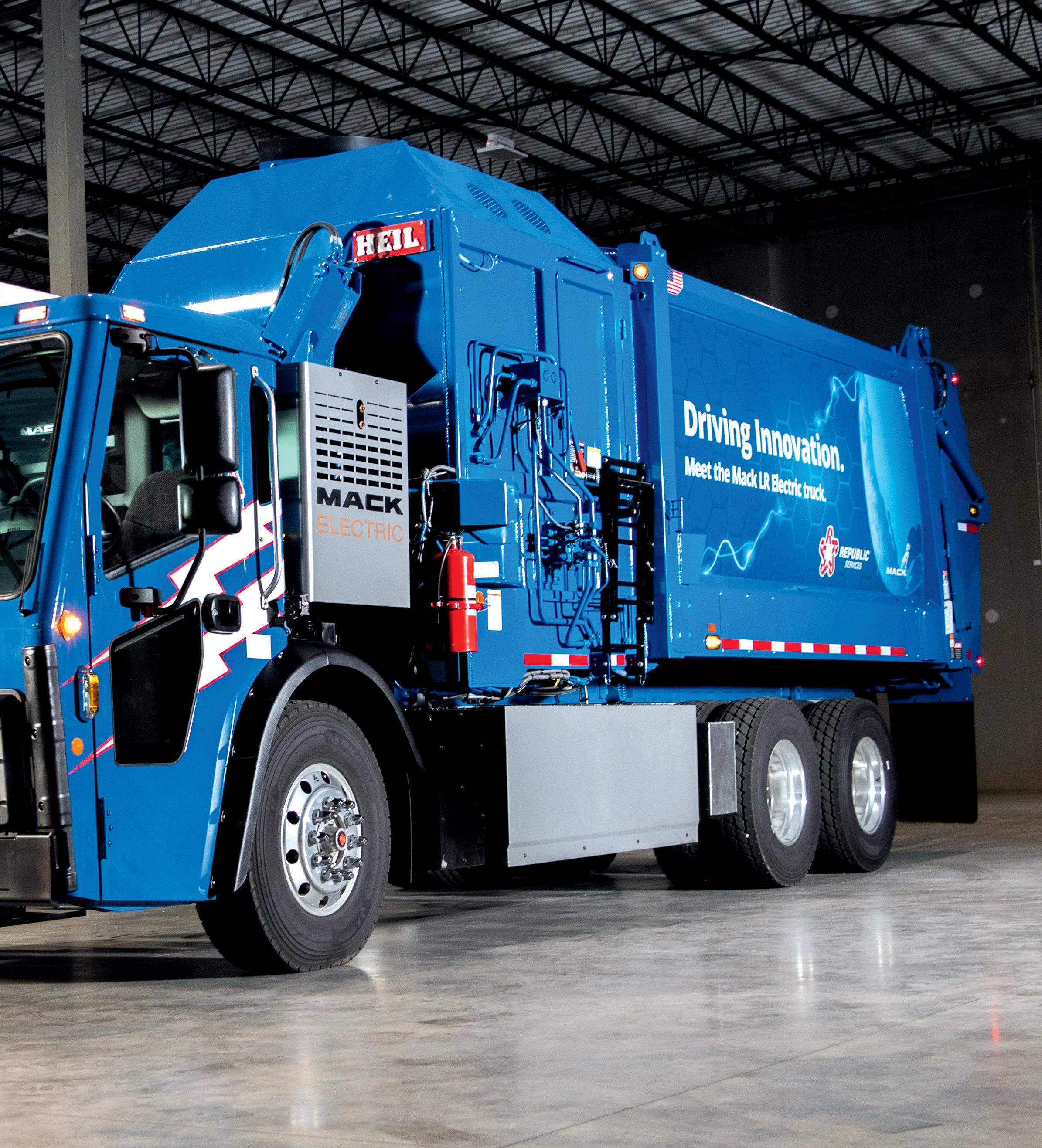 By Charles Morris
By Charles Morris


Most followers of tech trends probably think of electric vehicles as luxury performance cars, but here at Charged, we get just as excited about commercial vehicles. As regular readers know, the electri cation of trucks and other heavy-duty vehicles is quickly picking up, driven by both regulation and technological developments.

Speaking of picking up, garbage trucks may be the least glamorous of vehicles, but we all rely on them, and they turn out to be excellent candidates for electri cation, given their typically short routes and stop/start duty cycles. Mack Trucks has been building refuse vehicles for decades, so it’s no surprise to nd that the company is now building an electric refuse truck.

Mack’s rst foray into electri cation was in the 2000s, when it built a couple of diesel hybrid garbage trucks.

e vehicles worked well, but the costs were high at that time, and the company decided that the technology wasn’t mature enough for full commercialization. A few years ago, nding that EV tech had advanced, Mack decided to build an electric truck for a long-time customer, the New York City Department of Sanitation. A prototype and a testing program followed, and Mack is now in production with the LR Electric truck (the name means “Low-entry Refuse”).
Scott Barraclough has been with Mack Trucks for over 20 years now, primarily on the powertrain side, and has been working on e-mobility for the last 5 years. He’s been involved with the development of the Mack LR Electric almost from the start of the program. He recently spoke with Charged about Mack’s electri cation push.
Q Charged: Tell us about some of the refuse vehicles you have out there. Are there any customers or case studies you can talk about?
A Scott Barraclough: We’ve been running tests since 2020. e City of New York and Republic Services have been the ones running the trucks the longest. New York has seven of them online already, or coming online very shortly. Republic has a couple running as well. Operationally, they work very well. ey’ve been very pleased with them.
e drivers really love them. From an operator perspective, they’re great. ey’re very quiet. You don’t have a diesel engine, so they’re much quieter and more comfortable for the operator. If you think about that, in a refuse truck, if you’re sitting in the driver’s seat, the diesel engine is essentially under your right arm.
The drivers really love them. From an operator perspective, they’re great. They’re very quiet.



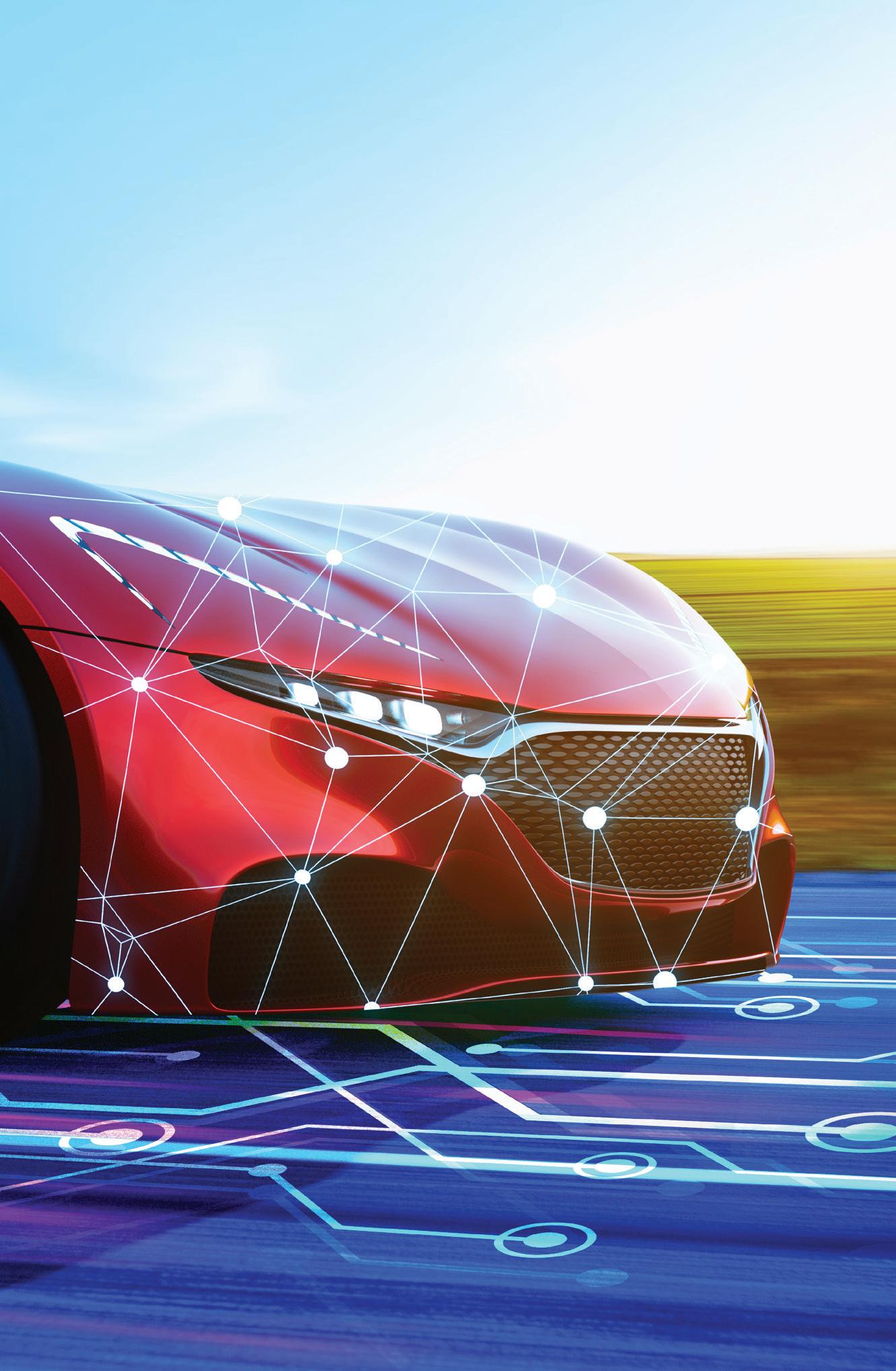

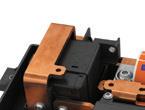
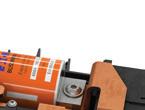

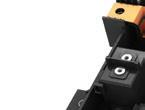

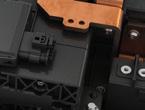


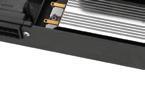


As with any electric vehicle, the challenge has been range. In New York City, it really hasn’t been their routes. If you think about New York, it’s all in a very dense area. ere’s not a lot of distance to be covered. But when you start getting out into suburban routes, there are a lot of routes where electric trucks t very well, but not all of them. And we know that, so what becomes important is identifying the routes where the truck will work and then assigning the truck to those routes.
Q Charged: What is a typical range for a garbage truck’s route?
A Scott Barraclough: at’s a big “it depends,” because every route’s di erent. It depends on climate, topography, driver habits. When you look at a refuse truck, they are more o en than not in residential collection, and it’s not just driving from A to B—you’ve got to stop 500 to 700 times in the middle to pick up a can of trash. Again, it really depends, but in the neighborhood of between 70 and 100 miles.
e bodies which include trash compactors run o a power takeo on the truck. It’s the same hydraulic body in most cases that you have on a diesel truck. at consumes power, and if the body’s using power, you can’t use that to drive the truck, so you have to take that into account as well. But there are electric bodies out there that bring their own power. at can extend your range by 20%, 30%.
Q Charged: Is there variation in the payload or what’s collected?
A Scott Barraclough: It can vary, and that certainly is a factor when it comes to range, because the heavier the vehicle, the more energy it takes to move it. We started looking at recycling. It’s generally quite a bit lighter than general trash. So, it depends on the route they’re putting it on.
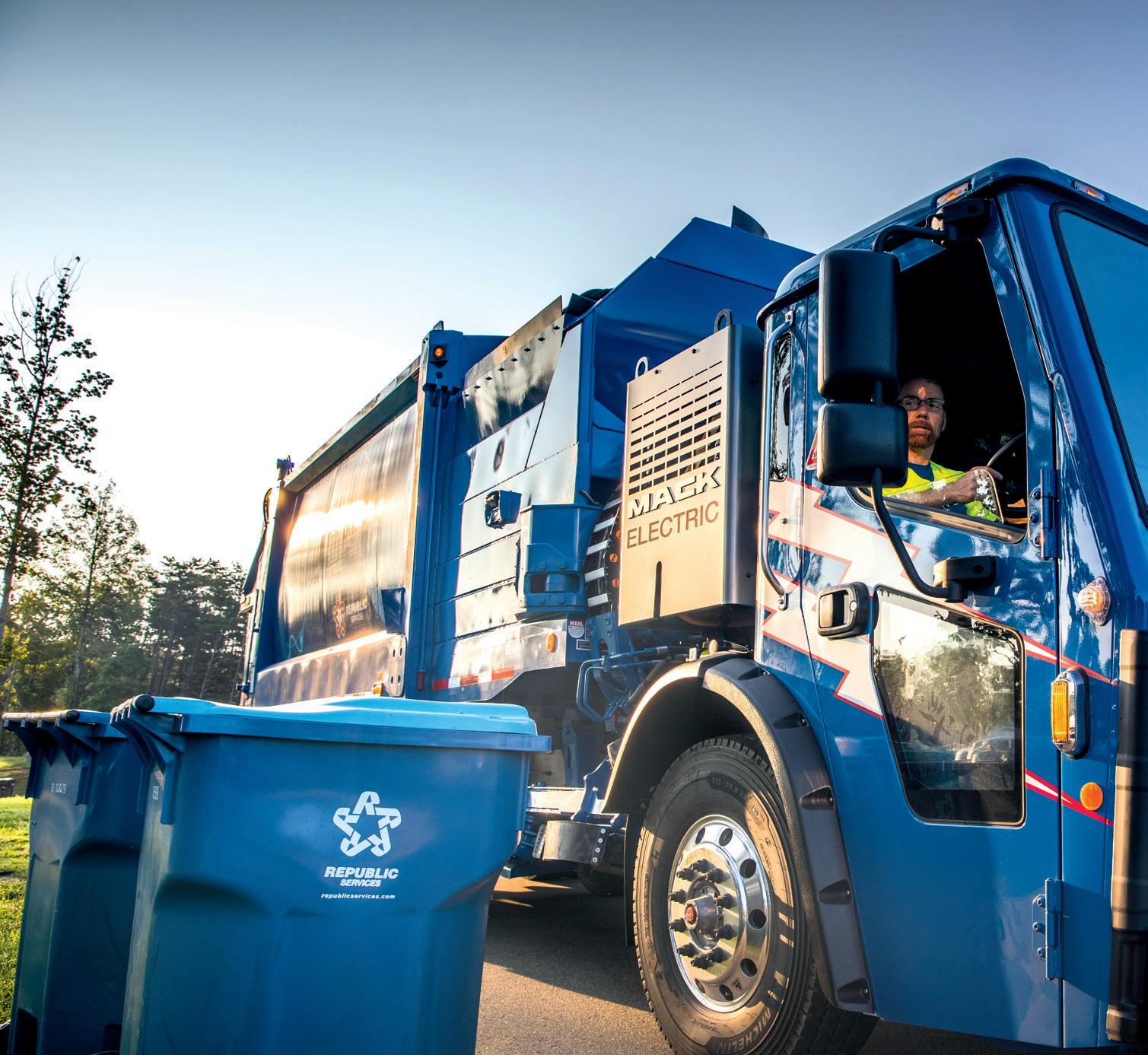
Q Charged: e LR Electric chassis has a 376 kWh battery pack. at’s very big.
A Scott Barraclough: Well, it all depends on what you’re comparing it to. ere’s nothing even close to that on the passenger car side, but your passenger cars are not rated at 66,000 pounds either.
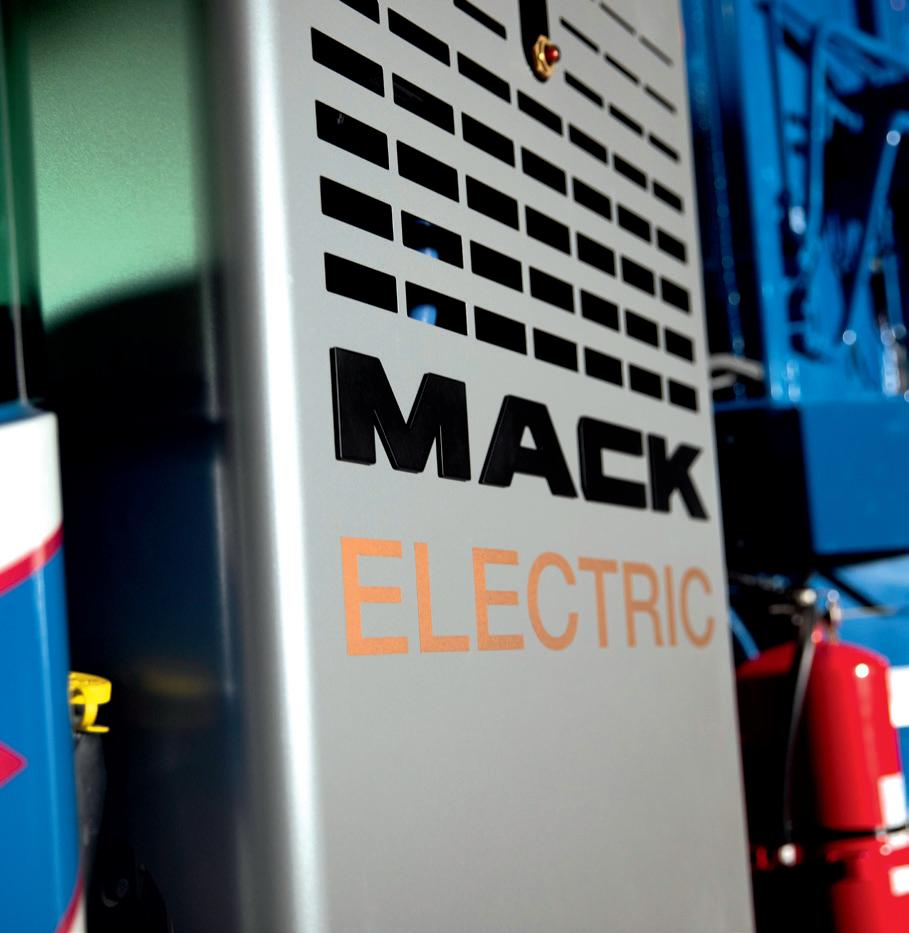
You’ve got to stop 500 to 700 times in the middle to pick up a can of trash. Route length really depends, but in the neighborhood of between 70 and 100 miles.Images courtesy of Mack Trucks
Q Charged: What is the main driver for a city to put these trucks in their fleet? Is it state and local incentives, is it that a municipality is really interested in the technology, or are there regulations coming down the line that you think will drive EV adoption?
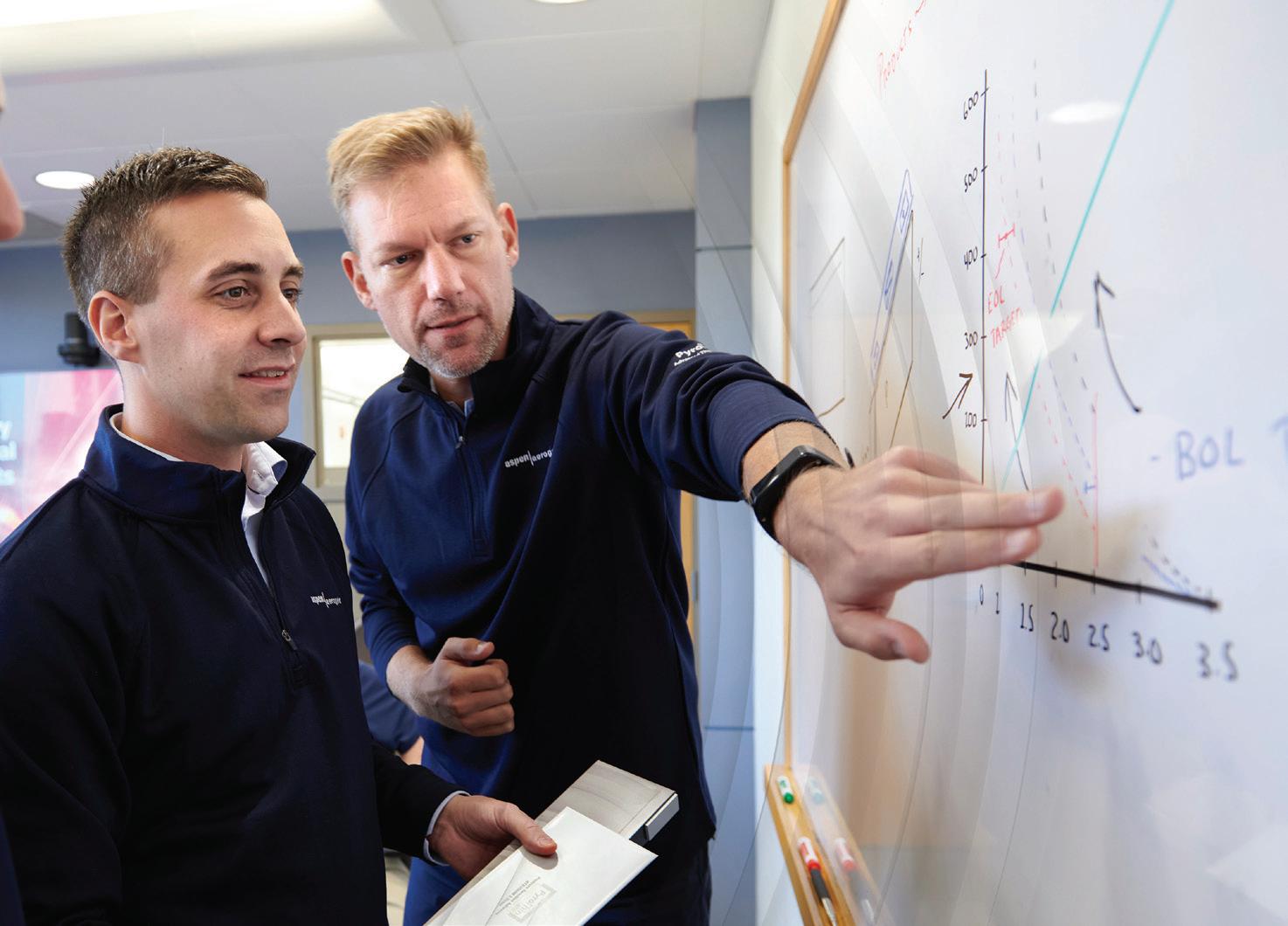
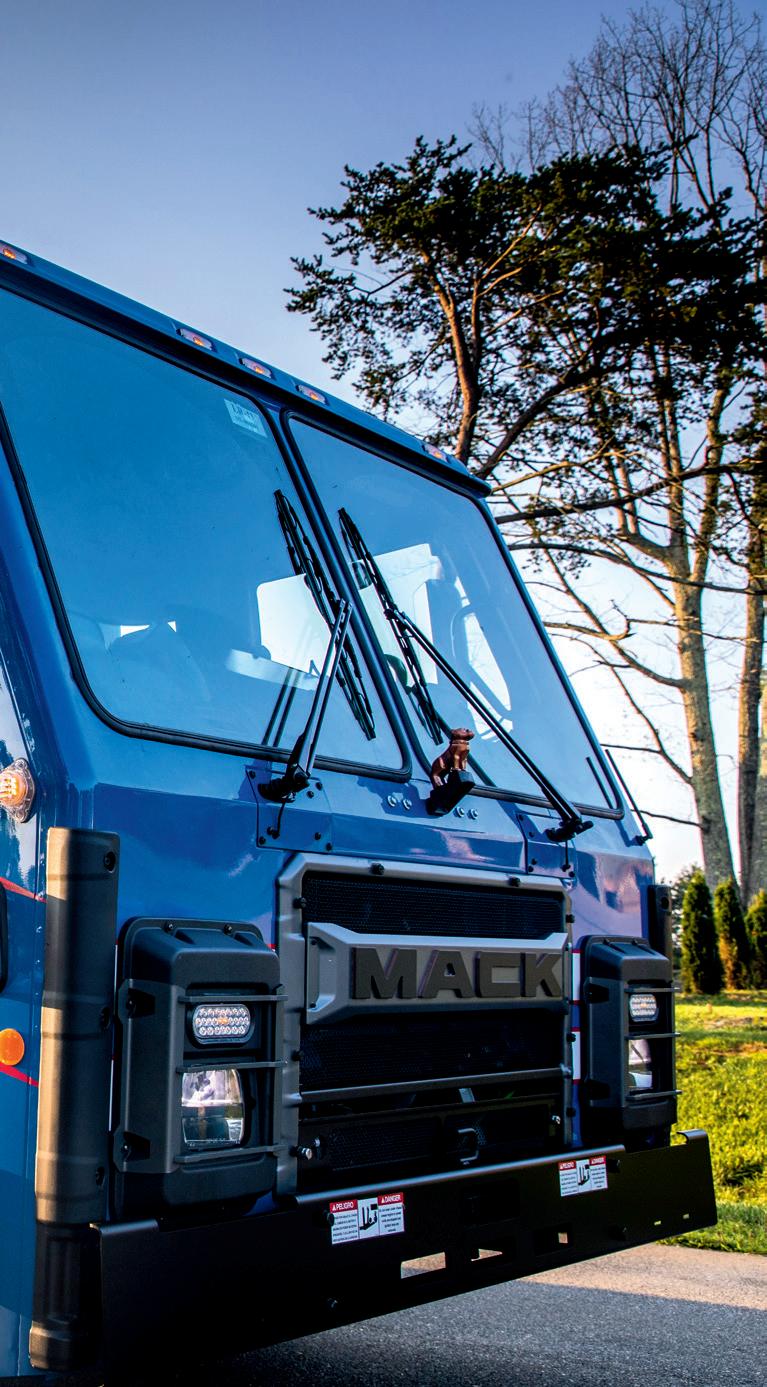
A Scott Barraclough: I would say all of the above. Yes, there are incentives out there, and almost all of our customers when they are getting into the LR Electric are using incentives of some kind. Also, depending on where you’re operating, there will be mandates coming in some areas, namely West Coast, California, Washington, Oregon, where fleets of a certain size will be required to have electric vehicles. Customers are wanting to get a little bit ahead of the game there and get experience with them. And then, there are also municipalities and
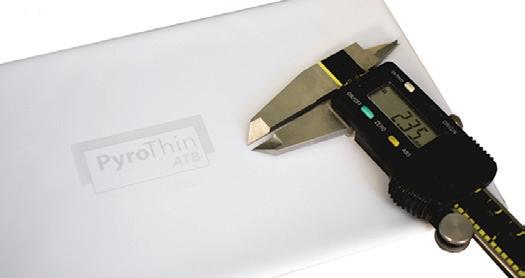

other companies out there that are very [forward-thinking] and have a green mindset, and electric vehicles t very well with that. So, I would say all three of those are factors for customers considering electric vehicles.
Q Charged: You also have a medium-duty electric truck in the pipeline. What sort of target markets do you think that that’ll be a good t for?
A Scott Barraclough: Yes, the new MD Electric will be coming to production late this year. e medium-duty is a di erent animal than your heavy-duty trucks, but we see a lot of general freight box trucks, atbeds, stake trucks, refrigerated units, even getting into some smaller dumps. We can’t go too big with a dump because it has more of a lightweight chassis, but smaller dumps for municipal or landscaping usage, things like that. It’s a pretty adaptable chassis. It can be used in a lot of di erent applications. We have two options available for the battery pack on the MD Electric, a 150 kWh pack and a 240 kWh pack.
Q Charged: So, you sell the chassis as is and then third-party up tters build the other systems on them?
A Scott Barraclough: at’s correct. We provide the chassis and then a body company will install whatever body the customer needs. It’s the same with the refuse truck—we build the chassis and then there are refuse body companies out there that will install the body onto the chassis.
Q Charged: I imagine the electric trucks deliver a substantial amount of savings on fuel and maintenance. Do you have an idea of what the total cost of ownership is versus diesel, or what the payback period is?
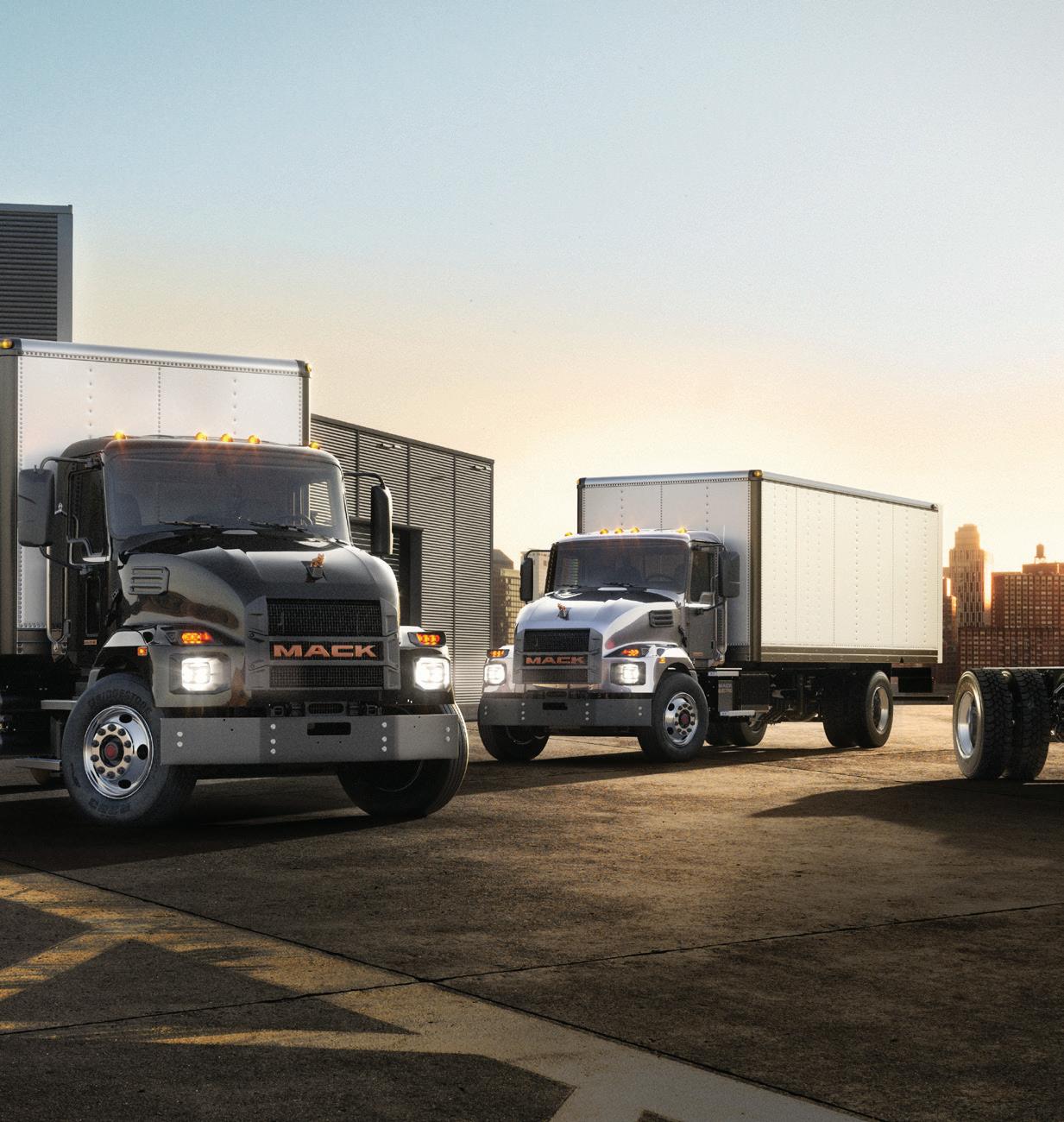
A Scott Barraclough: Again, that’s going to vary, on both the MD and the LR Electric. Both are di erent in that respect. On the LR Electric side, we can do a total cost of ownership analysis, but to start making a reasonable business case, incentives need to be involved at this point in time. And they have been. ey’re out there. We’ve seen our customers taking advantage of incentives that are available.
Q Charged: e LR Electric has two-stage regenerative braking. Can you explain how that works?
A Scott Barraclough: Yes. e LR Electric and the MD Electric are a little bit di erent in their operation, but for the LR Electric, you can have it in Low or High mode, which controls the amount of retardation that you get and how quickly it slows the vehicle. In High mode, when you take your foot o the throttle pedal, the regenerative braking kicks in. at’s the setting that you want to use going house to house—as soon as you take your foot o the throttle, it slows down. [Editor’s note: is is what some EV makers call “one-pedal driving.”]

We see a lot of general freight box trucks, fl atbeds, stake trucks, refrigerated units, even getting into some smaller dumps.
We also have an automatic setting which blends the regenerative braking in with the brake pedal. So just taking your foot o the throttle is not enough to instigate the regenerative braking. You’d want to use that when you’re driving back to the land ll or back to home base. Because as you’re driving down the road, once you get up to speed, you may want to take your foot o the throttle and just coast to maintain speed in tra c, but you don’t necessarily want to slow down.
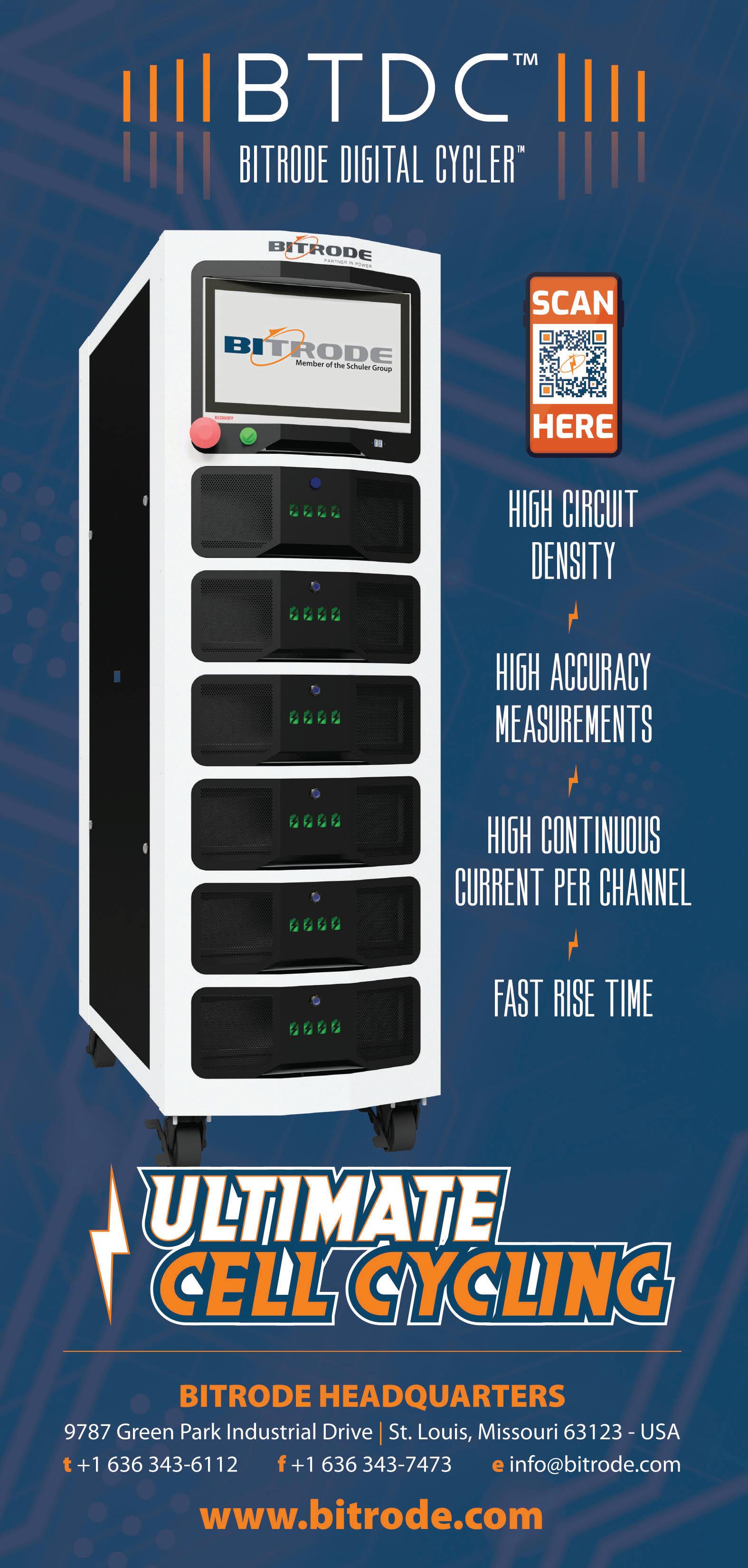
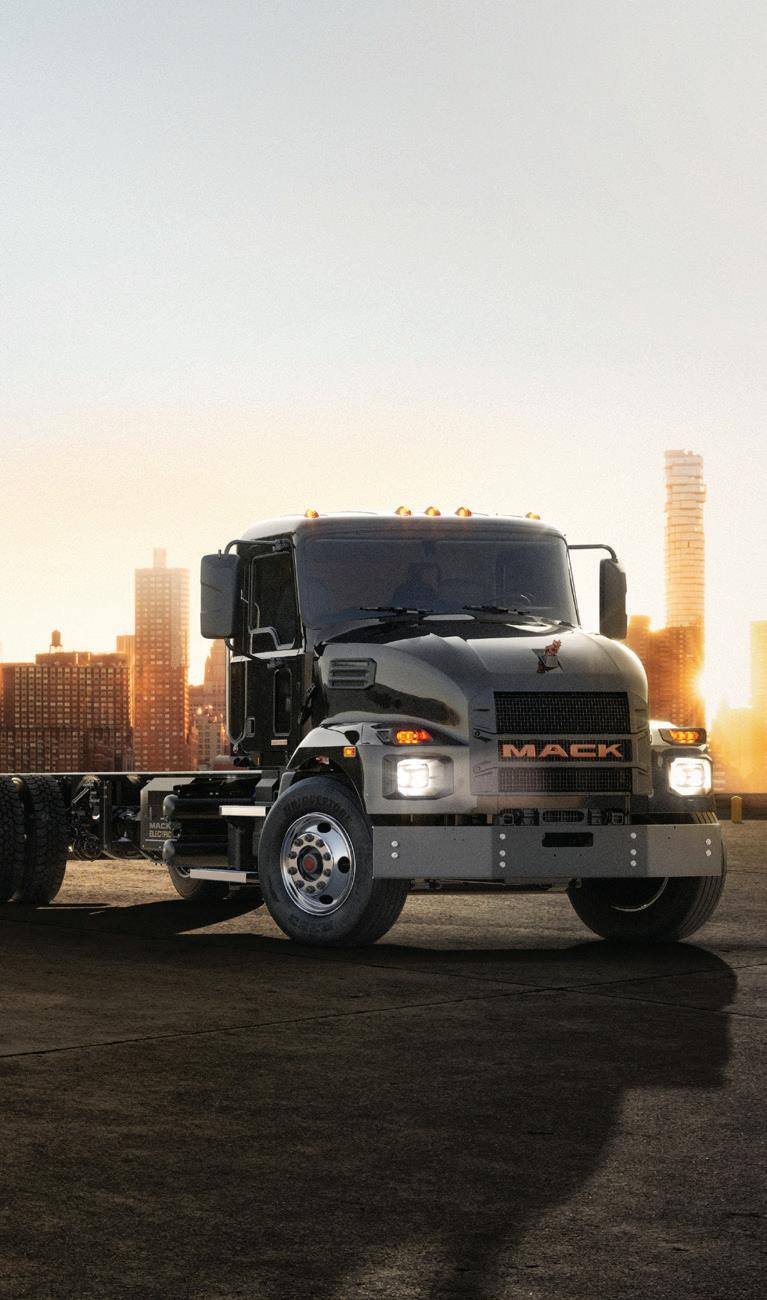
Again, these are a little bit di erent than cars as far as how they operate, on the refuse side. e medium-duty side is much more like a passenger vehicle as far as the way it operates.
 Image courtesy of Mack Trucks
Image courtesy of Mack Trucks
Q Charged: at reminds me of a report I read a few months back about a delivery truck application. One of the surprising reports from the electric truck drivers is that they found it very nice not to have to slam on the brake every time in stop-and-go applications. It’s something I didn’t really consider, but I imagine that’s a huge driver incentive.
A Scott Barraclough: Oh, yeah. It takes a little driver education and it takes a while to get used to, because it’s di erent than what you’ve had on a combustion-powered car, but once you get used to it and gure out how to work it, it works very well. On refuse trucks especially, if you think about it, they’re going house to house 600, 700 times a day. ey eat brakes, as you might imagine. e regenerative braking is going to help with the operating costs there, signi cantly improving brake life on the vehicles.
Q Charged: You also have a vehicle-as-a-service o ering, like a leasing system. But can you talk to us about your infrastructure-as-a-service program and what that provides for eet buyers?
A Scott Barraclough: e eet buyers work with our Mack nancial folks. We help them get their infrastructure installed and up and running at their facility, and work that into a xed payment, similar to the way they would with the vehicle-as-a-service program.
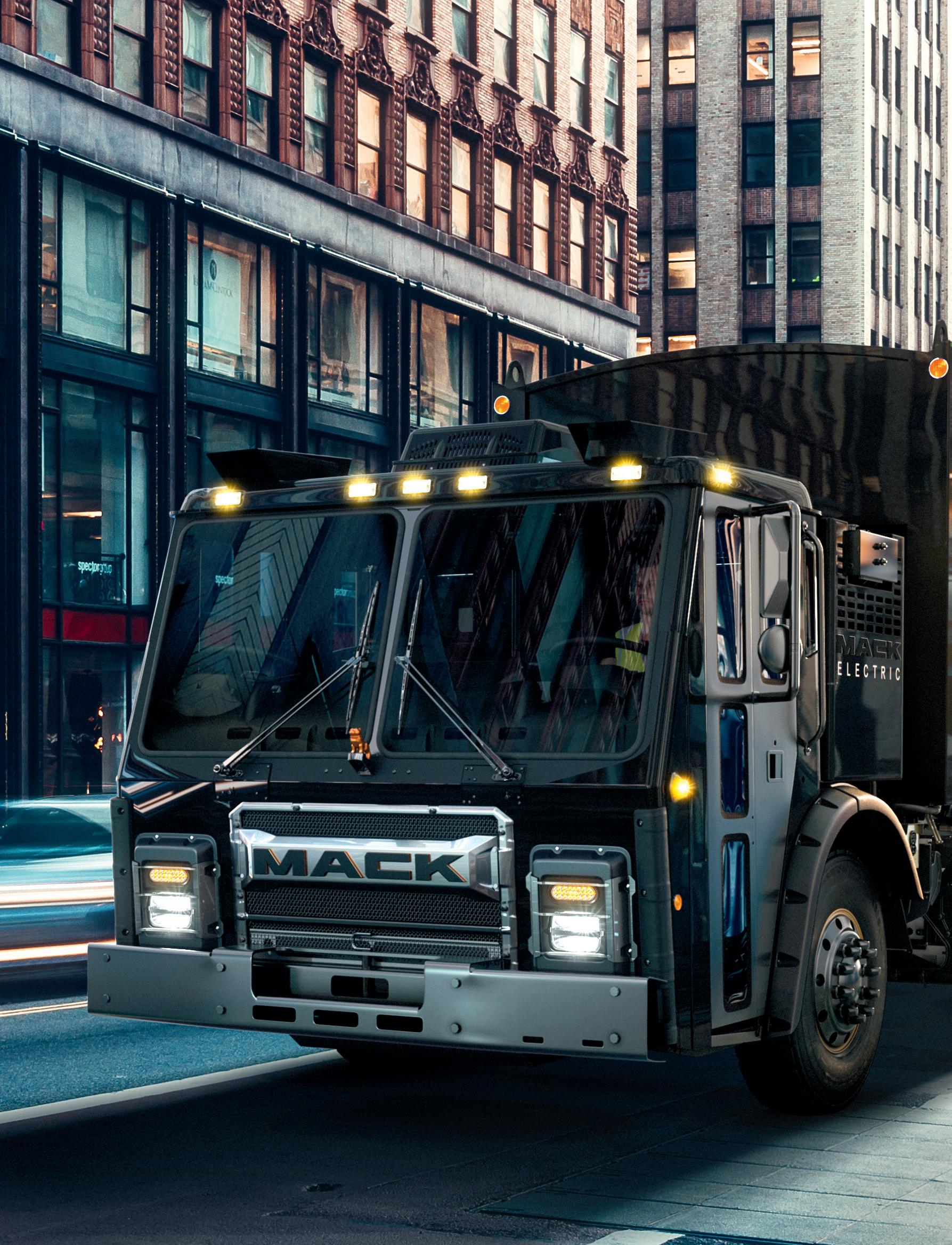
Q Charged: More and more companies are telling us that, as they go from a single vehicle to multiple vehicles, the charging complications really compound for eet facility managers.
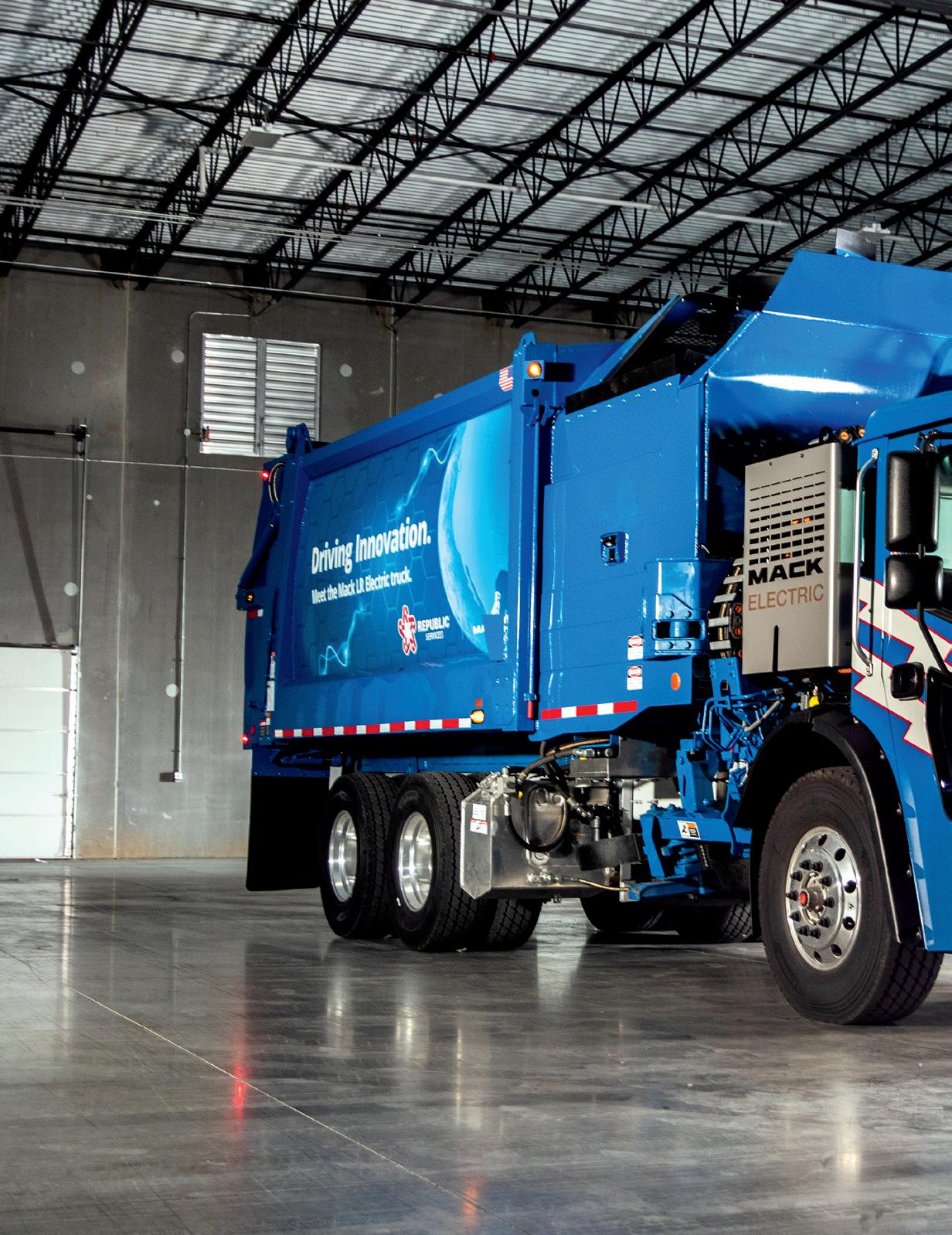
When going house to house 600, 700 times a day...they eat brakes, as you might imagine. The regenerative braking is going to help with the operating costs there, signifi cantly improving brake life on the vehicles.
A Scott Barraclough: For anyone considering a heavyduty electric vehicle, as soon as you start thinking about the truck, you really need to be thinking about the charging as well. Because in many cases, you may be able to acquire a truck before your facility would be ready to charge it, and they need to be happening simultaneously. You want to have your charger up and running before the truck shows up. Because if it goes the other way, you’re not operating the truck.

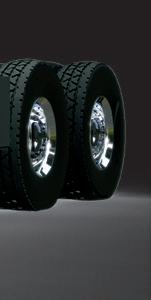
Getting charging infrastructure set up depends on the facility—some facilities have the power needed already there, and it’s not a major undertaking. Other facilities don’t. e utilities need to become involved, and that all takes time. at all needs to be done before the truck shows up. So, infrastructure’s an extremely important part of the equation, and frankly, you probably should be thinking about the infrastructure before the truck. You can’t take these [trucks] and plug them into the wall.

Q Charged: Can you tell me a bit about the charging capabilities of both trucks?









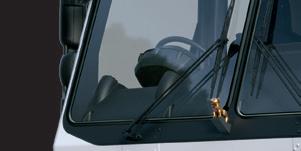

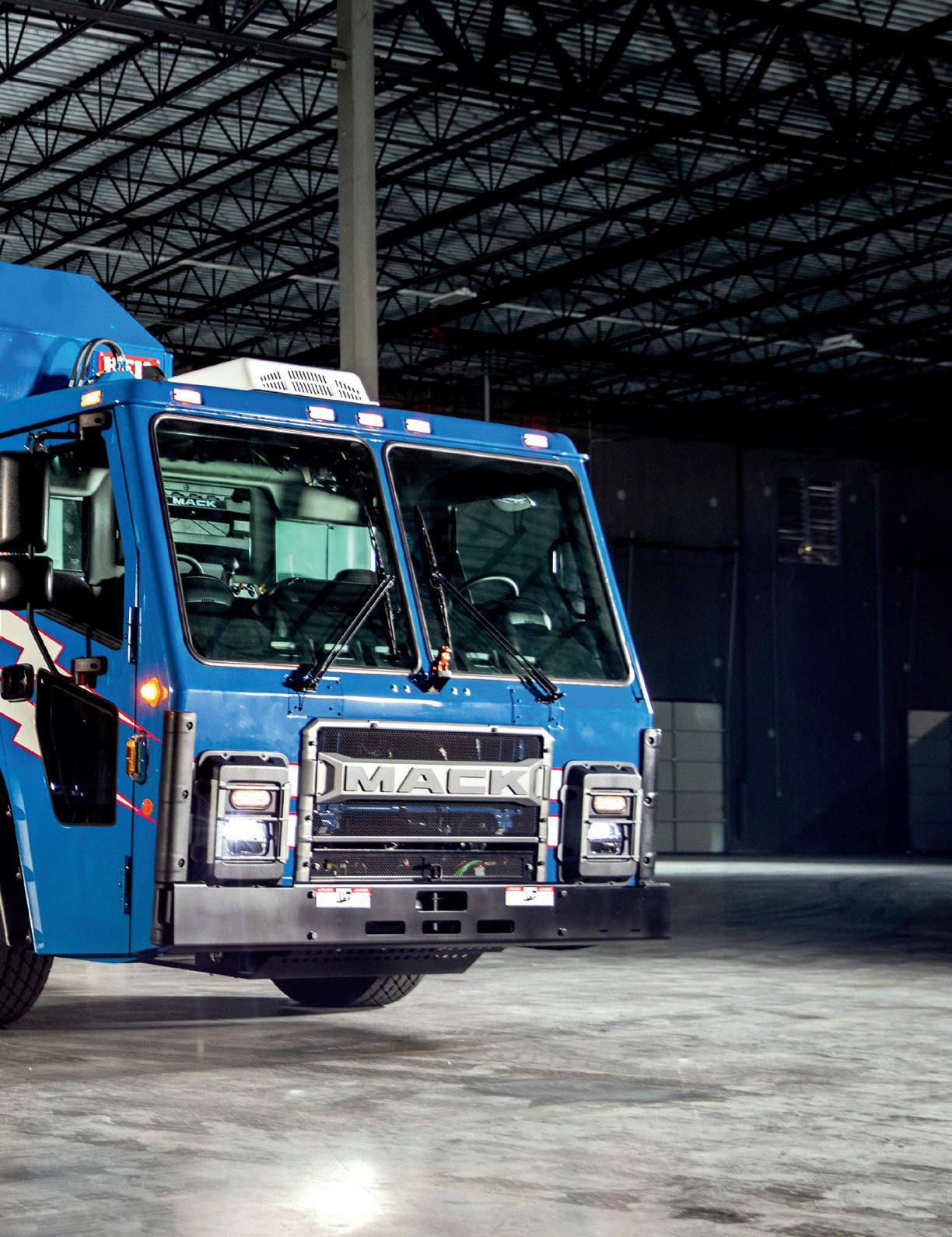
A Scott Barraclough: On the LR Electric, it is DC fast charging only. at’s about the only way that’s really practical for that vehicle's pack of 376 kWh. You need to be charging at a high rate, even if you’re going to be charging overnight, which most of our customers are going to do. ey’ll run their shi during the day, plug it in at the end of the shi . e LR Electric has a much bigger pack on there too, so you can charge at a higher rate, up to 150 kW. On the MD Electric, it will do DC fast charging up to an 80 kW rate, as well as Level 2 charging up to 19.2 kW.


Q Charged: But I would imagine that’s predominantly overnight charging as well, right?

A Scott Barraclough: Yes. Our customers made it very clear that they would prefer to run their trucks all day without having to charge, or a full shi without having to charge. So, they will charge overnight and then run the trucks for the shi , and then charge again overnight for the next route, or the next day. Typically, our customers are getting the 50- to 80-kilowatt chargers, and that’s more than su cient to charge overnight.

Is Tesla planning to go wireless? e company has long touted autonomous driving technology, which will require some form of automated charging. In 2015, Tesla showed a prototype of a gee-whiz “snake charger.” In 2017, there were rumors that it was working on a ground-mounted automated conductive charger. is March, Tesla teased what appeared to be a wireless EV charging system, feeding speculation that it had come around to the wireless way. Now the suspicions have been con rmed—Tesla has agreed to acquire Wiferion, a German startup that provides inductive charging technology.
Wiferion was founded in 2016, and says it has deployed over 8,000 chargers, mostly for industrial robots. In 2022, Wiferion announced a global licensing agreement with wireless charging pioneer WiTricity.
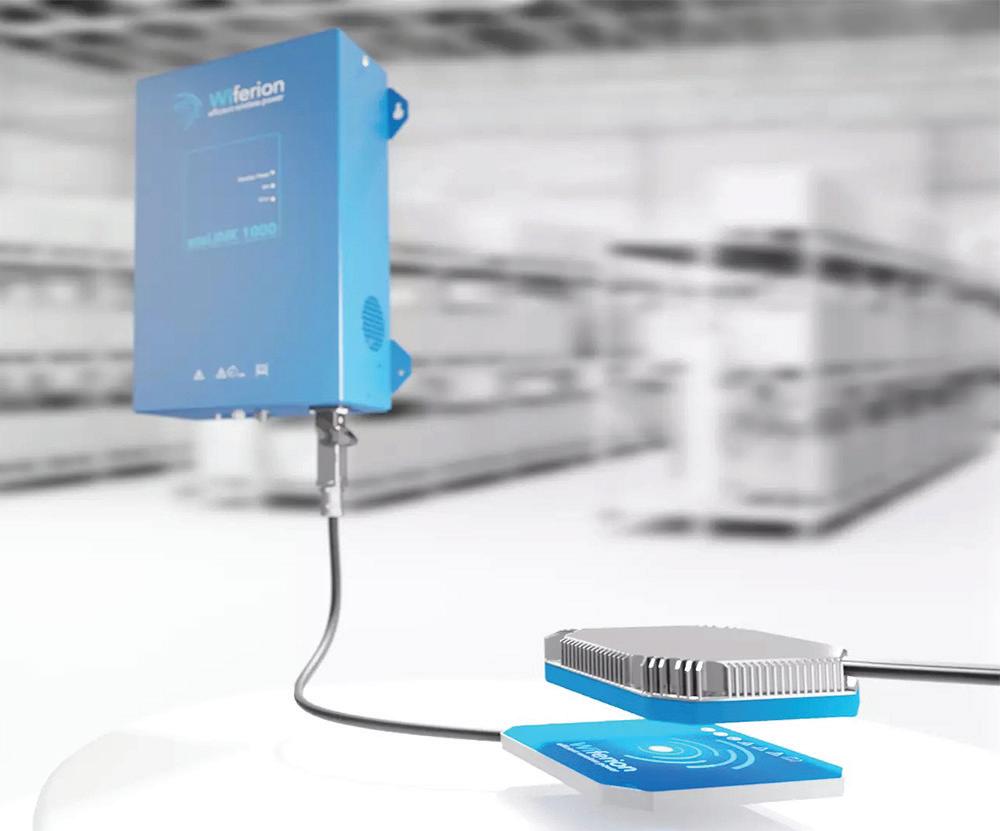
Electrek estimates that the cost of the acquisition will be between 50 and 100 million dollars.

EV drivers are up in arms about the pitiful reliability of public chargers, and CPOs are listening. ChargePoint “has announced a signi cant investment in the application of technology from the networking and information security worlds, which aims to deliver charging station reliability of nearly 100% once fully implemented.”
ChargePoint’s brand-new Network Operations Center (NOC) will implement 24/7 proactive station monitoring, and will use predictive analytics and machine learning to more rapidly detect station downtime. ChargePoint explains that constant communication between charging stations and the NOC will enable it to alert station owners in the event of a problem and to accelerate maintenance and repairs. e NOC’s machine learning and natural language processing capabilities will automatically process data feeds and social media mentions to pinpoint individual charging stations with issues. For ChargePoint Assure Pro customers, 24-hour response will be o ered.
e company will also introduce a comprehensive training program to certify electrical contractors that install EV charging infrastructure. is is expected to go live early in 2024.
“Uptime” is the gure commonly used to quantify the reliability of technology, but the EV charging industry has not yet adopted any standard measurement for uptime (standards body SAE is working on this issue). ChargePoint says it measures station uptime as “the portion of time each individual charging port is working, as a driver pulling in for a charge would expect, not averaged across a bank of charging stations at a single address.” e company claims to be currently delivering 96% uptime across its entire public network in North America and Europe, and 98% for ChargePoint Assure customers.
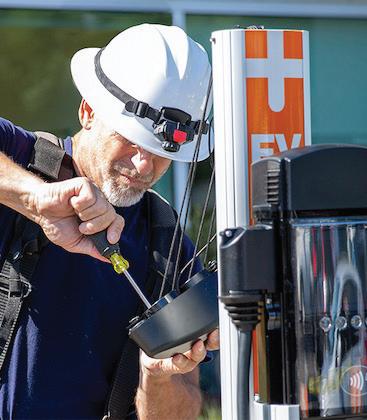

In much of the US, public EV chargers will soon be required to display the amount of electricity dispensed and the amount charged. is mirrors regulations that have long applied to gas pumps, and is intended to assure drivers that they’re being accurately charged for the electricity they buy.
ese regulations are already in force in California, and they will apply in most other states on January 1, 2025.
e new regulations are detailed in the National Institute of Standards and Technology Handbook 44 (HB 44). EVSE manufacturers can submit their products to two separate laboratory testing programs, the National Type Evaluation Program (NTEP) and the California Type Evaluation Program (CTEP), to certify that they meet the requirements of HB 44.
ABB e-mobility, which has long been an early mover in the EVSE space, has now announced that it has earned both NTEP and CTEP certi cations for its DC fast chargers. ese certi cations mean that the chargers have been witness-tested in approved laboratory conditions for compliance with HB 44, which requires paid public chargers to show the amount of electricity dispensed, the unit price, and the total price.
ese certi cations cover ABB’s Terra 124 and Terra 184 chargers, which are designed for public charging operations for light-duty EVs in the US. e Terra 184 also complies with NEVI standards, which require 97% uptime.
ABB has also obtained CTEP certi cation for the Terra AC Wallbox in its 40 A and 80 A con gurations, which are designed for commercial and eet applications.
To help other charging industry players navigate the alphabet soup, ABB e-mobility has published A guide to US metering requirements. is handy guide, part of ABB e-mobility’s NEVI Toolkit, clari es which chargers are subject to the new requirements and which are not, and explains how to comply.
Georgia-based EV charging provider EnviroSpark has announced an agreement with hotel management rm AD1 Global to install and maintain more than 50 networked charging stations at 17 AD1 Global-managed hotels across Florida, North Carolina, South Carolina, Georgia, Connecticut and Maine. e hotels operate under several brands, including Comfort Inn, Holiday Inn, Hyatt Place and Wyndham.
EnviroSpark o ers turnkey EV charging installation, operation and maintenance services. e company has built national networks for Tesla, Volkswagen and Volta, and currently has over 5,800 installations and 1,400 charging stations under contract.
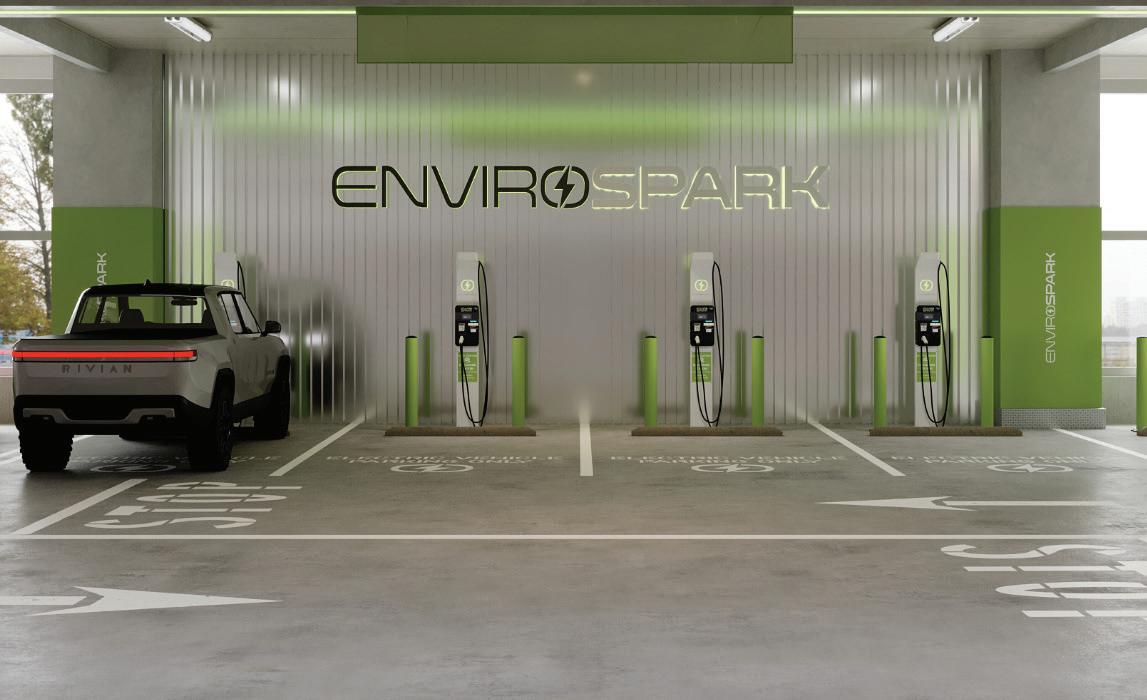
According to EnviroSpark, a recent survey of 17,000 hotels found that, while more than half of US hotels are planning carbon reduction initiatives, only 27% are building EV charging stations.
“ is partnership is a signi cant step forward in our mission to make EV ownership more convenient and accessible for drivers,” said EnviroSpark founder and CEO Aaron Luque. “By teaming up with AD1 Global, we’re catering to the evolving needs of environmentally conscious travelers who want easy charging options at hotels at all price points.”
“Our guests have asked for convenient, accessible EV charging options and EnviroSpark o ers easy solutions to help us exceed our customers’ expectations,” said AD1 Global President Daniel Berman.
New York Governor Kathy Hochul has announced a $12-million initiative to support development and demonstration of innovative solutions that advance the adoption of EVs and their integration with the electric grid, as well as novel demonstrations of medium- and heavy-duty electric and hydrogen fuel cell technologies.
e initiative is designed to help meet the state’s goals of transitioning to zero-emission vehicles by 2035, achieving a zero-emission electricity sector by 2040 and reducing emissions 85% by 2050.
e program is administered by the New York State Energy Research and Development Authority. It is designed to advance EV charging infrastructure and reduce grid integration costs; make consumer and commercial eet EV ownership more a ordable; promote research and innovation that supports deployment of EVs as assets that can be combined with bidirectional charging, energy storage and on-site energy generation; and demonstrate fuel cell or battery electri cation of medium- and heavy-duty vehicles.
Under the initiative, the state will grant awards of up to $3 million each for product development and demonstrations of technologies and business models that help reduce energy-demand peaks and that help lower the cost of necessary grid infrastructure upgrades through managed charging/discharging.
“ is funding will allow us to explore how emerging technologies like hydrogen fuel cells can be used to reduce our carbon footprint and expand our state’s electric vehicle charging infrastructure,” said New York state Assemblymember Didi Barrett.

e 1,000th charging stall was opened in the Chicago suburb of Woodbridge recently as part of an ongoing collaboration between US charging network EVgo and General Motors.
e partnership began in 2020 and was expanded in 2021. Its goal is to install 3,250 fast-charging stalls in major metro markets. Installations to date, says EVgo, cover 39 markets in 27 states and include 230 locations, the majority of which o er 350 kW fast charging.
“ e availability of fast charging infrastructure is key to widespread EV adoption and consumer con dence in all-electric transportation,” said EVgo CEO Cathy Zoi.
EVgo is one of GM’s preferred operators within its Ultium Charge 360 initiative to expand charging access, improve reliability and enhance customer experience.
In 2022, for example, the two companies helped launch the Plug and Charge feature that allows drivers to start a charging session by simply plugging in, with no need for apps or cards.
US commercial EV service provider Zeem Solutions has announced a partnership with Hertz to provide charging services for Hertz’s EV rental eet at Los Angeles International Airport (LAX).
Located less than a mile from the airport, Zeem’s depot o ers on-site charging, parking, security, scheduled maintenance and cleaning for eets of electric cars, vans, buses and trucks (Classes 1 through 8). When its infrastructure expansion is completed this year, says Zeem, the depot will provide 82 DC charging ports with a total 10 MW of grid power.
e company also has plans to collaborate with infrastructure investor ArcLight to develop charging depots at ArcLight power generation sites, including the ports of Long Beach and Newark.
Amsterdam-based EVSE company EVBox has launched the Troniq High Power, its rst stand-alone 400 kW charging station to be eld-proven. e company expects to begin ful lling orders in September 2023 in key European markets and aims to produce up to 2,000 units this year.
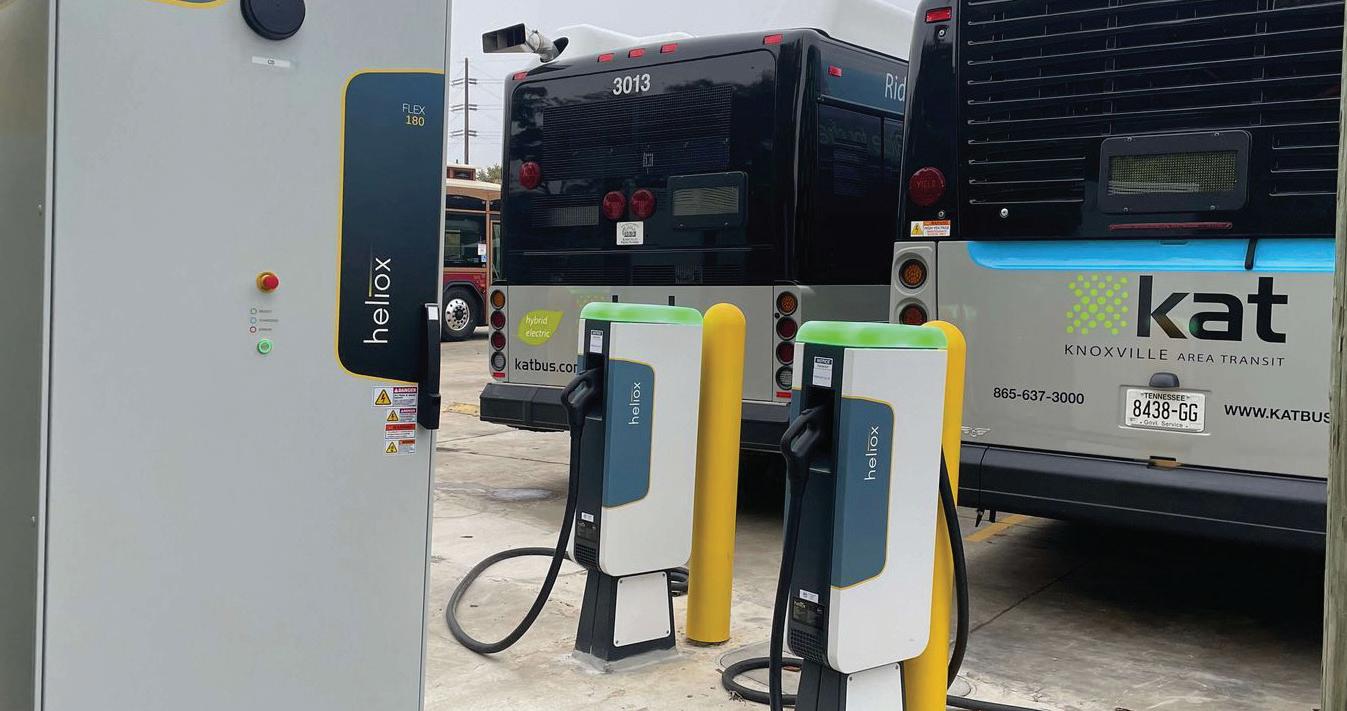
e charger is available with 320 kW, 360 kW or 400 kW power output options. It underwent a testing period of ve months at two locations near Amsterdam and Toulouse, logging more than 4,000 successful charging sessions and over 1,700 hours of active charging. e testing involved delivering more than 91 MWh of energy to EVs of di erent types under a variety of weather conditions and use cases.
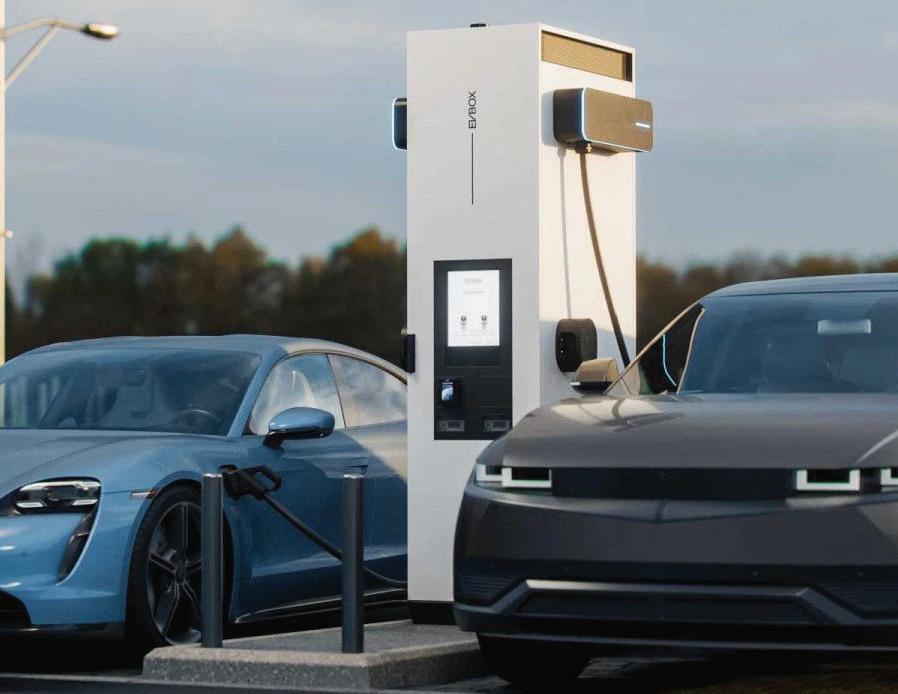
EVBox CEO Remco Samuels said, “As the majority of early adopters already drive an EV, we need to make charging faster and more widespread than ever to convince the next segment of drivers to switch to electric. High-power charging and the launch of EVBox Troniq High Power is a huge stepping stone on the path to electric mobility becoming the new normal.”
Electrical giant Siemens has signed an agreement to acquire Heliox, a specialist in eet-oriented fast charging solutions.
Heliox is headquartered in the Netherlands, and employs around 330 people. e company makes a number of innovative charging products, including mobile DC fast chargers and bidirectional V2X-capable chargers.

Siemens eMobility is part of Siemens Smart Infrastructure. It o ers IoT-enabled hardware, so ware and services for AC and DC charging from 11 to 300 kW for a broad range of applications.
Siemens says this acquisition will complement its existing eMobility charging portfolio, adding products and solutions for DC fast charging focused on electric bus and truck eets. Heliox’s portfolio will also extend Siemens’s market reach, primarily in Europe and North America.
“ is is an important milestone that adds value to our fast-growing eMobility charging business,” said Matthias Rebellius, Siemens board member and CEO of Smart Infrastructure. “In addition to expanding our o ering, we see digitalization and so ware potential with regard to energy and depot management and services.”

GM says it will o er vehicle-to-home (V2H) bidirectional charging technology across its portfolio of Ultium-based EVs by model year 2026. e rst V2Hequipped vehicles will be the 2024 models of the Chevrolet Silverado EV RST, GMC Sierra EV Denali Edition 1, Chevrolet Blazer EV, Chevrolet Equinox EV, Cadillac LYRIQ and the upcoming Cadillac Escalade IQ.
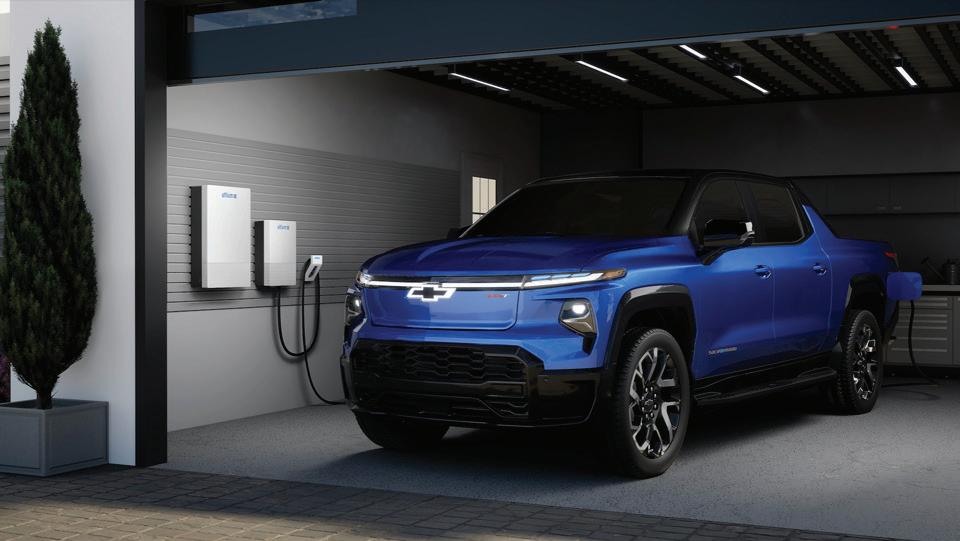
Customers will be able to use V2H technology with compatible GM EVs through GM Energy’s available Ultium Home o erings and the GM Energy Cloud so ware platform. GM’s V2H features will enable EV drivers to store and transfer energy to help o set electricity needs during peak demand periods, and to mitigate the impact of power outages.

“GM Energy’s growing ecosystem of energy management solutions will help accelerate GM’s vision of an all-electric future by further expanding access to even more bene ts that EVs can o er,” said Wade She er, VP, GM Energy. “By integrating V2H across our entire Ultium-based portfolio, we are making this groundbreaking technology available to more consumers.”
Comcast Smart Solutions, a division of telecom titan Comcast, has announced a reseller agreement with NovaCHARGE, a provider of networked EV charging solutions.
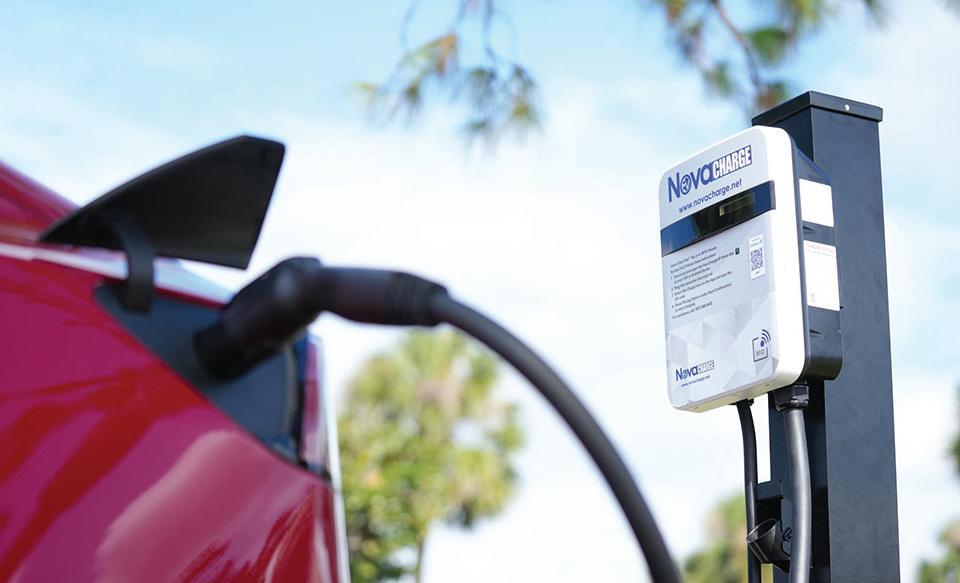
Comcast Business and X nity Communities customers, including local governments, multifamily properties and businesses, can now add NovaCHARGE’s utility-grade EV charging stations to their properties, including access to ChargeUP, the company’s charging platform management system, and NovaBOT proactive monitoring and analysis.
NovaCHARGE’s open standards-based EV charging solution portfolio includes hardware, so ware, networking, optional turnkey installation, maintenance and customer support.
“We are excited to collaborate with NovaCHARGE to enhance the accessibility of high-powered EV charging solutions across the country,” said Mike Slovin, VP and Manager of Comcast Smart Solutions. “ is collaboration strengthens our solutions portfolio and caters to the speci c need for secure, exible and scalable solutions for our customers.”
“As carmakers continue to expand the availability and a ordability of electric vehicles, the lack of adequate and reliable charging infrastructure remains a signi cant hurdle to widespread adoption,” said Oscar Rodriguez, Chairman and CEO, NovaCHARGE. “ rough our collaboration with Comcast Smart Solutions, we are furthering our commitment to address this crucial need by o ering highly customizable solutions that put customer needs rst.”

TeraWatt Infrastructure recently hosted a groundbreaking event for a new charging site for light-duty EV eets in Inglewood, California. e site will feature 26 DC fast chargers, along with amenities for drivers. It’s slated to be operational in early 2024.
e charging hub bene ted from a $1.9-million California Energy Commission grant in support of ride-hail electri cation. Its location near Los Angeles International Airport seems likely to ensure a steady stream of business from ride-share drivers and other commercial users.
As California gradually phases out legacy ICE vehicles, charging hubs for commercial EVs will be an essential part of the ecosystem, but most eet operators aren’t in a position to build out the necessary infrastructure themselves. As CEO Neha Palmer explained to Charged in a 2021 feature article, TeraWatt has the real estate, the utility connections and the charging expertise to o er a turnkey solution for charging infrastructure and services, enabling eets to make a seamless transition to EVs. (WattEV, which focuses more on medium- and heavy-duty EV eets, recently opened a similar charging hub at the Port of Long Beach, and has secured funding for two more.)
“Our goal is to provide a seamless charging solution with both infrastructure and services so that eets can more rapidly accelerate their electri cation e orts,” said CEO and co-founder Neha Palmer. “ e move to EVs is happening now, not just for consumers, but for eets.
e Inglewood charging site is the rst of many infrastructure build-outs that will enable businesses to holistically adopt a sustainable transportation strategy.”

ADS-TEC Energy, a manufacturer of battery storage-based platform solutions, has partnered with charging solutions provider eliso to install ChargeBox and ChargePost DC fast charging systems in the public car parks of specialist electrical stores in Germany.

ADS-TEC Energy’s battery-bu ered fast charging solutions can temporarily store electricity from a local photovoltaic system in order to provide charging at power levels up to 320 kW, even at locations with power-limited grid connections.
ADS-TEC’s latest model, ChargePost, combines two battery-bu ered charging columns, complete with charging electronics and battery storage, and o ers up to 300 kW of DC power. Two optional 75-inch monitors can be used as advertising surfaces.
ADS-TEC’s ChargeBox incorporates a battery unit and all charging technology into a cube with a footprint of only 1.6 square meters, and can serve multiple charging points (dispensers) that can be exibly positioned within a radius of 100 meters, indoors or out. e ChargeBox charges continuously from the available grid, and can provide charging power up to 320 kW at one charging point, or 160 kW at each of two parallel chargers.
“Our storage-based platform solutions are simple and quick to install, without additional grid expansion,” said omas Speidel, CEO, ADS-TEC Energy. “ ey o er outstanding charging performance, allowing EVs to charge up to a range of more than 100 kilometers in just a few minutes.”
A flurry of news over less than a year has permanently altered the US landscape for EV charging. Now comes the hard work of making it all happen.
The last year has seen more change in the EV charging landscape than at any time since the VW Group agreed in June 2016 to pay $2 billion to set up a nationwide fast charging network in the US to settle its Dieselgate scandal. In November 2022, Tesla released speci cations for what it dubbed the North American Charging Standard (NACS), essentially o ering it to the EV industry at large. Tesla fans hailed the move as another stroke of genius by the company that proved to the world that long-range EVs could be viable, attractive and pro table. e rest of the world likely paid little attention.
Now, within only three months:

• Ford said on May 25 that it had agreed with Tesla that Ford EV drivers would gain access to the Supercharger network, while it would t the Tesla connector to its future EVs;
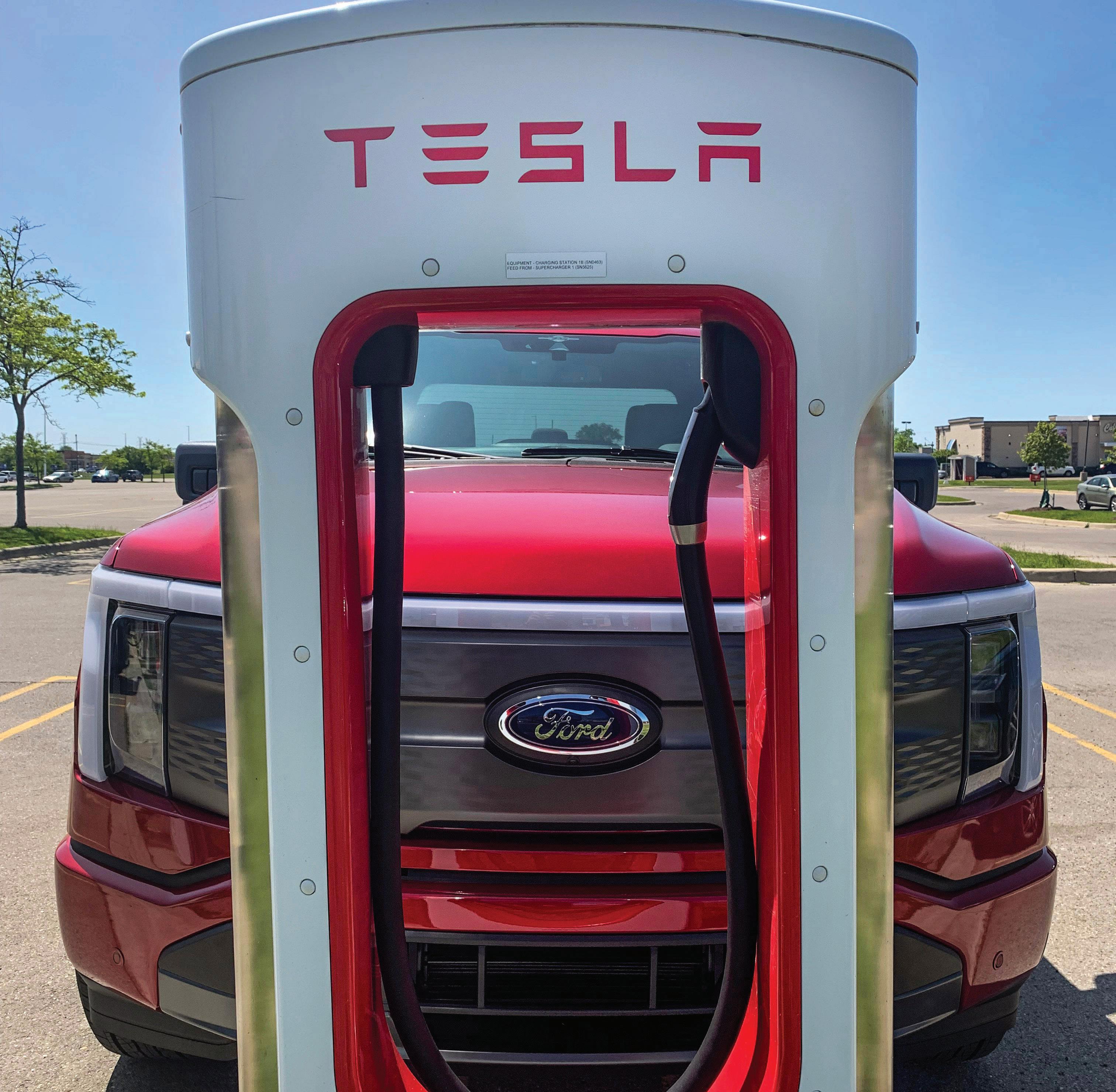
• Two weeks later, GM announced essentially the same deal with Tesla;
• A deluge of support for adoption of the Tesla connector followed. As of its latest update in August, EV Adoption’s Tesla NACS Charger Adoption Tracker page showed 53 companies planning to use the connector;
• On July 26, seven automakers announced they would form a joint venture to set up a new DC fast charging network, with more than 30,000 stations, including amenities to make recharging stops a more pleasant experience. No further details are known as yet.
To put these startling developments in context, Charged interviewed more than a dozen executives, engineers and analysts from automakers, DC fast charging network operators, charging hardware rms and other businesses.
Every person we spoke with wanted to talk—to vent, even—and to share conversations they’d had and anecdotes they’d heard from others in the business.
However, virtually no one was willing to go on the record, re ecting the sensitivity of ongoing negotiations, the technical challenges of a new charging connector and the complicated web of relations among the many parties within the EV charging ecosystem. Only Ford provided written responses to (a few of) our questions.
Overall, this year’s developments re ect deep dissatisfaction among automakers other than Tesla with the state of US fast charging—accompanied by fear that Tesla’s ultrareliable and deeply integrated Supercharger network has given it a permanent competitive advantage.
It’s hard to overstate the disgust and anger at Electrify America among virtually every person we interviewed. e network has come to be viewed, fairly or not, as the most minimal e ort VW Group could have exerted to comply with the 10-year, $2-billion settlement it jointly negotiated with the EPA and the California Air Resources Board (CARB).
Five years a er its rst fast charging station went live in May 2018, Electrify America continues to have sites down for weeks or months and other locations where only one or two cables (out of four, six or eight) actually deliver a charge. While a majority of its stations will recharge an EV, the widely touted standard uptime gure of 97 percent still translates to 11 days a year of downtime for every location. Would you have con dence in your local gas station if you knew it might be dark almost two weeks a year—at random?
EA has steadfastly refused to discuss its reliability statistics, o ering years of bland reassurances that things are improving. It will not release details on its investigations into cases where its charging stations apparently delivered enough excess power to trip the high-voltage fuses in three di erent EVs in three di erent states. But it is likely a major contributor to EV charging problems quanti ed in recent studies by J.D. Power and the University of California, Berkeley.
Tesla aside, all networks are perceived to focus more on getting new stations in the ground—and associated photo ops with local politicians—than funding operations and maintenance. Kameale C. Terry, the CEO of ChargerHelp, which repairs charging stations, tweeted in December
2021, “I recently spoke to a program manager for EV charging at a major utility and he said, ‘I have $18 million to build new EV chargers, and $0 to x the broken ones previously deployed.’”
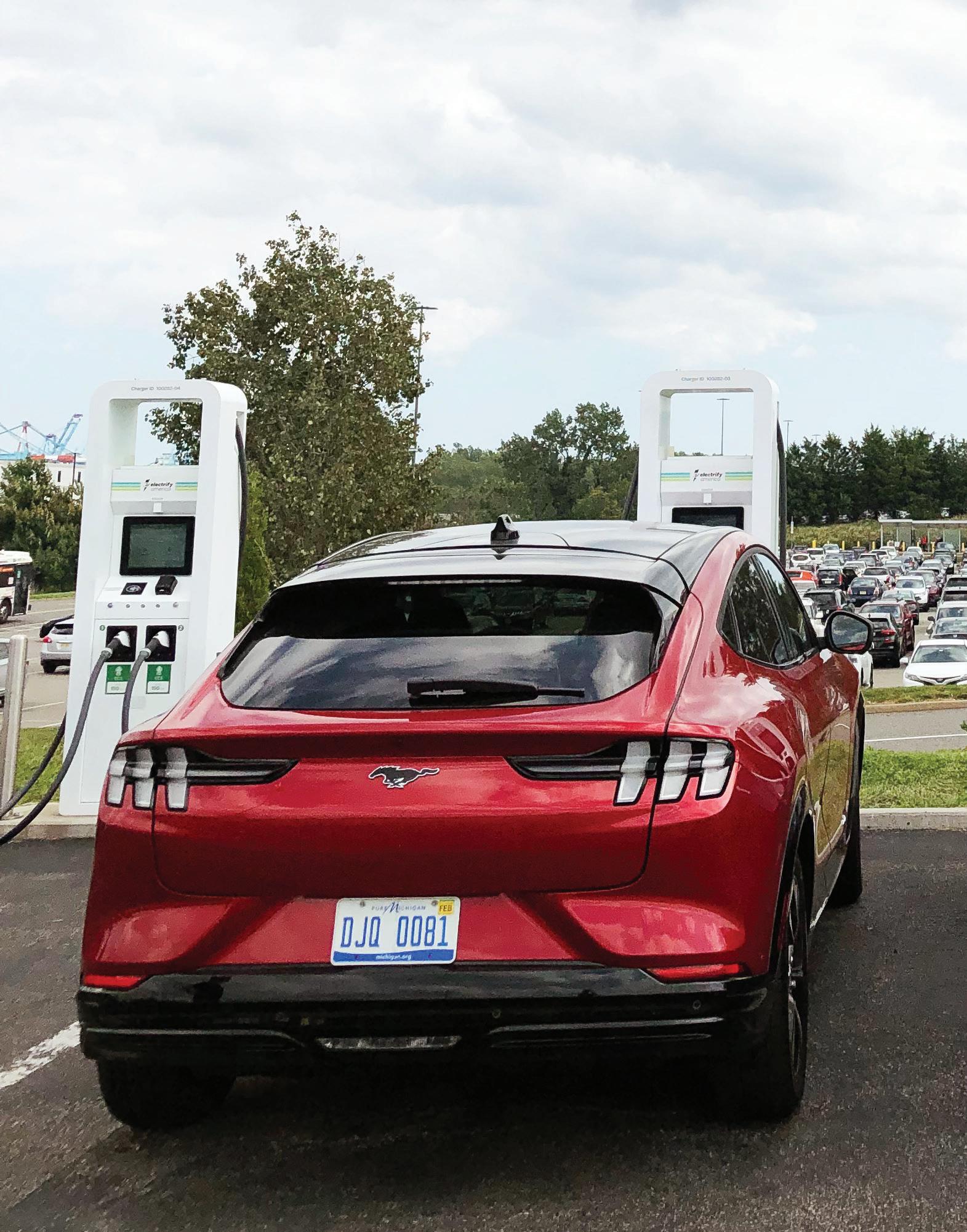
While EVgo, Shell Recharge (née Greenlots), ChargePoint and others were included in reliability complaints, those networks are seen—rightly or wrongly—as less unreliable than EA. “EA is by far the most di cult network for
Non-Tesla automakers have had it with Electrify America. Initial hopes that EA would provide a new, large-scale, nationwide network of fast charging stations have now curdled into a desire to see EA out of the game altogether—with “lots of bad blood” directed at the VW Group as a whole.
us to work with,” said one automaker employee. “It’s just not clear they believe in it, or that they’re in it for the long haul.”

In other words, non-Tesla automakers have had it with EA. Initial hopes that EA would provide a new, large-scale, nationwide network of fast charging stations have now curdled into a desire to see EA out of the game altogether—with “lots of bad blood” directed at the VW Group as a whole. One engineer and one executive even suggested that Volkswagen deliberately did a subpar job. “Remember Dieselgate?” said one. “Fool me once, shame on you. Fool me twice…”
In some ways, Ford has been the most aggressive automaker in working toward a good charging experience for its EV buyers. It included Plug and Charge in its Mustang Mach-E from its late 2020 launch, replicating the Tesla “plug in the car and walk away” experience long before
other mass-market brands did the same. And it claims to have tracked every failed charging attempt via telematics and worked to understand what went wrong. Electrify America was by far the most common thread among all failed charges by Mach-E drivers, according to a source.
Ford analyzed the networks, sites and even charging hardware in those failed attempts, and put pressure on the networks involved. It also launched a group of “Charge Angels,” who traveled among charging sites, testing the reliability and condition of chargers and reporting back.
None of that seems to have been enough. However, there was still widespread shock when Ford announced that its EV drivers would gain access to the Tesla Supercharger network from Spring 2024. Initially, they will connect via

Electrify America was by far the most common thread among all failed charges by Mach-E drivers, according to a source.
There was still widespread shock when Ford announced that its EV drivers would gain access to the Tesla Supercharger network from Spring 2024.Image courtesy of Ford
adapter cables; ultimately, Ford will build the Tesla receptacle into its future EV models. Tesla will supply both NACS-to-CCS and CCS-to-NACS adapters, Ford told Charged, though prices haven’t been released.




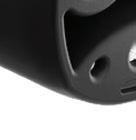


Note: Tesla calls its proprietary connector and protocols the “North American Charging Standard,” or NACS. It is not (yet) a technical standard, as are the connector and protocols for SAE J-1772 for AC charging and the Combined Charging Standard (CCS) used (in two variants) in North America and Europe. In November, Tesla said it is “actively working with relevant standards bodies to codify Tesla’s charging connector as a public standard.” For convenience, the term NACS may be used in this article to refer to the Tesla charging system.


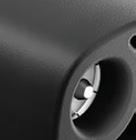
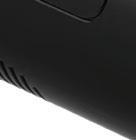
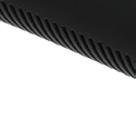


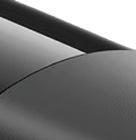
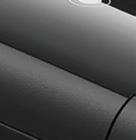

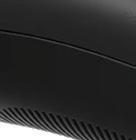
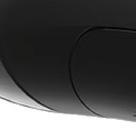
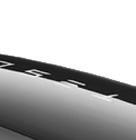
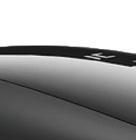






One aspect of the news that has own below the radar is that NACS is a pair of connectors and receptacles, including a new generation capable of higher power. e other is today’s connector, rated to 500 volts, tted to all Teslas except the Roadster. Most importantly, the new connector supports continuous currents of 900 amps at voltages up to 1000 volts. is is crucial for the growing number of makers whose EV batteries can charge at 800 volts at rates up to 350 kilowatts, since the current generation of Superchargers maxes out at about 250 kW.
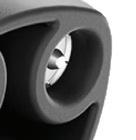
Tesla began tting the European versions of the CCS connector and protocols to Model 3s and Model Ys it sells in those countries in early 2019 and it supplied a CCSto-Tesla adapter at the same time. It thus has experience using CCS protocols to control charging in its European models—and can charge CCS vehicles on its version 3 Supercharger stations via its Magic Dock adapter. Tesla vehicles built before late 2021 controlled charging over the pilot pin, and require a replacement charge-port ECU that uses Power Line Control to charge on CCS stations using a CCS-to-Tesla adapter. (It costs $615, including the CCSto-Tesla adapter.) ose stations are the only ones at which non-Tesla vehicles can charge via the company’s Magic Dock CCS adapter (on the dozen or so stations where it has been tted).
In other words, Tesla is already familiar with charging via CCS protocols—via a di erent connector. (Tesla no longer o ers a way for reporters to contact the company for comments, so we were not able to speak with Tesla representatives while reporting this article.)




























A peculiar aspect of Tesla’s deals with Ford and GM is the assumption by many EV drivers that tting a Tesla connector to a non-Tesla EV and providing access to the Supercharger network will automatically result in a charging experience that is as seamless, reliable and fast as Tesla’s. at has yet to be proven.
Indeed, engineers and more technically literate executives we spoke to were uniformly cagey when asked whether they expected their vehicles to charge as fast at Superchargers as they did at CCS stations. e question is most acute for 800-volt pioneer Porsche, but it also applies to increasing numbers of EVs from GM, Hyundai, Kia and Lucid, with more to come.
It’s too early to o er a de nitive answer to that question. Auto engineers at multiple makers are now dissecting the Tesla documents, guring out how it functions, and negotiating what information they must provide to the Tesla charging station to validate a session. “Eventually, validation will be via ISO 15118 and Plug and Charge, but [it’s unclear] when that will come to pass,” said a source,

One aspect of the news that has fl own below the radar is that NACS is a pair of connectors and receptacles, including a new generation capable of higher power.
The lead vehicle engineer on one highly publicized future EV from a large maker said, “The [Tesla alliance] caught us off guard and we still don’t know exactly what was in the agreement they signed.”
summarizing statements by a Tesla representative within the SAE J3400 working group attempting to make Tesla’s connector into a technical standard.

Today, to use the Magic Dock adapter at those few Supercharger sites where it’s o ered, drivers of non-Tesla EVs must download the Tesla app, which requires them to provide Tesla with personal identi cation information and a credit card number. No automaker will want to hand that info to a competitor, so validation of charging sessions at Tesla sites remains an open issue.
It’s clear that the decision to ally with Tesla was one made at CEO level, then foisted on the engineers who must integrate it into future EVs within a 3-year deadline. Indeed, three days a er the press release, the lead vehicle engineer on one highly publicized future EV from a large maker said, “ e announcement caught us o guard and we still don’t know exactly what was in the agreement they signed.” Tesla is said to have a document with roughly 40 non-negotiable technology requirements—or what the engineers would have to do to incorporate NACS into their largely complete vehicle design.
e adapter problem

e wild card in this scenario is all those adapters. Carmakers will undoubtedly test, validate and warrant the various adapters they provide. But any adapter adds resistance between the charging station and the vehicle. Whether they can retain the same charging rates, while maintaining their required margins of safety, remains an open question. “ at would be our goal,” one automaker exec said cautiously. “We’re working to ensure minimal impact to the charging experience with adapters.”
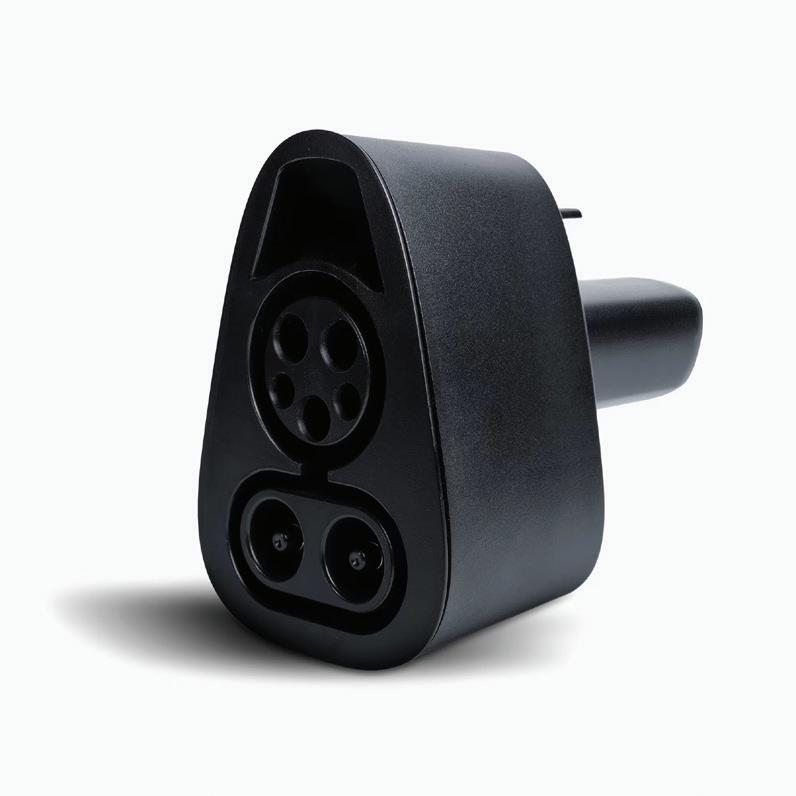
Can carmakers educate their buyers appropriately, given the generally dismal understanding of EV charging among
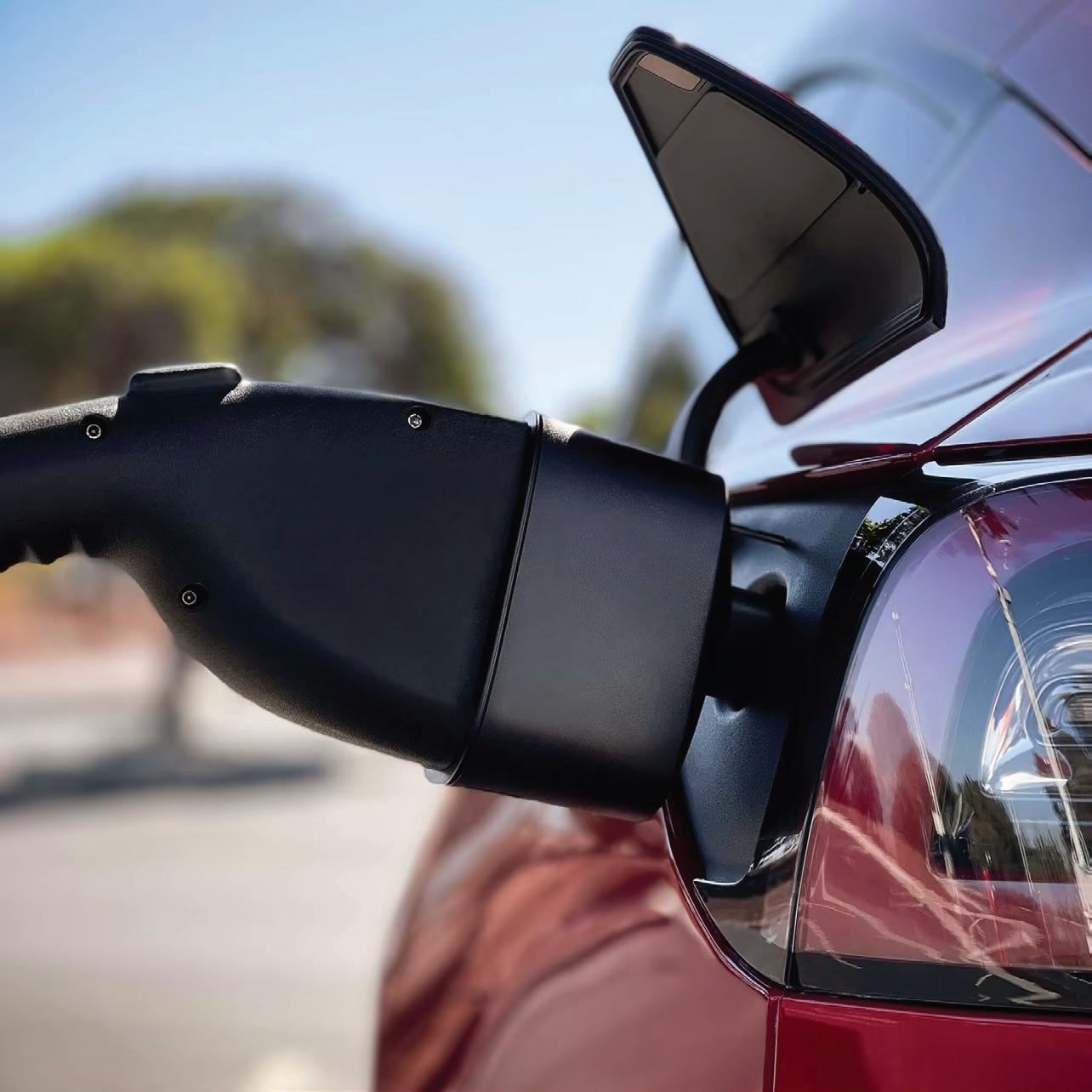
The Tesla system “is not unsafe,” said one engineer, choosing their words carefully, “but there’s no margin for error.” It’s easy when you only have four vehicles to charge, said a battery expert. Ensuring proper safety margins is now up to each automaker adopting the NACS system.Charging adapters currently made by Tesla. More are coming. Images courtesy of Tesla
auto salespeople and EV novices? “We hope to deliver the right level of education” on those topics, said the exec— again cautiously.
Teslas have been optimized to charge at Supercharger stations, but until now, EVs from other makers haven’t. A couple of charging engineers also expressed concerns over what they termed Tesla’s slim safety margins vis-à-vis overcharging and high temperatures within the charging circuit. e Tesla system “is not unsafe,” said one engineer, choosing their words carefully, “but there’s no margin for error.” It’s easy when you only have four vehicles to charge, said a battery expert, if you’ve designed both the hardware and so ware for both the charging station and the vehicle. Ensuring proper safety margins is now up to each automaker adopting the NACS system, and they may not land in the same place as Tesla.
US automakers seem uniformly con dent that providing (or selling) adapters to buyers of their future NACSequipped EVs will solve the problems. EV advocates are less sure, noting that three adapters will be needed during the transition. First will come Tesla-to-CCS, for today’s CCS-equipped EVs to charge at Supercharger sites. en, separate CCS-to-NACS and J1772-to-NACS adapters—for DC fast charging and Level 2 charging respectively—for NACS-equipped EVs to use the tens of thousands of public charging sites currently equipped with those connectors.
Sure, major charging networks will add NACS connectors over time. But ve or ten years from now, the US may continue to have two separate connectors on the EVs sold here. Why? Some non-US makers within the Group of Seven are wedded to the CCS standard for fast charging, since their home markets use CCS2 (Europe) or the North American CCS1 (South Korea). NACS does not currently handle 3-phase power, used in some other markets. “Predictions by Tesla fans of the death of CCS,” said one EV executive wryly, “may prove to have been slightly premature.”
While GM has publicly stated that its future EVs will have only the NACS connector, Ford consistently declines to answer that question directly, repeating only, “Ford is transitioning to NACS starting in 2025. As we transition, our eet will include a mix of port con gurations.” at leaves Stellantis—it has announced several battery-electric
vehicles for the US, but none are in production today. EV advocates hope at least one automaker will nd it a ordable to t both CCS and NACS connectors, which would give it an irresistible marketing advantage: the ability to say, “Our EV can charge at any station in the US— without all those confusing adapters other EVs make you use.” Whether any brand is adventurous enough to do so remains in question.

A nal reason that CCS may stick around for a while is the ability to export power, variously known as vehicleto-home (V2H) or vehicle-to-load (V2L), with potential vehicle-to-grid (V2G) applications further in the future. Ford found unexpected enthusiasm for the idea of its F-150 Lightning serving as backup power for homes during outages, which caught the public’s attention despites all sorts of caveats. Kia (among others) is now promoting the same capability for its upcoming EV9 three-row electric SUV.
Tesla’s NACS connector is capable of bidirectional charging, and Tesla has said it could provide V2X capabilities, but it has shown no signs of doing so. is is likely due to Tesla’s ancillary business selling Powerwall home energy storage batteries, which gives the company solid business reasons to slow-walk V2H. Tesla may soon be forced to implement some form of V2X, however. e California legislature is considering a bill that would require all EVs sold in the state to be capable of bidirectional charging by 2027.
GM and Ford, however, will need to develop and test the ability to deliver V2H to their customers via the NACS connector—having already implemented them for the CCS connector. at will take time, and it remains to be seen if the rst non-Tesla EVs using the NACS connector can deliver the same V2H capabilities as their predecessors that use the CCS connector.
While GM has publicly stated that its future EVs will have only the NACS connector, Ford consistently declines to answer that question directly.
Group of Seven gels, nally
e group of automakers committed to forming a joint charging network have long had a model to follow: Ionity, the pan-European high-speed charging network. It was formed in 2017 by BMW, Daimler (Mercedes-Benz), Ford and the VW Group (Hyundai/Kia joined later), and its rst stations went live in Q2 2018. By all accounts, Ionity works largely as claimed, with few reliability problems.
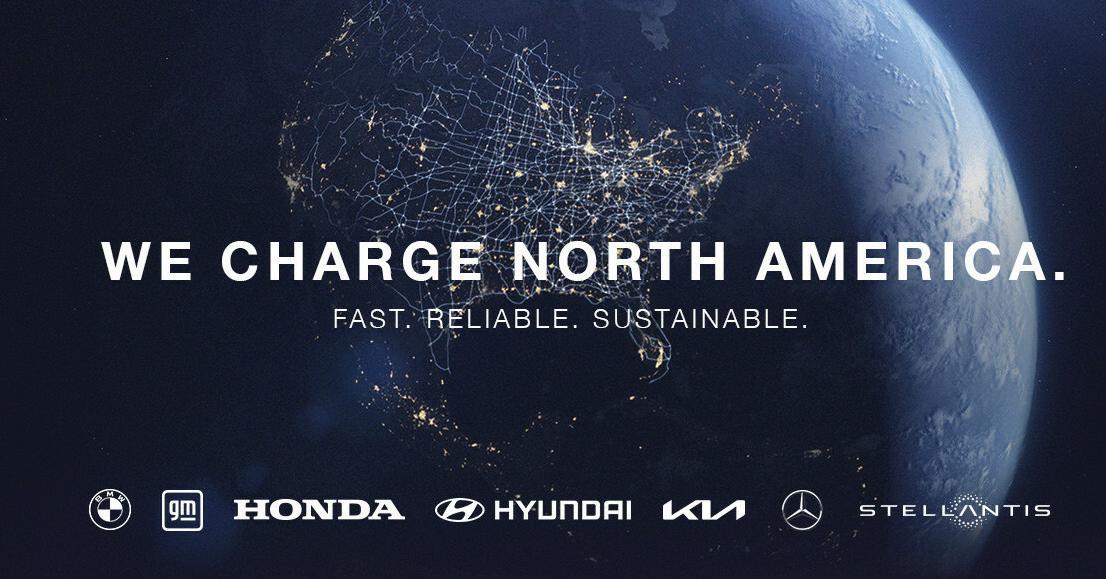
e network plans to have a total of more than 5,000 fast charging sites in 20 countries in operation by early 2025.
An earlier version of this US group almost gelled in 2021 or 2022, according to an exec we spoke with, but some members balked at the cost to each company—hundreds of millions of dollars, to start—and its likely bottom-line impact and e ect on stock prices. e German members, BMW and Mercedes-Benz, doggedly kept the plan alive. By the middle of this year, it was clear that the reliability of nationwide DC fast charging remained unacceptable. Something had to be done—and cash was available to do it. Both the National Electric Vehicle Initiative (NEVI) within the 2021 Infrastructure Bill and EV charging allocations within the 2022 In ation Reduction Act provide funds for the manufacture, purchase and/or installation of EV charging stations.
e Group of Seven has two US members, GM and Stellantis; two German makers, BMW and Mercedes; two Korean members, Hyundai and Kia; and one Japanese maker, Honda. Not all of them say they plan to adopt the Tesla connector. A er Ford’s Tesla announcement, BMW and Mercedes in particular are said to be fearful that Tesla—which has eaten meaningfully into the Germans’ birthright of fast, luxurious, expensive vehicles—would end up controlling their own EV customers’ charging technology and experience.
e two German brands also wanted a new experience
Two Japanese makers were invited to take part—they declined. Ford remains an open question. The US arms of two overseas makers wanted to join the group, but were vetoed by their headquarters. Rumor has it that Volkswagen of North America was not invited to join.
for their EV drivers, highlighted by Mercedes-Benz with its plan to create a more pleasant network of 10,000 charging sites across multiple countries and a reservation-only concept station in Berlin pioneered by Audi. (Porsche has its own as well.) Mass-market brands may decide a charging session on a rainy night at an unsheltered Electrify America site in a grimly lit Walmart parking lot meets the need for on-road charging; Mercedes-Benz and Porsche very clearly disagree.
Can this unnamed new company build a reliable network, with more driver amenities, for $1 billion, when the VW Group hasn’t done so for $2 billion? “ ey are all in, now,” said a participant—and the billion dollars is “just the tip of the iceberg.” Initial sites have already been identi ed, and the goal is to have 6 to 10 charging cables capable of 350 kW at each, sheltered from the elements, in safe, welllit locations with facilities akin to airline lounges, including bathrooms and refreshments.

Optimism that the group can pull it o stems from European makers’ experience with Ionity, in which the partners appear to play well together, plus a lack of pressure to drive toward pro tability above anything else. Most importantly, a source said, “We will set expectations clearly, for the right equipment, the right experience,” from the start. Uptime and a pleasant experience will be paramount.
Much remains to be done by the new company, or at least made public. A name may be revealed soon and perhaps a headquarters location. (A site in the greater DC area might make sense.) It’s possible that other automakers will be added to the group over time. Two Japanese makers were invited to take part—they declined, for various reasons. Ford remains an open question. e US arms of two overseas makers wanted to join the group, but were vetoed by their headquarters. Rumor has it, however, that Volkswagen of North America was not invited to join.
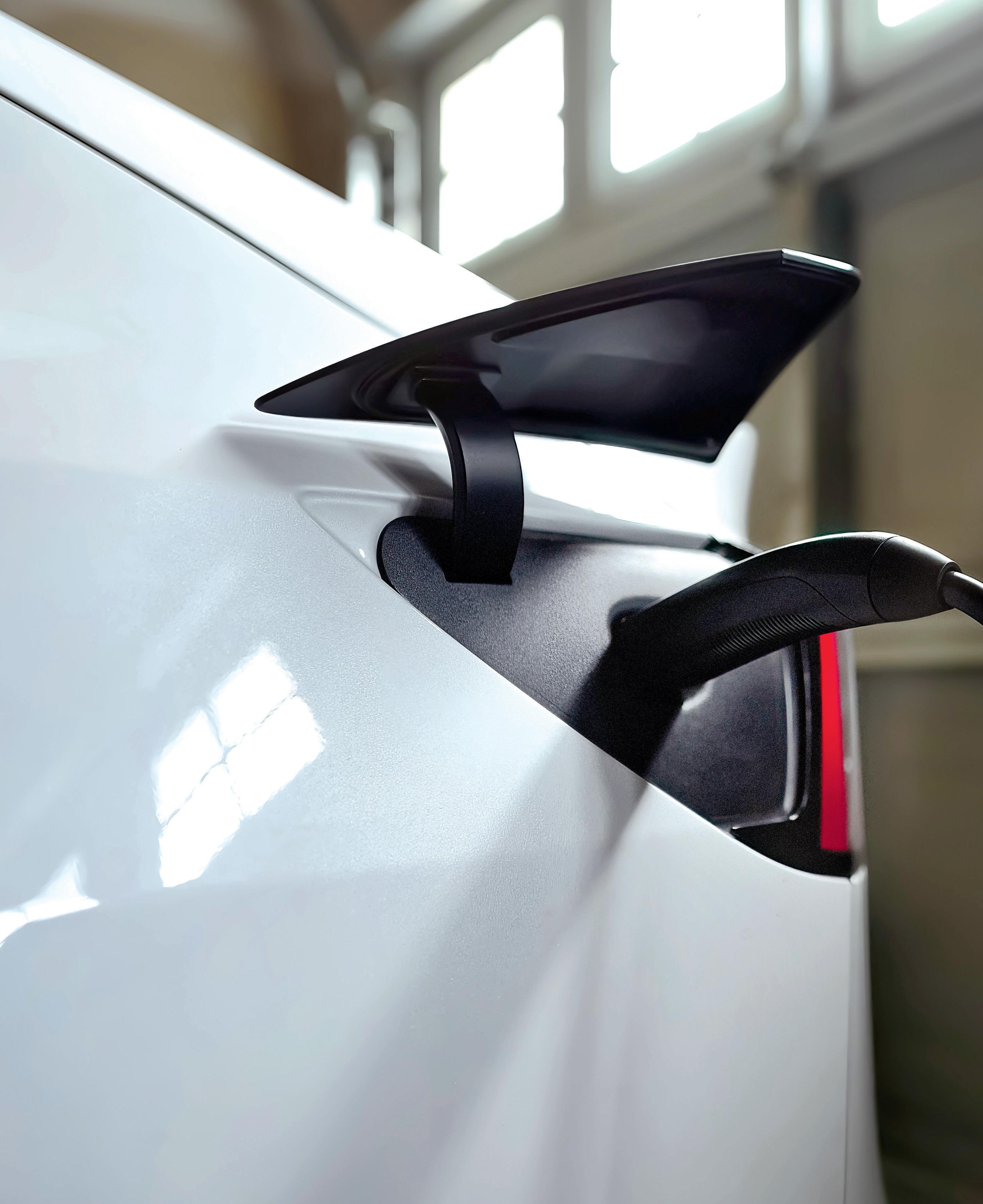




Anyone who would deploy any kind of large-scale EV charging project needs to work closely (and early) with their local electrical utility. is can be a complex undertaking, especially for companies that work in di erent regions, as there are around 1,600 utilities in the US, subject to a wide variety of di erent state and local regulators.
Many of the company execs we speak with here at Charged have stressed the importance (and the complexity) of working closely with utilities, and some of them blame utilities for being hidebound, slow-moving, and/or uninterested in promoting EV adoption.

None of these descriptions apply to the Orlando Utilities Commission (OUC). Since 2010, OUC, a municipally-owned public utility, has installed hundreds of public charging stations, some powered by solar arrays. e agency also recently presented a series of webinars on electri cation for eet operators.

Peter Westlake is OUC’s Manager of New




Products and Services. He also serves on the Board of Drive Electric Florida, and chairs the Florida Electric Power Coordinating Group, which represents most of the utilities in the state of Florida, and leads the Group’s subcommittee for electri cation. He tells us that Florida utilities have been very engaged in electri cation of transportation since OUC led its rst electri cation roundtable back in 2018.
Mr. Westlake is in a unique position to know what the powers that be are thinking and planning when it comes to electri cation, not only in Orlando, but all over the state.
A Peter Westlake: I’m the Manager of New Products and Services. What that means is, we look for ways to either increase sales on existing products, or look for potential revenue opportunities to diversify our revenue streams. One of the biggest areas we address is the electri cation of transportation, because it’s a unique opportunity for utilities in the growth of electricity sales.
Q Charged: Can you walk us through how a utility decides to invest in EVs and charging infrastructure?
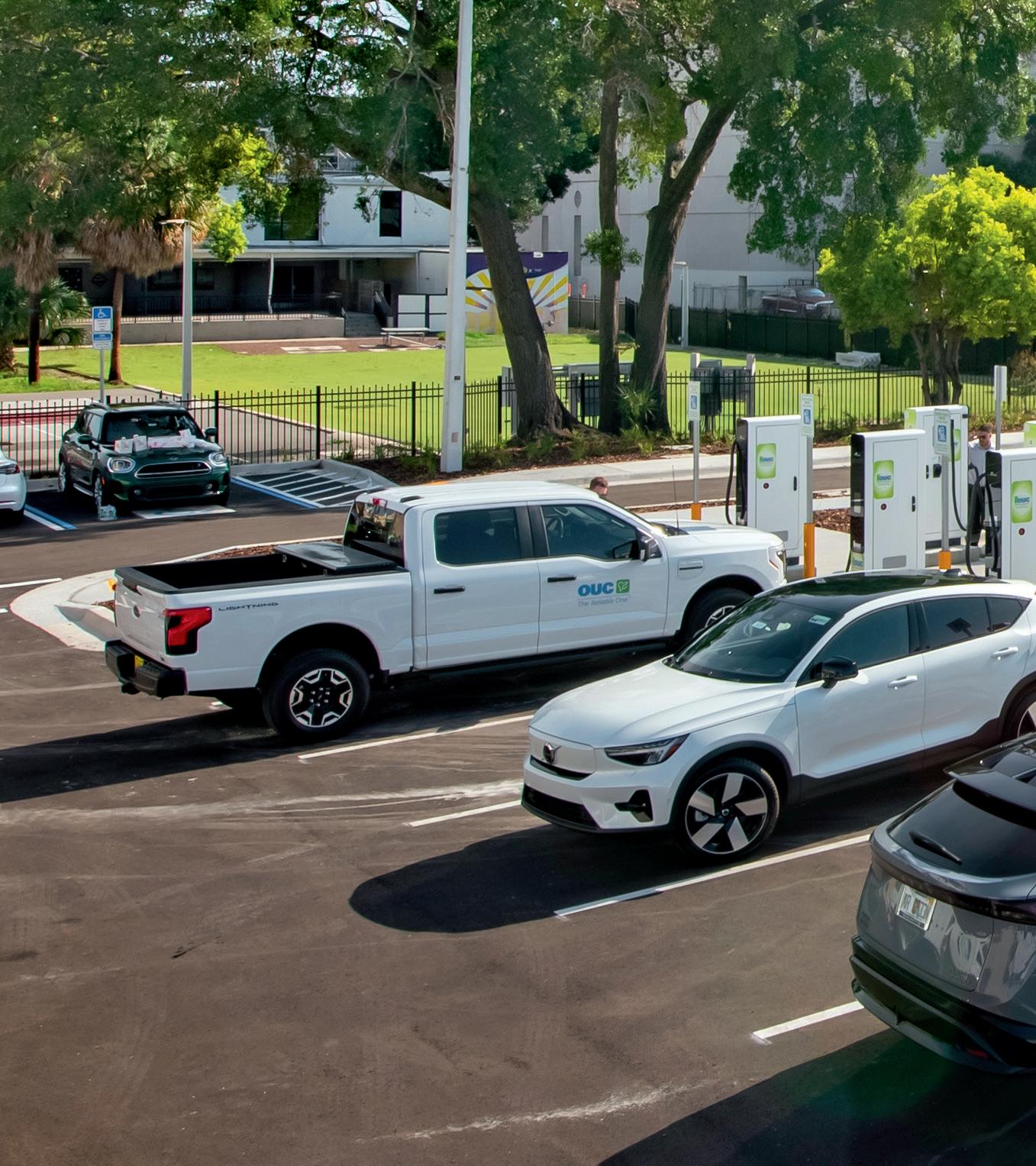
A Peter Westlake: It depends a lot on the structure of the utility. Municipally-owned public utilities and investor-owned utilities have di erent guardrails as far as what they can and can’t do. For instance, in our jurisdiction, to install electric vehicle infrastructure, we don’t have to obtain approval from the Florida Public Service Commission (PSC), whereas Duke and Florida Power & Light do.
At OUC, we see investing in EVs as an expansion of our service territory by one quarter to one third of a house, if you consider that three to four electric vehicles represent about the same type of load that an additional house might require. As a municipal utility, we’re constrained within our jurisdiction. Supporting EV charging and encouraging ownership of EVs is a unique opportunity for load growth without actually expanding our services to new customers.
To obtain approval for the installation of EV infrastructure, OUC’s nancial team must rst approve the strategy, and then we formally present it to the board. e strategy behind our presentation is that an investment in EV charging infrastructure promotes the adoption of EVs. e promotion of EVs won’t necessarily show up in OUC’s charging hub, because 80% of charging happens at home or at work, but it will show up in the service territory. So, investing on a break-even or a loss leader basis for Level 2 or 3 charging stations is a good thing, because it removes some of the range anxiety that people have, which is a barrier to adoption. Once you remove that concern, we forecast seeing an in ux in vehicles. And I’m happy to share that that forecast has held true.
To provide an example, Orlando is currently number two in the state of Florida, and Florida is number two in the United States, for EV adoption. Back in 2018, there were roughly 2,300 EVs in OUC territory. In January 2022, there were 5,000. is past January there were 10,000, and in April there were 15,000. We’re seeing the S curve. And I’d like to think that a portion of that is because of the programs we’ve put in place to encourage the growth.
Q Charged: You are not just providing electricity, you’re also operating charging stations. It seems to me that operating charging stations is a tough way to make a pro t—a pretty low-margin business.
A Peter Westlake: Well, the high-speed chargers not so much. If we look at a Tesla charging hub that’s operating in our service territory, it drives a fairly signi cant revenue opportunity. ose are operating in the black very quickly a er being installed. We took a charging hub live in July that is one of the largest universal charging hubs. It features 20 CCS DC fast charging stations and it’s located in the heart of downtown Orlando. We believe that it will at least break even, if not better, in the near future. And that’s because, as you get the load up, you start to see more revenue come in.
As a utility, I have the unique opportunity to look at the whole story behind an EV charging hub. If someone only spends $100 with me yearly to charge their vehicle at one of my high-speed chargers, I’m still probably going to see in the neighborhood of an additional $400 or $500 in home charging. So, looking at the whole picture, every EV that OUC helps to put in place represents 1,200 miles of driving. Factor at a rate of 0.33 kWh per mile, and that’s additional energy growth.
If someone only spends $100 with me yearly to charge their vehicle at one of my high-speed chargers, I’m still probably going to see in the neighborhood of an additional $400 or $500 in home charging.Image courtesy of Orlando Utilities Commission
Q Charged: So even if you lose a little bit operating the chargers, you’re winning because that encourages EV adoption overall.
A Peter Westlake: Exactly. And no matter who operates the charging stations, we’re the energy source, as long as they’re within our service territory. And honestly, I would love it if charging operators like bp pulse and Tesla come into our service territory and build out the charging hubs, because OUC doesn’t necessarily need to be in the charging business. We need to be in the energy business. But I also know that, if you look back at the history of gas, when automobiles rst started out in the early teens, they sold gas at hardware stores and grocery stores and pharmacies and things like that. It wasn’t until Texaco actually started to build gas stations that the fuel ended up in the right spot.
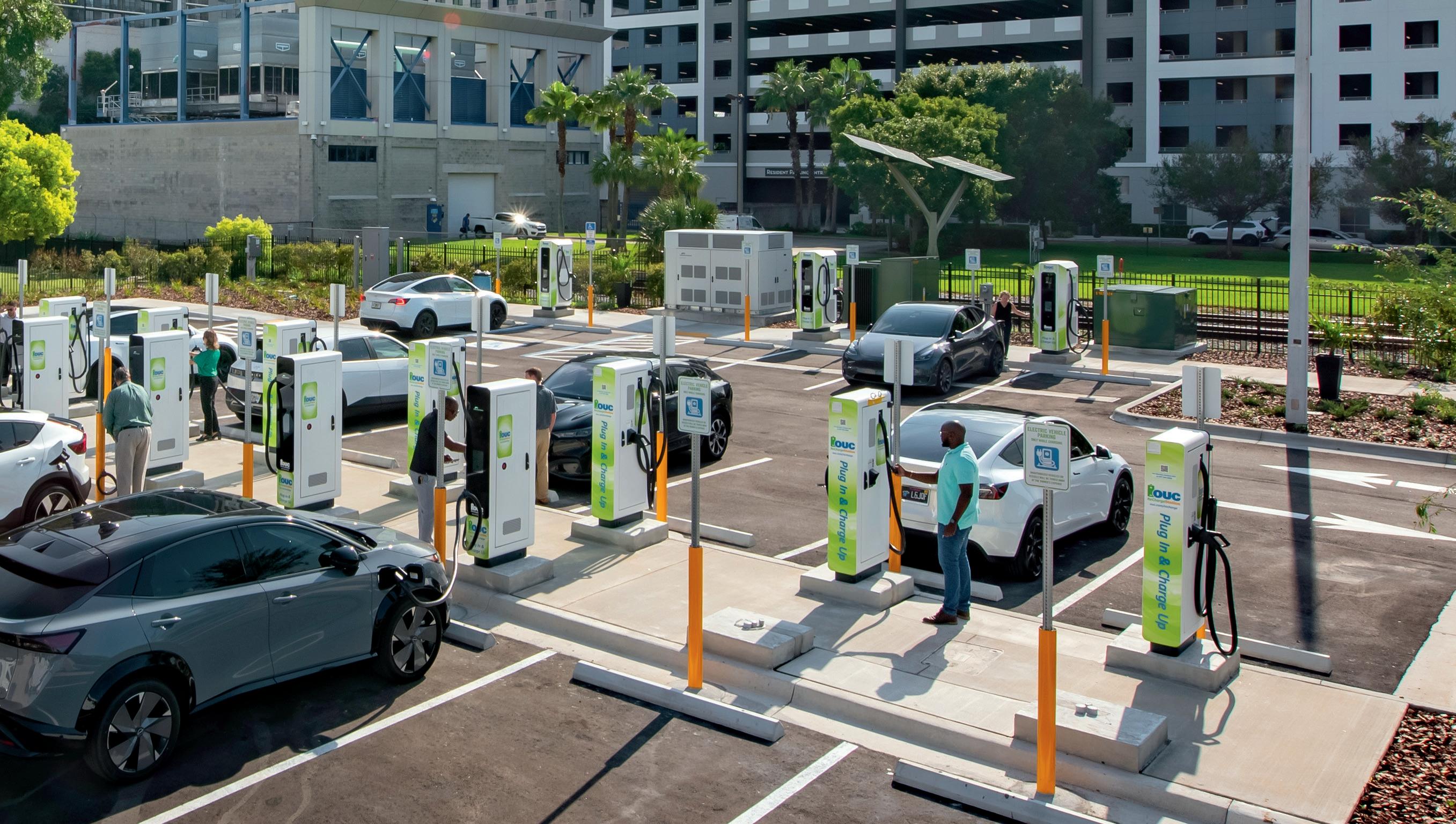
Q Charged: In California there’s been some backlash to the idea of utilities being charging operators. Some of the independent networks are afraid big utilities will freeze them out of the business. Is that an issue in Florida?
A Peter Westlake: I think it’s a perception issue. OUC doesn’t necessarily want to be an operator, so we would happily join hands with somebody who wants to operate, but we need public charging to happen, so in the absence of activity, we take over. Two, three, four years from now, OUC could sell those assets to entities who are interested in solely
operating these hubs. And that is not a negative impact to us as a utility, because we’re in the business of selling energy, not charging stations. Right now, with the exception of Tesla, there’s nobody installing enough charging stations to be able to take the load. As a result, OUC is willing to make the investment for the charging infrastructure. But when more people become vested in operating these EV hubs, I am pretty sure OUC would consider handing the reigns over to other entities, from an operational standpoint.
However, I know that there’s going to be areas in lowand moderate-income neighborhoods where it may not be pro table to put in charging stations, but it will be necessary so these communities can have the same access that everyone does. I believe we’ll see the utilities work to solve that problem.
Q Charged: I see Big Oil moving into the charging space, and having a bit of a suspicious mind, I wonder about their intentions.
A Peter Westlake: Well, I think they’ve actually seen the adoption rates for EVs. ey’ve seen what’s happening in other countries and what’s happening in the US and they recognize that their market share will fall, and they’ve invested heavily in branches like bp pulse and Shell Recharge and others. I think you’re going to see the gas station model change a little bit and have it serve two masters. And in fact, we’ve had good conversations with bp pulse and with Shell Recharge in our service territory.
Q Charged: Let’s talk about capacity. e anti-EV crowd is fond of saying that EVs are going to “crash the grid.” Is that a problem? Are you going to run out of generation capacity?
A Peter Westlake: From the macro perspective, the analysis is that if every vehicle that’s currently running on gas changes over to electric, you would have to double generation capacity on the grid, and that situation would be problematic.
However, you need to dig into the details and ask: when do they charge? ey charge at night. at’s our natural valley when we’re not getting an awful lot of power consumption demand. So it becomes a long time before it starts to tax the grid. Will it be a problem? Most likely there will be situations that we need to address when the tipping point happens. e tipping point is probably at 50%, and we’re still far away from 50% saturation. 80% of charging or more happens at either home or workplace, and if everybody’s charging at home overnight, I don’t see this as being a problem.
We’ve got two EVs in our family. My wife drives a Tesla and I drive a LEAF. We both get our charging at home on Level 1. We didn’t even install a Level 2 charger, because we get enough capacity through Level 1 to replenish what we need for the next day.
Q Charged: Have you got any vehicle-to-grid projects going on?
A Peter Westlake: OUC is starting to think about that. Part of the reticence about getting into vehicle-to-grid was the battery warranties. You start taking the battery and going both ways with it, the manufacturers are a bit leery covering the warranty because you’re using the battery faster than you would naturally. OUC hasn’t gotten involved with it, but there are really only certain use cases, in my opinion, that it makes sense. ese are rolling batteries, so they have to be where I need them at the time I need them. Some of the better use cases are things like school buses, where you know where they’re going to be at any one given time.
e other possibility is to mitigate demand. If I’ve got 200 employees that are plugged in at my workplace, I’m going to create demand. And if you create a new peak, then you get into a di erent rate level. Corporations who sponsor workplace charging are going to want to put in managed charging to make sure that they don’t trigger demand charges.
ose same companies could also say to their employees, “Would you mind if, during the day while you’re plugged in, I use your battery to mitigate my demand level on my building, and I might be able to reduce my energy
cost because I’ve done that. I’ll give you free charging if you give me access to your battery when I need it.” ose are models that I think are going to happen.

Q Charged: When you say it matters where the vehicle is, that implies that you need to have some kind of a system to know where these vehicles are plugged in. e CEO of Nuvve, a big player in V2G, told me that in Europe, they’re way ahead of us in terms of information about the grid—more smart metering and that sort of thing.
A Peter Westlake: OUC has 100% smart meters in our service territory. We are about to jump into a program where we can determine where people are plugging in EVs, either Level 2 or Level 1. Having that data from our grid will help us understand where EVs are plugging in, so we can better plan our grid and identify areas where we might have concerns.
e electric signature of a charging station is a bit different than a refrigerator or a freezer. You can tease out where a Level 2 or a Level 1 charging station is located by looking at ve-minute-interval data. If you plug a car into a charging station, power draw will ramp up quickly and then it will trickle down, whereas a refrigerator will come on and stay on. It’s a signature that people can actually look for. A smart meter gives you the data, but there are so ware programs that are able to analyze the data and say, “I think a Level 2 is right there.”
Q Charged: We write a lot about commercial eet operators, and one topic that’s continually coming up is how getting utility service to a charging depot can be a big bottleneck. Can you give me an overview of the procedure for a charging depot to get hooked up to the grid?
They charge at night. That’s our natural valley when we’re not getting an awful lot of power consumption demand. So it becomes a long time before it starts to tax the grid.
A Peter Westlake: A traditional eet is not a key account for a utility. It’s probably a bunch of trucks that are operating in a gravel lot with a single hut and a light swinging in it and a computer, right? Not much of a power draw. All of a sudden you electrify it, you’ve got a huge customer. So they’re not on our radar right now. We’re not in the business of talking to eets on a general basis. We talk to Universal Studios, we talk to the airport, we talk to the hospitals, because they’re large customers, and we’re better attuned with what they’re doing. But EV eets are new things that are happening. At OUC we are taking steps to rectify this by reaching out to local eet operators.
We’re starting to see the eets and utilities recognize that we’re two disparate groups that need to work together. As a company, you can’t purchase 100 electric vehicles and then ask your local utility to come set up the charging infrastructure quickly. As a result, OUC is trying to reach out proactively and start to address this need before the eet is purchased. In fact, we’re trying to organize a commercial ride-and-drive event that would go across the state of Florida in the fall, to reach our eet customers. We procured a database that tells us who’s investing in eet vehicles, and we’re trying to engage them in a conversation that says, “Ultimately, you’re going to change your eet because the TCO (total cost of ownership) is going to force your CFO to make you buy a bunch of EVs. Let’s get ahead of that and start talking about what the true costs are, and let’s talk about the timing. It takes a year to get a transformer. If you’re going to explore installing EVs that will take your power load over what I’ve got allocated for you right now, I’ve got to upgrade your infrastructure. It might take me one to two years to do that, so the sooner I have a conversation with you...”
Now, I can almost guarantee that eet customers are not going to go all in the rst year. ey’ve got to get used to a whole new technology, so they might only plug in two or three pilot vehicles to start. And that’s not going to be on our radar because you can do that with an electrician. Ideally, we get them at the pilot stage so we can say, “When that pilot’s successful (and we know it will be), you’re going to order 100 more of these things and you need to be in lockstep with us planning for that so that we can order the transformer, order the upgrades and get them on the list. So when the cars arrive, you’ve got places to plug them in.”
There are currently over 100,000 commercial vehicles in the city of Orlando, and an estimated 1,000 eets

reporting as active in our service territory. If they all decided to suddenly adopt EVs for their eets, OUC would be extremely challenged with implementing the necessary infrastructure to support that new adoption rate. As a result, we really want to get ahead of that possibility. We just joined the Trucking Maintenance Council, which is a eet organization, and we attended their conference here in Orlando. We were one of only two utilities that attended. at’s a national conference, and only two utilities showed up. So these are two groups that need to get together, and they need to start doing it now.
Q Charged: What about a speci c example? Let’s say I call you up and I say, “I got a eet. We’re going electric, and I need seven megawatts of power.” What steps are we going to have to go through and how long will that take?
A Peter Westlake: Well, the answer depends on additional information I would need. What kind of power is already served at the location? Do I have seven megawatts of power capability? I might not have a transformer big enough to be able to dispatch that. At a minimum, if I’m going to upgrade the transformer, it’s probably a year to do that sort of work. If I’ve got to bring power, like a new duct bank or a new primary power source to the location, that could extend the project into two years. If I need to install a new substation, then now we’re talking years. For example, we’ve been in conversations with LYNX, our mass transit agency here in Orlando, for two or three years. We know that they’re planning to add 150 vehicles in the near future, and we know we need to be planning for that. e lead time can be huge in our business, which is why we need to know what your plans are during the pilot stage, not during the transition phase.
Q Charged: Can you give me any examples of EV eets that you’re serving right now?
A Peter Westlake: LYNX is a big one. eir downtown core of buses is electri ed. ey’ve won some federal Low-No grants that’ll bring them up to 40 or 50 e-buses. ey’re planning to be 50% electric, 50% CNG by 2027. at’s one large eet that we’re working with. We’re also working with Amazon—they’re looking at hubs for charging in our service territory.















Bidirectional charging is a hot topic—I ask EV industry execs about it in almost every interview I conduct. Many say it has the potential to transform the transport and energy industries—I hear the term “gamechanging” a lot. But I also hear contrarian views—some expect it to be useful only in certain applications, or predict that widespread implementation is years in the future.
Bidirectional charging is a technology that enables several applications, collectively known as V2X.
• Vehicle-to-home (V2H): using an EV’s battery to provide backup power in case of an outage. e Ford F-150 Lightning o ers this feature today, and GM and other OEMs have announced plans to include it on future models.
• Power export: enables an EV to provide power for electrical devices. Ford CEO Jim Farley recently called this feature “one of the main reasons people are excited about the F-150 Lightning.”
• Vehicle-to-building (V2B): using an EV battery to o set the energy consumption of a building. is can be done in response to requests from utilities (demand response).
• Vehicle-to-grid: Exporting energy from EV batteries to the grid, to provide various services to utilities.
Most bidirectional projects now in commercial operation involve electric school buses, which represent an ideal use case for V2X. Nuvve, e Mobility House, Highland Electric Fleets, BYD, Blue Bird, omas and Proterra are a few rms involved in bidirectional school bus projects.
AMPLY Power is providing demand response for Logan Bus in New York City. As AMPLY CEO Vic Shao explained to Charged, the utility gives advance notice of an event, and the operator allocates storage capacity to o set demand. “Demand response is not pumping power back onto the grid—we dispatch power from the bus battery to serve the building, to reduce the net draw from the grid.”
Nuvve CEO Gregory Poilasne recently told Charged that bidirectional vehicles and V2G are essential to our clean energy future for two main reasons: total cost of ownership and energy cost equity.
Bidirectional charging can reduce the TCO of an EV. For 7 years now, Nuvve has been running a pilot project in Denmark, in which a Nissan LEAF is earning $220 per month from grid services—a substantial chunk of a LEAF’s monthly leasing cost.
Poilasne also believes V2G will be essential for integrating EVs with renewable energy, because the grid has to be designed to handle peak demand. “When you mix EVs and renewable generation, the peaks are going to get even bigger. With V2G, you are storing energy at the end of the distribution system, so you can bring the peak as close as possible to the average. Now you’re making a fully-optimized use of the infrastructure and the cost of energy might go down.”
Charging-as-a-service provider Zeem Solutions is running
a V2X pilot involving the DOE, the CEC and a couple of EV OEMs. CEO Paul Gioupis is a V2G fan, but cautions that it’s only economical for large-scale charging depots. When we spoke, his company had 70 heavy-duty EVs, representing about 35 MWh of energy storage. “You could power a small city with that kind of power,” he told Charged. Yes, we o en hear the “small city” comparison from anti-EV pundits, but with V2G, that massive power capacity becomes an asset to the grid, not a liability.
Paul Suhey, the COO of Revel, which operates a rideshare service and several public charging hubs in the NYC area, sees V2G as “a big opportunity” for his company. “We’re focused in major urban markets, where the grid tends to be more stressed and there’s more opportunity to participate in grid services. And this is a eet that we own and operate. It’s easier for us to make these decisions when we control the vehicles.”
A few utilities, notably California’s PG&E, are actively working on V2G, but in much of the US, it’s not on the radar. Even some pro-EV utilities are taking a cautious approach.
“ ere are really only certain use cases, in my opinion, that it makes sense,” Orlando Utilities Commission’s Peter Westlake told us (see the interview on page 74). “ ese are rolling batteries, so they have to be where I need them at the time I need them. Some of the better use cases are things like school buses, where you know where they’re going to be at any given time.”
Orlin Radev, the CEO of charging management so ware provider Ampeco, believes we should use more smart charging before turning to V2G. “Being able to control the current load has much bigger e ects on balancing the grid, before we tap into the batteries,” he told Charged. However, he sees promise in V2H applications: “ e value of being able to power a home from the car is immense. I think this is the use case that we’ll see much sooner. But commercial implementations where you actually send power to the grid, I think these are years in the future.”
e most famous bi-basher is Tesla’s CEO. His company plans to implement bidirectional charging (it has no choice—California plans to mandate it for new vehicles by 2027), but he recently said he doesn’t think many people will want V2H, unless they also have a battery storage unit. Fair enough—V2H won’t let you power your house and drive your car at the same time. But a Powerwall costs $8,700, whereas Ford’s Charge Station Pro is $1,310—little more than the cost of a stinky gas generator. If the other bi chargers coming to market are similarly priced, I think V2H is a feature that quite a few people (including your Florida-based columnist) will want.
So, who’s right? Well, don’t ask me. Back in 2020, I wrote that the promise of V2G was a big reason utilities were emerging as EV boosters—and was soon brought down to size by a utility exec who told me that I had vastly overstated the case. ree years later, V2G remains mostly a pilot-stage technology, so I concede his point, and will henceforth leave the forecasts to the experts.


